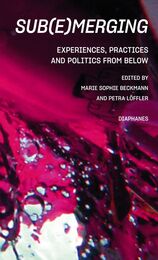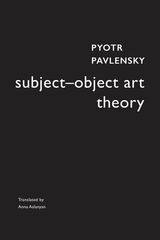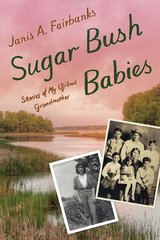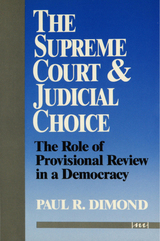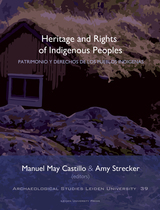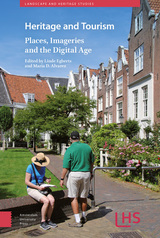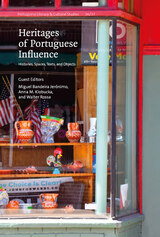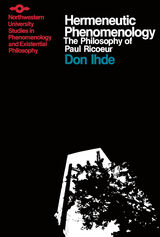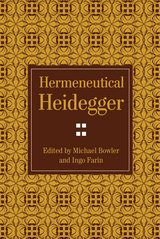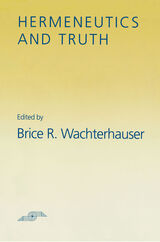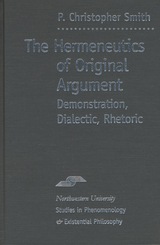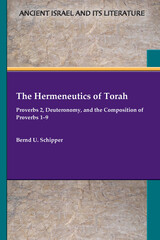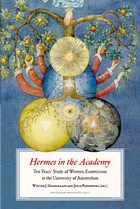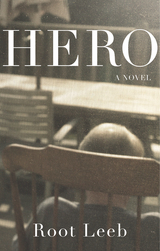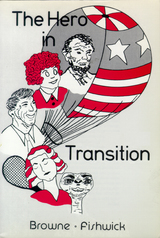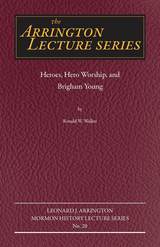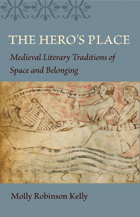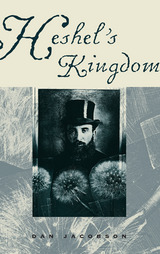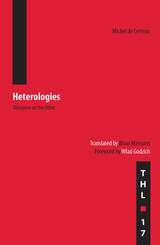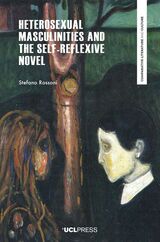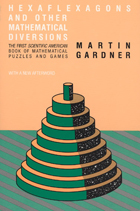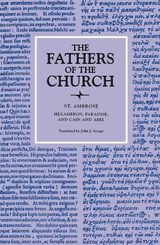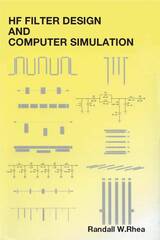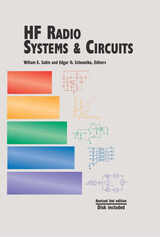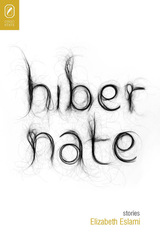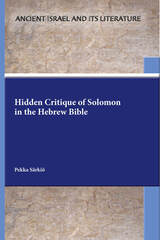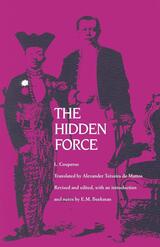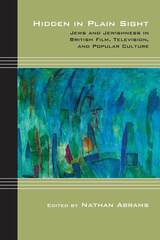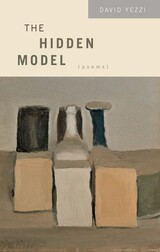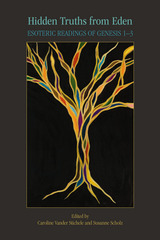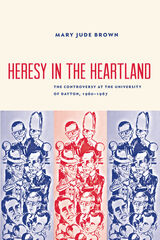 Heresy in the Heartland: The Controversy at The University of Dayton, 1960-67
Mary Jude Brown
Catholic University of America Press, 2022 Heresy in the Heartland is a narrative case study of the 'Heresy' Affair at the University of Dayton, a series of events predominantly in the philosophy department that occurred when tensions between the Thomists and proponents of new philosophies reached crisis stage in fall 1966. The controversy culminated in a letter written by a lay assistant professor to the Cincinnati archbishop, Karl J. Alter. In the letter, the professor cited a number of instances where “erroneous teachings” were “endorsed” or “openly advocated” by four lay faculty members. Concerned about the pastoral impact on the University of Dayton community, the professor asked the archbishop to conduct an investigation. How the University weathered this controversy, the second of three major controversies to hit Catholic higher education within three years (St. John’s University, University of Dayton and the Curran affair at Catholic University of America), is of interest to faculty and administrators in Catholic higher education who continue to struggle with defining what it means to be a “Catholic” university, with the relationship of Catholic universities to the Church at large and the hierarchy in particular, and with Church teachings that conflict with the culture we live in such as immigration, the environment and sexual ethics.
The story is told in chronological order by the participants in the controversy - faculty, administrators, students and clergy - using the words of those involved. Heresy in the Heartland concludes with a synopsis of what happened at the University of Dayton and draws some lessons for the future of Catholic higher education.
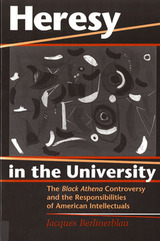 Heresy in the University: The Black Athena Controversy and the Responsibilities of American Intellectuals
Jacques Berlinerblau
Rutgers University Press, 1999 One of the most controversial books to come out of the academy in the last fifteen years is Martin Bernal's Black Athena. It has been a true cause celebre. Afrocentrists have both praised the book and claimed that Bernal stole from the work of black scholars to create his study of the Afroasiastic roots of classical civilization. Classicists feel passionately about what they perceive as an attack from an outsider on the origins not only of ancient Greece but of their own discipline. It seems that everyone has something to say about the book; the question is how many really understand it. In Heresy in the University, Jacques Berlinerblau provides an exegesis of the contents of Black Athena, making it accessible to a wider audience. As he clarifies and restates Bernal's opus, Berlinerblau identifies Bernal's flaws in reasoning and gaps in evidence. He cuts to the heart of Bernal's prose, singling out the key points of Bernal's argument, explaining and arranging them in a cogent manner. Berlinerblau addresses the critics' really important objections, including his own, and links each of them to the appropriate substantive argument in Black Athena. He goes beyond simple summary and exposition to present the underlying --stated and unstated--agendas of Bernal and his critics. Ultimately, he exposes both sides and asks what the flawed reasoning from all concerned reveals about the stakes in this key academic dispute and what that, in turn, says about the modern academy. Jacques Berlinerblau is an assistant professor and director of Judaic studies at Hofstra University.
 The Heresy of the Free Spirit in the Later Middle Ages
Robert E. Lerner
University of Notre Dame Press, 1991 Since its original publication in 1972, The Heresy of the Free Spirit in the Later Middle Ages has been widely recognized as the standard work on the subject in any language.
The Heresy of the Free Spirit is often considered to have been the most important continental European heresy of the fourteenth century. Many historians have described its membership as a league of anarchistic deviants who fomented sexual license and subversion of authority. Free Spirits are supposed to have justified nihilism and megalomania and to have been remote precursors of Bakunin and Nietzsche and twentieth-century bohemians and hippies. This volume examines the Free-Spirit movement as it appeared in its own age, and concludes that it was not a tightly-organized sect but rather a spectrum of belief that emphasized voluntary poverty and quietistic mysticism. Overall, the movement was far more typical of the late-medieval search for God and godliness than is commonly supposed.
 The Heretic of Cacheu: Crispina Peres and the Struggle over Life in Seventeenth-Century West Africa
Toby Green
University of Chicago Press, 2025 Tells the extraordinary story of seventeenth-century West African slave trader Crispina Peres to explore the shifting, sophisticated world in which she lived.
In 1665, Crispina Peres, the most powerful trader in the West African slave-trafficking port of Cacheu, was arrested by the Portuguese Inquisition. Her enemies had conspired to denounce her for taking treatments prescribed by Senegambian healers, the djabakós. But who was Peres? And why was the Inquisition so concerned with policing the faith of a West African woman in today’s Guinea-Bissau?
In The Heretic of Cacheu, award-winning historian Toby Green takes us to the heart of this conundrum, immersing us in the atmosphere of an otherwise distant setting. We learn how people in seventeenth-century Cacheu built their houses; styled their clothes; healed themselves from illness; and worshipped, worked, and played. Green renders the haunting realities of the growing slave trade and the rise of European empires in shocking detail. By the 1650s, the relationships between Europe, West Africa, and the Americas were already old and tangled, with slaving ports, colonies, and military bases having intermingled over many generations. But Cacheu also profoundly troubled this dynamic. It was globally connected to places ranging from China and India to Brazil and Colombia, and women such as Crispina Peres ran the town and challenged the patriarchy of empire.
For the first time, through surviving documents recording Peres’s case, The Heretic of Cacheu lets readers experience the reality of this unique place and time through a remarkable act of historical recovery.
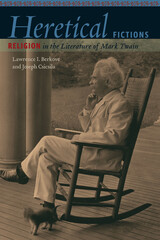 Heretical Fictions: Religion in the Literature of Mark Twain
LAWRENCE I. BERKOVE
University of Iowa Press, 2010 Challenging the prevailing belief that Mark Twain’s position on religion hovered somewhere between skepticism and outright heresy, Lawrence Berkove and Joseph Csicsila marshal biographical details of Twain’s life alongside close readings of his work to explore the religious faith of America’s most beloved writer and humorist. They conclude not only that religion was an important factor in Twain’s life but also that the popular conception of Twain as agnostic, atheist, or apostate is simply wrong. Heretical Fictions is the first full-length study to assess the importance of Twain’s heretical Calvinism as the foundation of his major works, bringing to light important thematic ties that connect the author’s early work to his high period and from there to his late work. Berkove and Csicsila set forth the main elements of Twain’s “countertheological” interpretation of Calvinism and analyze in detail the way it shapes five of his major books—Roughing It, The Adventures of Tom Sawyer, Adventures of Huckleberry Finn, A Connecticut Yankee in King Arthur's Court, and No. 44, The Mysterious Stranger—as well as some of his major short stories. The result is a ground-breaking and unconventional portrait of a seminal figure in American letters.
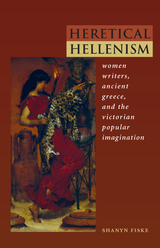 Heretical Hellenism: Women Writers, Ancient Greece, and the Victorian Popular Imagination
Shanyn Fiske
Ohio University Press, 2008 The prevailing assumption regarding the Victorians’ relationship to ancient Greece is that Greek knowledge constituted an exclusive discourse within elite male domains. Heretical Hellenism: Women Writers, Ancient Greece, and the Victorian Popular Imagination challenges that theory and argues that while the information women received from popular sources was fragmentary and often fostered intellectual insecurities, it was precisely the ineffability of the Greek world refracted through popular sources and reconceived through new fields of study that appealed to women writers’ imaginations.
Examining underconsidered sources such as theater history and popular journals, Shanyn Fiske uncovers the many ways that women acquired knowledge of Greek literature, history, and philosophy without formal classical training. Through discussions of women writers such as Charlotte Brontë, George Eliot, and Jane Harrison, Heretical Hellenism demonstrates that women established the foundations of a heretical challenge to traditional humanist assumptions about the uniformity of classical knowledge and about women’s place in literary history.
Heretical Hellenism provides a historical rationale for a more expansive definition of classical knowledge and offers an interdisciplinary method for understanding the place of classics both in the nineteenth century and in our own time.
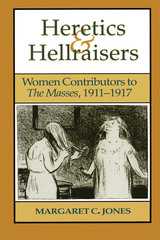 Heretics and Hellraisers: Women Contributors to The Masses, 1911-1917
By Margaret C. Jones
University of Texas Press, 1993 The Masses was the most dynamic and influential left-wing magazine of the early twentieth century, a touchstone for understanding radical thought and social movements in the United States during that era. As a magazine that supported feminist issues, it played a crucial role in shaping public discourse about women's concerns. Women editors, fiction writers, poets, and activists like Mary Heaton Vorse, Louise Bryant, Adriana Spadoni, Elsie Clews Parsons, Inez Haynes Gillmore, and Helen Hull contributed as significantly to the magazine as better-known male figures.
In this major revisionist work, Margaret C. Jones calls for reexamination of the relevance of Masses feminism to that of the 1990s. She explores women contributors' perspectives on crucial issues: patriarchy, birth control, the labor movement, woman suffrage, pacifism, and ethnicity. The book includes numerous examples of the writings and visual art of Masses women and a series of biographical/bibliographical sketches designed to aid other researchers.
 The Heretic's Guide to Global Finance: Hacking the Future of Money
Brett Scott
Pluto Press, 2013 Popular anger against the financial system has never been higher, yet the practical workings of the system remain opaque to many people. The Heretic's Guide to Global Finance aims to bridge the gap between protest slogans and practical proposals for reform.
Brett Scott is a campaigner and former derivatives broker who has a unique understanding of life inside and outside the financial sector. He builds up a framework for approaching it based on the three principles of 'Exploring', 'Jamming' and 'Building', offering a practical guide for those who wish to deepen their understanding of, and access to, the inner workings of financial institutions.
Scott covers aspects frequently overlooked, such as the cultural dimensions of the financial system, and considers major issues such as agricultural speculation, carbon markets and tar-sands financing. Crucially, it also showcases the growing alternative finance movement, showing how everyday people can get involved in building a new, democratic, financial system.
Heretics, Saints and Martyrs
Frederic Palmer
Harvard University Press In these seven essays on one or another aspect of theology. Dr. Palmer has pointed out the bond of unity that exists beneath all our ephemeral systems, the bond of a deep soul-breathing consciousness of close fellowship with God. What may be called the humanization of church history resets in the revelation in it of this unifying divine element. The papers discuss such topics as the Anabaptists and their relation to civil and religious liberty; Mani and dualism; the synoptic, Johannine, and Pauline conceptions of Jesus; Isaac Watts; Joachim of Floris; Angelus Silesius; and Perpetua and Felicitas, Martyrs and Saints.
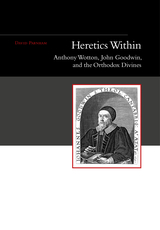 Heretics Within: Anthony Wotton, John Goodwin and the Orthodox Divines
David Parnham
Sussex Academic Press, 2022 When, early in the seventeenth century, the puritan pastor Anthony Wotton started to circulate manuscript statements of his theological revision, he was courting danger. Wotton was at once bold and subtle, a provocation to clerical brethren yet a skilled exponent of their technical disciplines. He addressed matters of fundamental importance: Christ's redemptive suffering and the imputation of justifying righteousness, God's saving grace and the moral law, faith and works, the gracious covenant and the legal covenant. Crucially important, for Wotton, was the interpretation of St. Paul's epistles in relation to the justification of sinners. This book examines Wotton's revisionary writings and the bitter doctrinal controversy that they stimulated, and traces the Wottonian complexion of the theology of John Goodwin, who became, over the course of a period of thirty years, a prolific exponent of unorthodox notions -- perhaps the most provocative of England's learned "heretics" and "blasphemers" in the age of the Long Parliament and the Interregnum. Contemporary responses to Wotton and Goodwin reveal how fixed were the core positions of orthodoxy and how worrisome were the challenges posed to them. Wotton and Goodwin trespassed -- often in the name of John Calvin -- upon some of the borderlands at which unusual uses of technical language became intolerable to the custodians of Calvinist truth. At these points, the contingency of theological language was uncomfortably exposed, and interlocutors discovered how rubbery were the signifiers of doctrine and how unstable the communication of "truth" could be.
 The Heritage: A Daughter's Memoir Of Louis Bromfield
Ellen Bromfield Geld
Ohio University Press, 1999 Louis Bromfield, the Pulitzer Prize-winning writer, established one of the most significant homesteads in Ohio on his Malabar Farm. Today it receives thousands of visitors a year from all over the world; once the site of the wedding of Humphrey Bogart and Lauren Bacall, it was a successful prototype of experimental and conservation farming.
This lively, outspoken, and affectionate memoir preserves all things Louis Bromfield fought for or against in a life marked by surging vitality and gusto. He came from an Ohio family whose roots were in the land before the land was lost. He had his father's love of the land, and from his willful mother a hunger to know the world. From the New York City of theaters, concerts, parties, and novels, and a life in France that his success allowed, he finally returned to Ohio and established a new order for his family and friends, and for his followers, a new orbit into which they were drawn.
Ellen Bromfield Geld wrote a memoir of the man who was Louis Bromfield, father and friend, tyrant and “Boss,” alive always to whatever was worth responding to in people and in places, yet complex and lonely as a writer must essentially be to work at his craft. Now revived in paperback thirty-five years after its first publication, The Heritage remains a moving tribute and the recreation of a remarkable human being.
 Heritage and Change: Southern Paiute and Chemehuevi Nuwuvi Basketry, 1870 to 2022
Catherine S. Fowler
Museum of New Mexico Press, 2025 The Southern Paiute and Chemehuevi people have lived for countless generations in the southern Great Basin of western North America in a homeland that extends to parts of Utah, Nevada, California, and northern Arizona. Referred to by a variety of names and spellings in the EuroAmerican literature, they are the people whose name for themselves is “Nuwu”—or collectively, “Nuwuvi.” Nuwuvi basket weaving is a traditional and evolving art form that connects weavers to their ancestors and to the natural world.
This publication, years in the making, includes chapters by Catherine S. Fowler, Judith W. Finger, John J. Kania, and Larry Dalrymple that explore the cultural history of the Nuwuvi people, the work of known weavers, and the characteristics and development of Nuwuvi basketry from the 1870s to 2022. It focuses particularly on the fine-coiled work produced during the American Arts and Crafts Movement period of the 1890s to 1930s. Working separately and together, the authors analyzed over 1,200 baskets in museum collections across the United States, from the Smithsonian Institution in Washington, D.C., to the Lost City Museum in Henderson, Nevada. They researched the baskets’ collectors—from John Wesley Powell to Helen J. Stewart and Isabel T. Kelly—and conducted interviews with contemporary weavers. In order to give the reader as broad a visual understanding of Nuwuvi coiled baskets as possible, images of baskets from the collection of Judith and Andrew Finger are included. The book is lavishly illustrated with archival and contemporary photographs.
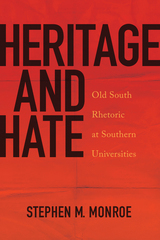 Heritage and Hate: Old South Rhetoric at Southern Universities
Stephen M. Monroe
University of Alabama Press, 2021 How southern universities continue to wrestle with the words and symbols that embody and perpetuate Old South traditions
The US South is a rhetorical landscape that pulsates with division, a place where words and symbols rooted in a deeply problematic past litter the ground and contaminate the soil. Stephen M. Monroe’s provocative study focuses on predominantly white southern universities where Old South rhetoric still reverberates, where rebel flags cast a shadow over attempts at racial harmony, school cheers to reinforce racial barriers, and student yearbooks to create and protect
an oppressive culture of exclusion. Across the region, in college towns like Oxford, Mississippi; Athens, Georgia; and Tuscaloosa, Alabama—communities remain locked in a difficult, recursive, and inherently rhetorical struggle that wrestles with this troubling legacy.
Words, images, and symbols are not merely passive artifacts of southern history, Monroe argues, but formative agents that influence human behavior and shape historical events. Drawing on research from many disciplines, including rhetoric, southern studies, history, sociology, and African American studies, Monroe develops the concept of confederate rhetoric: the collection of Old South words and symbols that have been and remain central to the identity conflicts of the South. He charts examples of such rhetoric at work in southern universities from Reconstruction to the present day.
Tracing the long life and legacy of Old South words and symbols at southern universities, this book provides close and nuanced analysis of the rhetorical conflicts that have resulted at places like the University of Mississippi and the University of Missouri. Some conflicts erupted during the civil rights movement, when the first African American students sought admission to all-white southern universities and colleges, and others are brewing now, as African
Americans (and their progressive white peers) begin to cement genuine agency and voice in these communities. Tensions have been, and remain, high.
Ultimately, Monroe offers hope and optimism, contending that if words and symbols can be used to damage and divide, then words and symbols can also be used to heal and unify. Racist rhetoric can be replaced by antiracist rhetoric. The old South can become new. While resisting naïve or facile arguments, Heritage and Hate ultimately finds the promise of progress within the tremendous power of language.
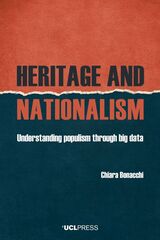 Heritage and Nationalism: Understanding Populism through Big Data
Chiara Bonacchi
University College London, 2021 An empirically grounded analysis of the repurposing of ancient and medieval European history in digital-age populism.
How was the Roman Empire invoked in Brexit Britain and in the United States during Donald Trump’s presidency, and to what purpose? And why is it critical to answer these kinds of questions? Heritage and Nationalism explores how people’s perceptions and experiences of the ancient past shape political identities in the digital age. It examines the multiple ways in which politicians, parties, and private citizens mobilize aspects of the Iron Age, Roman, and Medieval past of Britain and Europe to include or exclude others based on culture, religion, class, race, and ethnicity.
The book uses quantitative and qualitative methods to investigate how premodern periods are leveraged to support or oppose populist-nationalist arguments as part of social media discussions concerning Brexit, the Italian Election of 2018, and the US-Mexican border debate in the United States. Analyzing millions of tweets and Facebook posts, comments, and replies, this book is the first to use big data to answer questions about public engagement with the past and identity politics. The findings and conclusions revise and reframe the meaning of populist nationalism today and help to build a shared basis for the democratic engagement of citizens in public life in the future. The book offers a fascinating and unmissable read for anyone interested in how the past and its contemporary legacy, or heritage, influence our political thinking and feeling in a time of hyper-connectivity.
Heritage and Rights of Indigenous Peoples
Edited by Manuel May Castillo and Amy Strecker
Leiden University Press, 2017 In 2007, the United Nations adopted the UN Declaration on the Rights of Indigenous People, a landmark political recognition of indigenous rights. A decade later, this book looks at the status of those rights internationally. Written jointly by indigenous and non-indigenous scholars, the chapters feature case studies from four continents that explore the issues faced by Indigenous Peoples through three themes: land, spirituality, and self-determination.
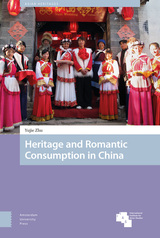 Heritage and Romantic Consumption in China
Yujie Zhu
Amsterdam University Press, 2018 The drums beat, an old man in a grand robe mutters incantations and three brides on horseback led by their grooms on foot proceed to the Naxi Wedding Courtyard, accompanied, watched and photographed the whole way by tourists, who have bought tickets for the privilege. The traditional wedding ceremonies are performed for the ethnic tourism industry in Lijiang, a World Heritage town in southwest China. This book examines how heritage interacts with social-cultural changes and how individuals perform and negotiate their identities through daily practices that include tourism, on the one hand, and the performance of ethnicity on the other. The wedding performances in Lijiang not only serve as a heritage 'product' but show how the heritage and tourism industry helps to shape people's values, dreams and expectations. This book also explores the rise of 'romantic consumerism' in contemporary China. Chinese dissatisfaction with the urban mundane leads to romanticized interests in practices and people deemed to be natural, ethnic, spiritual and aesthetic, and a search for tradition and authenticity. But what, exactly, are tradition and authenticity, and what happens to them when they are turned into performance?
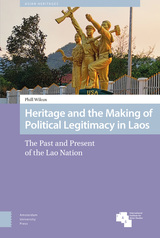 Heritage and the Making of Political Legitimacy in Laos: The Past and Present of the Lao Nation
Phill Wilcox
Amsterdam University Press, 2021 The Lao People’s Democratic Republic is nearly fifty years old, and one of the few surviving one-party socialist states. Nearly five decades on from its revolutionary birth, the Lao population continues to build futures in and around a political landscape that maintains socialist rhetoric on the one hand and capitalist economics on the other. Contemporary Lao politics is marked by the use of cultural heritage as a source of political legitimacy. Researched through long-term detailed ethnography in the former royal capital of Luang Prabang, itself a UNESCO-recognized World Heritage Site since 1995, this book takes a fresh look at issues of legitimacy, heritage, and national identity for different members of the Lao population. It argues that the political system has become sufficiently embedded to avoid imminent risk of collapse but suggests that it is facing new challenges primarily in the form of rising Chinese influence in Laos.
Heritage and Tourism: Places, Imageries and the Digital Age
Edited by Linde Egberts and Maria D. Alvarez
Amsterdam University Press, 2018 Heritage and tourism mutually reinforce each other, with the presentation of heritage at physical sites mirrored by the ways heritage is presented on the internet. This interdisciplinary book uses humanities and social sciences to analyse the ways that heritage is branded and commodified, how stakeholders organise place brands, and how digital strategies shape how visitors appreciate heritage sites. The book covers a wide geographic diversity, offering the reader the chance to find cross-cutting themes and area-specific features of the field.
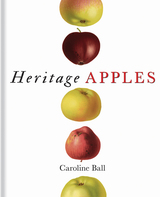 Heritage Apples
Caroline Ball
Bodleian Library Publishing, 2019 In the course of the past century we have lost much of our rich heritage of orchard fruits. But with taste once again triumphing over shelf-life and sparking a renewed interest in local varieties, people around the world are rediscovering the delights of that most delicious and adaptable fruit: the apple.
This book features apple varieties from the Herefordshire Pomona that are still cultivated today. The Pomona—an exquisitely illustrated book of apples and pears—was published at the height of the Victorian era by a small rural naturalists’ club. Its beautiful illustrations and authoritative text are treasured by book collectors and apple experts alike. From the Blenheim Orange and Worcester Pearmain to the less fêted yet scrumptious Ribston Pippin, Margil, and Pitmaston Pine Apple, Heritage Apples is illustrated with the Pomona’s stunning paintings and tells the intriguing stories behind each variety, how they acquired their names, and their merits for eating, cooking, or making cider. Also featuring practical advice on how to choose and grow your own trees, this is the perfect book for apple-lovers and growers alike.
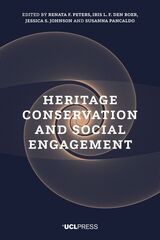 Heritage Conservation and Social Engagement
Edited by Rentata F. Peters, Iris L. F. den Boer, Jessica S. Johnson, and Susanna Pancaldo
University College London, 2020 Heritage Conservation and Social Engagement explores different kinds of engagement, participation, access, and creative use of resources motivated by the practice of conservation; and offers ethical and practical perspectives from which to approach cultural heritage projects by exploring the complexities of cross-disciplinary collaborations. Such collaborations are often influenced by the colonial baggage of museums, and their effectiveness can vary based on context, objectives, methods, and available resources. However, efforts to promote inclusion and engagement through museum collections and the broader heritage sector are becoming even more socially relevant. The heritage sector has tools and ability to help fight prejudices that are invariably based on misinformation or manipulation of facts, and this book joins those efforts, in the understanding that nothing can be done without dialogue and engagement.
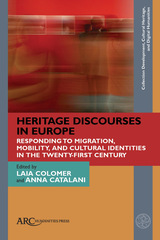 Heritage Discourses in Europe: Responding to Migration, Mobility, and Cultural Identities in the Twenty-First Century
Laia Colomer
Arc Humanities Press, 2020 Debates about migration and heritage largely discuss how newcomers integrate into the host societies, and how they manage (or not) to embrace local and national heritage as part of their new cultural landscape. But relatively little attention hasbeen paid to how the host society is changing culturally because its new citizens have collective memories constructed upon different geographies/events, and emotional attachments to non-European forms of cultural heritages. This short book explores how new cultural identities in transformation are challenging the notions and the significance of heritage today in Europe. It asks the questions: How far are contemporary Authorized Heritage Discourses in Europe changing due to migration and globalization? Could heritage sites and museums be a meeting point for socio-cultural dialogue between locals and newcomers? Could heritage become a source of creative platforms for other heritage discourses, better "tuned" with today’s European multicultural profile?
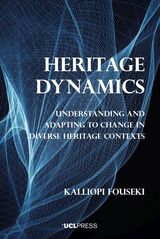 Heritage Dynamics: Understanding and Adapting to Change in Diverse Heritage Contexts
Kalliopi Fouseki
University College London, 2022 A systemic reconsideration of the formation and preservation of heritage.
As a sociocultural concept, heritage flows through cycles of emergence, change, disappearance, and revival. These lifecycles are influenced by heritage environments such as museums, landscapes, cities, and intangible networks of cultural circulation. In Heritage Dynamics, Kalliopi Fouseki develops a new theoretical and methodological framework that will enable heritage scholars and practitioners to unpack the ways and conditions under which heritage changes. Under the contexts of urban cities, residential buildings, museum collections, and subjects of intangible heritage especially concerning flamenco, this work re-orients the consideration of heritage as an object, process, or discourse, towards a more systemic thinking that captures the complexity of this historical-cultural force.
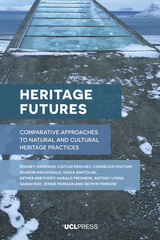 Heritage Futures: Comparative Approaches to Natural and Cultural Heritage Practices
Rodney Harrison, Caitlin Desilvey, Cornelius Holtorf, Sharon MacDonald, Nadia Bartolini, Esther Breithoff, Harald Fredheim, Antony Lyons, Sarah May, Jennie Morgan, and Sefryn Penrose
University College London, 2020 Preservation of natural and cultural heritage is often said to be something that is done for the future, or on behalf of future generations, but the precise relationship of such practices to the future is rarely reflected upon. Heritage Futures draws on research undertaken over four years by an interdisciplinary, international team of sixteen researchers and more than twenty-five partner organizations to explore the role of heritage and heritage-like practices in building future worlds. Engaging broad themes such as diversity, transformation, profusion and uncertainty, Heritage Futures aims to understand how a range of conservation and preservation practices across a number of countries assemble and resource different kinds of futures, and the possibilities that emerge from such collaborative research for alternative approaches to heritage in the Anthropocene. Case studies include the cryopreservation of endangered DNA in frozen zoos, nuclear waste management, seed biobanking, landscape rewilding, social history collecting, space messaging, endangered language documentation, built and natural heritage management, household keeping and discarding practices, and world heritage site management.
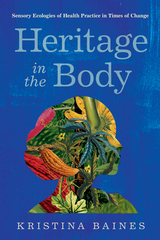 Heritage in the Body: Sensory Ecologies of Health Practice in Times of Change
Kristina Baines
University of Arizona Press, 2024 Through storytelling, ethnography, and interviews, Heritage in the Body examines the links between health and heritage in times of change. Using a series of case studies, anthropologist Kristina Baines tells the intimate stories of how Indigenous Maya and Garifuna Belizeans—both in Belize and in the United States—navigate macro-level processes such as economic development, climate change, political shifts, and global health crises in the context of changes in their own lives.
Employing an embodied ecological heritage (EEH) framework, Baines explores the links between health and heritage as a fluid series of ecological practices. Health and wellness are holistically defined and approached from a phenomenological perspective. Baines focuses on how sensory experiences change the body through practice and provides insights into community-driven alternatives as a means to maintain and support happy, healthy lives.
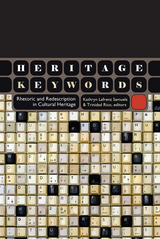 Heritage Keywords: Rhetoric and Redescription in Cultural Heritage
Kathryn Lafrenz Samuels
University Press of Colorado, 2015 Situated at the intersection of scholarship and practice, Heritage Keywords positions cultural heritage as a transformative tool for social change. This volume unlocks the persuasive power of cultural heritage—as it shapes experiences of change and crafts present and future possibilities from historic conditions—by offering new ways forward for cultivating positive change and social justice in contemporary social debates and struggles. It draws inspiration from deliberative democratic practice, with its focus on rhetoric and redescription, to complement participatory turns in recent heritage work. Through attention to the rhetorical edge of cultural heritage, contributors to this volume offer innovative reworkings of critical heritage categories. Each of the fifteen chapters examines a key term from the field of heritage practice—authenticity, civil society, cultural diversity, cultural property, democratization, difficult heritage, discourse, equity, intangible heritage, memory, natural heritage, place, risk, rights, and sustainability—to showcase the creative potential of cultural heritage as it becomes mobilized within a wide array of social, political, economic, and moral contexts. This highly readable collection will be of interest to students, scholars, and professionals in heritage studies, cultural resource management, public archaeology, historic preservation, and related cultural policy fields.
Contributors include Jeffrey Adams, Sigrid Van der Auwera, Melissa F. Baird, Alexander Bauer, Malcolm A. Cooper, Anna Karlström, Paul J. Lane, Alicia Ebbitt McGill, Gabriel Moshenska, Regis Pecos, Robert Preucel, Trinidad Rico, Cecelia Rodéhn, Joshua Samuels, Kathryn Lafrenz Samuels, and Klaus Zehbe.
 The Heritage Machine: Fetishism and Domination in Maragateria, Spain
Pablo Alonso Gonzalez
Pluto Press, 2018 Heritage research is often based on the assumption that heritage is something “given” to us in what is being handed down from the past, and that it is good and valuable in its own right. However, by looking at the historical and cultural roots of heritage and its development through the Enlightenment, modernity, and capitalism, Pablo Alonso Gonzalez shows that it is in fact a system deeply embedded in capitalist logic and pervaded by fetishistic social relationships.
Focusing on a case study in the region of Maragatería, Spain, Gonzalez explores the ethnic and racial discrimination faced by the local population in the context of Spanish nationalism and shows how this hostile dynamic shaped what we recognize as the region’s heritage today. Challenging widespread notions about how and why we preserve traditional cultures, The Heritage Machine rethinks the relations between heritage studies and converging disciplines, from anthropology to cultural and memory studies.
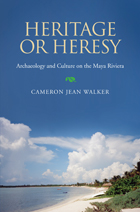 Heritage or Heresy: Archaeology and Culture on the Maya Riviera
Cameron Jean Walker
University of Alabama Press, 2008 How can we effectively interpret and present one culture to another without stereotypes or over-simplifications? What is the best way to present an authoritative version of a national heritage without also endangering ancient sites or being insensitive to the local customs, beliefs, and religious practices of the indigenous peoples? This volume addresses the ongoing thrust in archaeology to take the next step after preserving the past: interpreting that past for the future. That future audience includes both local citizens and tourists who may have little background in archaeology, anthropology, or the history of the culture featured. Walker presents the key components of the anthropological study of tourism as a global phenomenon, with particular emphasis on the more prominent arguments for how and why tourism is a universal and meaningful human activity. The highly controversial topic of authenticity is examined, with special attention given to how "authentic" has been defined and how it relates to the ways in which archaeological sites, artifacts, and cultural traditions are presented--or not presented--to the visiting public. The ephemeral promise of “authenticity” drives the heritage tourism industry, which is a key consideration for the long term economy of the Maya Riviera and elsewhere. Through analysis of seven archaeological sites on the Yucatan peninsula that are open to heritage touring, Walker reveals the planned growth of the Maya Riviera since the early 1970s and examines the impact of international tourism on both ancient structures and the contemporary Maya people and culture.
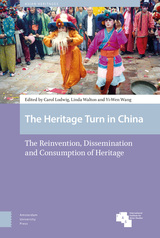 The Heritage Turn in China: The Reinvention, Dissemination and Consumption of Heritage
Carol Ludwig
Amsterdam University Press, 2020 The Heritage Turn in China: The Reinvention, Dissemination and Consumption of Heritage focuses on heritage discourse and practice in China today as it has evolved from the ‘heritage turn’ that can be dated to the 1990s. Using a variety of disciplinary approaches to regionally and topically diverse case studies, the contributors to this edited volume show how particular versions of the past are selected, (re)invented, disseminated and consumed for contemporary purposes. These studies explore how the Chinese state utilises heritage not only for tourism, entertainment, educational and commercial purposes, but also as part of broader political strategies on both the national and international stage. Together, they argue that the Chinese state deploys modes of heritage governance to construct new modernities while strengthening collective national identity in support of both its political legitimacy and its claim to status as an international superpower. The authors also consider ways in which state management of heritage is contested by some stakeholders whose embrace of heritage has a different purpose and meaning.
Heritages of Portuguese Influence: Histories, Spaces, Texts, and Objects
Guest edited by Miguel Bandeira Jerónimo, Anna M. Klobucka, and Walter Rossa
Tagus Press, 2022 Situated in the interdisciplinary field of Critical Heritage Studies, this special issue gathers articles originating in diverse areas of scholarship (and in many cases fostering productive cross-fertilizations among them) that deal with the multifaceted postcolonial and globalized heritages of the Portuguese empire and Lusophone diasporas. The contributors discuss “heritage” and “influence” critically, as cultural and political arguments and practices, and as historical manifestations entailing diverse perspectives, motivations, and consequences, formed in colonial and postcolonial situations, imagining the past, the present, and the future.
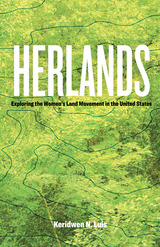 Herlands: Exploring the Women's Land Movement in the United States
Keridwen N. Luis
University of Minnesota Press, 2018 How women-only communities provide spaces for new forms of culture, sociality, gender, and sexuality
Women’s lands are intentional, collective communities composed entirely of women. Rooted in 1970s feminist politics, they continue to thrive in a range of ways, from urban households to isolated rural communes, providing spaces where ideas about gender, sexuality, and sociality are challenged in both deliberate and accidental ways. Herlands, a compelling ethnography of women’s land networks in the United States, highlights the ongoing relevance of these communities as vibrant cultural enclaves that also have an impact on broader ideas about gender, women’s bodies, lesbian identity, and right ways of living.
As a participant-observer, Keridwen N. Luis brings unique insights to the lives and stories of the women living in these communities. While documenting the experiences of specific spaces in Massachusetts, Tennessee, New Mexico, and Ohio, Herlands also explores the history of women’s lands and breaks new ground exploring culture theory, gender theory, and how lesbian identity is conceived and constructed in North America. Luis also discusses how issues of race and class are addressed, the ways in which nudity and public hygiene challenge dominant constructions of the healthy or aging body, and the pervasive influence of hegemonic thinking on debates about transgender women. Luis finds that although changing dominant thinking can be difficult and incremental, women’s lands provide exciting possibilities for revolutionary transformation in society.
 Herman Dooyeweerd: Christian Philosopher of State and Civil Society
Jonathan Chaplin
University of Notre Dame Press, 2011
The twentieth-century Dutch philosopher Herman Dooyeweerd (1894-1977) left behind an impressive canon of philosophical works and has continued to influence a scholarly community in Europe and North America, which has extended, critiqued, and applied his thought in many academic fields. Jonathan Chaplin introduces Dooyeweerd for the first time to many English readers by critically expounding Dooyeweerd's social and political thought and by exhibiting its pertinence to contemporary civil society debates.
Chaplin begins by contextualizing Dooyeweerd's thought, first in relation to present-day debates and then in relation to the work of the Dutch philosopher Abraham Kuyper (1837-1920). Chaplin outlines the distinctive theory of historical and cultural development that serves as an essential backdrop to Dooyeweerd's substantive social philosophy; examines Dooyeweerd's notion of societal structural principles; and sets forth his complex classification of particular types of social structure and their various interrelationships. Chaplin provides a detailed examination of Dooyeweerd's theory of the state, its definitive nature, and its proper role vis-a-vis other elements of society. Dooyeweerd's contributions, Chaplin concludes, assist us in mapping the ways in which state and civil society should be related to achieve justice and the public good.
"This superb study simultaneously introduces and critically engages the work of one of the most important and neglected Christian thinkers of the twentieth century, while showing its connection to the pluralist tradition and bringing it to bear on the contemporary debate about civil society. More than just providing an overview of Dooyeweerd's thought, it seeks to advance his intellectual project and show its contemporary relevance. It is essential reading not only for those interested in the neo-Calvinist tradition, but for anyone interested in Christian social thought, structural pluralism, or the nature and fate of civil society." --Kenneth L. Grasso, Texas State University
"The subtlety, scope, and insightfulness of Dooyeweerd's social philosophy were unparalleled among Protestant thinkers in the past century. Yet his contributions are not well known. Jonathan Chaplin promises to remedy this neglect. His lucid and masterful study brings a new and transformative voice to contemporary debates about the future of a democratic society." --Lambert Zuidervaart, Institute for Christian Studies and University of Toronto
"Finally, an authoritative book that brings to brilliant light and life Herman Dooyeweerd's Christian philosophy of law, politics, and society. For the past half century, the profound and original teachings of this prolific Dutch sage have been lost on most readers. Jonathan Chaplin has rescued Dooyeweerd from his own obscure prose, poor translations, and cultic mystique to reveal his astonishing and engaging insights into our lives as persons and peoples, rulers and citizens, preachers and parishioners, parents and children. This will be the go-to book on Dooyeweerd for many years to come." --John Witte, Jr., Emory University
"Herman Dooyeweerd was both deep and original. Much of his writing is an articulation of rather undeveloped lines of thought in his Dutch predecessor, Abraham Kuyper. In the course of his exposition, Chaplin effectively highlights Dooyeweerd's significance for a theory of civil society and for present-day social theory in general." --Nicholas Wolterstorff, Yale University and the Institute for Advanced Studies, University of Virginia
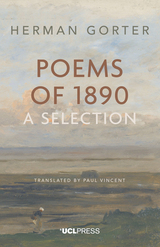 Herman Gorter: Poems of 1890: A Selection
Herman Gorter
University College London, 2015 Commonly viewed as a revolutionary and propagandist Herman Gorter (1864–1927) is often overlooked despite his lasting contribution to Dutch poetry. This selection of thirty-one poems, translated by Paul Vincent, focuses on Gorter’s experimental love and nature lyrics in Poems of 1890, and the Introduction sets the poems in the context of his earlier seminal work 'Mei' (May) as well as his often neglected Socialist verse. The lyrical expansiveness, consistent use of rhyme and vivid imagery of the Dutch landscape that characterises 'Mei' evolves into more fragmentary verse in Poems of 1890, and the joyful celebratory tone of Gorter’s poetry increasingly co-exists with a sense of isolation and introspection. This can be viewed in the context of a rapidly changing political scene in Europe in the prelude to the First World War and the Russian Revolution. This is a valuable collection that revisits Gorter’s literary and political legacy, and introduces English-speaking readers to a selection of his most accessible and lyrical poems
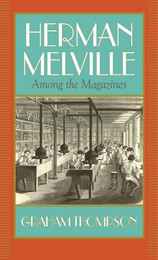 Herman Melville: Among the Magazines
Graham Thompson
University of Massachusetts Press, 2018 What I feel most moved to write, that is banned,—it will not pay. Yet, altogether, write the other way I cannot. Herman Melville wrote these words as he struggled to survive as a failing novelist. Between 1853 and 1856, he did write “the other way,” working exclusively for magazines. He earned more money from his stories than from the combined sales of his most well known novels, Moby-Dick, Pierre, and The Confidence-Man.
In Herman Melville Graham Thompson examines the author's magazine work in its original publication context, including stories that became classics, such as “Bartelby, the Scrivener” and “Benito Cereno,” alongside lesser-known work. Using a concept he calls “embedded authorship,” Thompson explores what it meant to be a magazine writer in the 1850s and discovers a new Melville enmeshed with forgotten materials, editors, writers, and literary traditions. He reveals how Melville responded to the practical demands of magazine writing with dazzling displays of innovation that reinvented magazine traditions and helped create the modern short story.
 Herman Melville: Modernity and the Material Text
Katie McGettigan
University of New Hampshire Press, 2018 In this imaginative book, Katie McGettigan argues that Melville's novels and poetry demonstrate a sustained engagement with the physical, social, and economic materiality of industrial and commercial forms of print. Further, she shows that this "aesthetics of the material text," central both to Melville's stylistic signature and to his innovations in form, allows Melville to explore the production of selfhood, test the limits of narrative authenticity, and question the nature of artistic originality.
Combining archival research in print and publishing history with close reading, McGettigan situates Melville's works alongside advertising materials, magazine articles, trade manuals, and British and American commentary on the literary industry to demonstrate how Melville's literary practice relies on and aestheticizes the specific conditions of literary production in which he worked. For Melville, the book is a physical object produced by particular technological processes, as well as an entity that manifests social and economic values. His characters carry books, write on them, and even sleep on them; they also imagine, observe, and participate in the buying and selling of books. Melville employs the book's print, paper, and binding—and its market circulations—to construct literary figures, to shape textual form, and to create irony and ambiguity.
Exploring the printed book in Melville's writings brings neglected sections of his poetry and prose to the fore and invites new readings of familiar passages and images. These readings encourage a reassessment of Melville's career as shaped by his creative engagements with print, rather than his failures in the literary marketplace. McGettigan demonstrates that a sustained and deliberate imaginative dialogue with the material text is at the core of Melville's expressive practice and that, for Melville, the printed book served as a site for imagining the problems and possibilities of modernity.
Hardcover is un-jacketed.
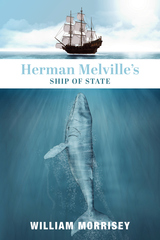 Herman Melville's Ship of State
will morrisey
St. Augustine's Press, 2020 William Morrisey unravels Melville’s “loomings” of the great whale, showing them to be important threads of politics and theories of governance. The Young America of Melville’s day valorized popular sovereignty such that moral law suppressed by the majority rule was bringing America to state of being that could only then be ruled by the mightiest of the mighty––the great Leviathan, who reigns in the boundless chaotic sea separated from “stable land.” The force of the created world and the necessary ordering achieved through conquest are dominating themes of Melville’s great tale, but as Morrisey observes approaching the great whale, ruler of the untamable seas, is for captain (ruler) an opportunity to destroy it. But for the sailor (the ruled) being close to the white whale is a moment for understanding, and in turn of being understood. Yet in what sense is being seen, for human beings of moral bearings, not also an impulse to self-impose? “The modern Ishmael wants to see, not to kill, perhaps to be seen, and surely not to be killed. Americans too need to come to terms with the white whale, if they are to perceive reality as it is without bringing destruction upon themselves.” Is Melville proposing an utterly new philosophy of ruler and ruled, of a proper gauge of the immeasurable chaos that is nature?
“Does Melville also intend to be a founder in the ‘New World’?” Morrisey’s study is a compelling look at the early political moments of a new nation, but one that at the time perceived itself as already aging and maturing in the process of political voyage and adventure. Dangers lie ahead, Melville seems to warn, and in his disenchantment of the vigor of the Young America he once endorsed he tells the story of what really happens when democracy is idealized and the surrounding waters of chaos are thereby veiled; and yet also of what happens when one would seek to command the chaos only to transform into the unpredictably destructive prey he pursues, especially under the guise of moral outrage.
Melville, like Ishmael, urges a new vision of both God and nature, and challenges the notion of rule in all its expressions. Americans, the people of the New World, are invited to be unafraid, but also careful. In wandering as on the open waters one wonders, beyond civic boundaries and conventions, and in that wonder one may finally come face to face with what is good and grand––but in beholding the great white whale, can one resist the urge to conquest, now that he is likewise by the leviathan beholden? Is the rule of man and the coronation of a specific dialectic of power an untenable victory, given that “‘Nature is nobody’s ally’: it wounds or kills any person or nation that violates it, impartially”?
Morrisey writes with lucidity and weaves together elements of history, literature, politics and perhaps his own affinity for Ishmael’s passenger spirit to reveal just how broad and boundless of a narrative Melville’s Moby Dick truly is.
 Herman Melville's Whaling Years
Wilson Heflin
Vanderbilt University Press, 2004 Based on more than a half-century of research, Herman Melville's Whaling Years is an essential work for Melville scholars. In meticulous and thoroughly documented detail, it examines one of the most stimulating periods in the great author's life--the four years he spent aboard whaling vessels in the Pacific during the early 1840s. Melville would later draw repeatedly on these experiences in his writing, from his first successful novel, Typee, through his masterpiece Moby-Dick, to the poetry he wrote late in life.
During his time in the Pacific, Melville served on three whaling ships, as well as on a U.S. Navy man-of-war. As a deserter from one whaleship, he spent four weeks among the cannibals of Nukahiva in the Marquesas, seeing those islands in a relatively untouched state before they were irrevocably changed by French annexation in 1842. Rebelling against duty on another ship, he was held as a prisoner in a native calaboose in Tahiti. He prowled South American ports while on liberty, hunted giant tortoises in the Galapagos Islands, and explored the islands of Eimeo (Moorea) and Maui. He also saw the Society and Sandwich (Hawaiian) Islands when the Western missionary presence was at its height.
Heflin combed the logbooks of any ship at sea at the time of Melville's voyages and examined nineteenth-century newspaper items, especially the marine intelligence columns, for mention of Melville's vessels. He also studied British consular records pertaining to the mutiny aboard the Australian whaler Lucy Ann, an insurrection in which Melville participated and which inspired his second novel, Omoo.
Distilling the life's work of a leading Melville expert into book form for the first time, this scrupulously edited volume is the most in-depth account ever published of Melville's years on whaleships and how those singular experiences influenced his writing.
Herman Schmalenbach on Society and Experience
Herman Schmalenbach
University of Chicago Press, 1977 Herman Schmalenbach (1885-1950), a friend of Husserl and a scholarly critic of Tönnies and Weber, carried on the tradition of Georg Simmel and ranks as one of the most important representatives of phenomenological society. However, because of historical and political circumstances, Schmalenbach's writings have received little attention either in his native Germany or abroad. Now Günther Lüschen and Gregory P. Stone have provided the first English translations of some of Schmalenbach's most important works. In their introductory essay to this collection, the editors appraise Schmalenbach as scholar, philosopher, and sociologist.
 Hermann Cohen: Writings on Neo-Kantianism and Jewish Philosophy
Edited by Samuel Moyn and Robert Schine
Brandeis University Press, 2021 Hermann Cohen (1842–1918) was among the most accomplished Jewish philosophers of modern times—if not the single most significant. But his work has not yet received the attention it deserves. This newly translated collection of his writings—most of which are appearing in English for the first time—illuminates his achievements for student readers and rectifies lapses in his intellectual reception by prior generations. It presents chapters from Cohen’s Ethics of Pure Will, conflicting interpretations of Cohen by Franz Rosenzweig and Alexander Altmann, and finally the eulogy to Cohen delivered at graveside by Ernst Cassirer. Containing full annotations and selections that concentrate both on the philosophical core of Cohen’s writings and the politics of interpretation of his work at the time of his death and after, Hermann Cohen truly brings to light all of Cohen’s accomplishments.
The Hermaphrodite
Antonio Beccadelli
Harvard University Press, 2010 Antonio Beccadelli (1394–1471), known as Panormita from his native town of Palermo, was appointed court poet to Duke Filippo Maria Visconti (1429), crowned poet laureate by Emperor Sigismund (1432), and ended his days as panegyrist to King Alfonso V of Aragon and Naples, where he founded the first of the Renaissance Academies. The Hermaphrodite, his first work (1425–26), dedicated to Cosimo de' Medici, won him praise and condemnation. Beccadelli was a pioneer in revitalizing the Latin epigram for its powers of abuse and louche eroticism. Its open celebration of vice, particularly sodomy, earned it public burnings, threats of excommunication, banishment to the closed sections of libraries, and a devoted following. Likened to a "precious jewel in a dunghill," The Hermaphrodite combined the comic realism of Italian popular verse with the language of Martial to explore the underside of the early Renaissance.
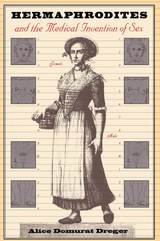 Hermaphrodites and the Medical Invention of Sex
Alice Domurat Dreger
Harvard University Press, 2000 Punctuated with remarkable case studies, this book explores extraordinary encounters between hermaphrodites--people born with "ambiguous" sexual anatomy--and the medical and scientific professionals who grappled with them. Alice Dreger focuses on events in France and Britain in the late nineteenth century, a moment of great tension for questions of sex roles. While feminists, homosexuals, and anthropological explorers openly questioned the natures and purposes of the two sexes, anatomical hermaphrodites suggested a deeper question: just how many human sexes are there? Ultimately hermaphrodites led doctors and scientists to another surprisingly difficult question: what is sex, really?
Hermaphrodites and the Medical Invention of Sex takes us inside the doctors' chambers to see how and why medical and scientific men constructed sex, gender, and sexuality as they did, and especially how the material conformation of hermaphroditic bodies--when combined with social exigencies--forced peculiar constructions. Throughout the book Dreger indicates how this history can help us to understand present-day conceptualizations of sex, gender, and sexuality. This leads to an epilogue, where the author discusses and questions the protocols employed today in the treatment of intersexuals (people born hermaphroditic). Given the history she has recounted, should these protocols be reconsidered and revised?
A meticulously researched account of a fascinating problem in the history of medicine, this book will compel the attention of historians, physicians, medical ethicists, intersexuals themselves, and anyone interested in the meanings and foundations of sexual identity.
Hermeneutical Heidegger
Edited by Michael Bowler and Ingo Farin
Northwestern University Press, 2016 Hermeneutical Heidegger critically examines and confronts Heidegger's hermeneutical approach to philosophy and the history of philosophy. Heidegger's work, both early and late, has had a profound impact on hermeneutics and hermeneutical philosophy. The essays in this volume are striking in the way they exhibit the variety of perspectives on the development and role of hermeneutics in Heidegger's work, allowing a multiplicity of views on the nature of hermeneutics and hermeneutical philosophy to emerge. As Heidegger argues, the rigor and strength of philosophy do not consist in the development of a univocal and universal method, but in philosophy's ability to embrace—not just tolerate—the questioning of its basic concepts. The essays in Hermeneutical Heidegger are exemplars of this kind of rigor and strength.
Hermeneutics and Truth
Brice R. Wachterhauser
Northwestern University Press, 1994 The claim that all human thought involves "interpretation," that all human thought is in some way relative to a contingent context of cognitive, theoretical, practical, and aesthetic considerations, has become widely accepted, but what we understand by "truth" and how we should best pursue it are questions raised with renewed force once a hermeneutical starting point has been embraced. Brice R. Wachterhauser's collection Hermeneutics and Truth is an attempt to contribute to this conversation.
No thinkers have wrestled with the issue of truth and interpretation in more illuminating ways for the Continental tradition of philosophy than Heidegger and Gadamer. Hermeneutics and Truth is a dual focus on Heidegger and Gadamer, but it concentrates primarily on Gadamer's efforts to think through the issue of truth for hermeneutics and only secondarily on Heidegger's thought on this issue.
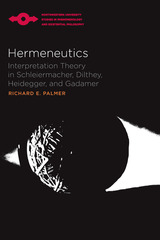 Hermeneutics: Interpretation Theory in Schleiermacher, Dilthey, Heidegger, and Gadamer
Richard E. Palmer
Northwestern University Press, 1969 Hermeneutics introduces English-speaking readers to a field of increasing importance in contemporary philosophy and theology—hermeneutics, the theory of understanding, or interpretation. Hermeneutics is concerned with the character of understanding, especially as it is related to interpreting linguistic texts. It goes beyond mere philological methodology, however, to questions of the philosophy of language, the nature of historical understanding, and ultimately the roots of interpretation in existential understanding.
Palmer principally treats the conception of hermeneutics enunciated by Heidegger and developed into a “philosophical hermeneutics” by Hans-Georg Gadamer. He provides a brief overview of the field of hermeneutics by surveying some half-dozen alternate definitions of the term and by examining in detail the contributions of Friedrich Schleiermacher and Wilhelm Dilthey. In the “Manifesto” which concludes the book, Palmer suggests the potential significance of hermeneutics for literary interpretation.
When the context of interpretation is pressed to its limits, hermeneutics becomes the philosophical analysis of what is involved in every act of understanding. In this context, hermeneutics becomes relevant not simply to the humanistic disciplines, in which linguistic and historical understanding are crucial, but to scientific forms of interpretation as well, for it asserts the principles involved in any and every act of interpretation.
The Hermeneutics of Original Argument: Demonstration, Dialectic, Rhetoric
P. Christopher Smith
Northwestern University Press, 1998 What, precisely, does the word hermeneutics mean? And in what sense can one speak of the hermeneutics of original argument? In The Hermeneutics of Original Argument, P. Christopher Smith explores these questions in building upon Heidegger's hermeneutical thought. In applying Heidegger's basic notion that hermeneutics is not a doctrine of interpretation but is its actual execution, Christopher Smith penetrates the abstractions that conceal original argument and explores the structure and nature of argument as it originally occurs.
The Hermeneutics of Sacred Architecture: Experience, Interpretation, Comparison
Lindsay Jones
Harvard University Press, 2000 The two volumes of this investigation into how we perceive sacred architecture propose an original interpretation of built environments as ritual-architectural events.
Exploring the world's cultures and religious traditions, Volume One maps out patterned responses to sacred architecture according to the human experience, mechanism, interpretation, and comparison of architecture. Volume Two, an exercise in comparative morphology, offers a comprehensive framework of ritual-architectural priorities by looking at architecture as orientation, as commemoration, and as ritual context.
The Hermeneutics of Sacred Architecture: Experience, Interpretation, Comparison
Lindsay Jones
Harvard University Press, 2000 The two volumes of this investigation into how we perceive sacred architecture propose an original interpretation of built environments as ritual-architectural events.
Exploring the world's cultures and religious traditions, Volume One maps out patterned responses to sacred architecture according to the human experience, mechanism, interpretation, and comparison of architecture. Volume Two, an exercise in comparative morphology, offers a comprehensive framework of ritual-architectural priorities by looking at architecture as orientation, as commemoration, and as ritual context.
The Hermeneutics of Torah: Proverbs 2, Deuteronomy, and the Composition of Proverbs 1–9
Bernd U. Schipper
SBL Press, 2021 This revised and expanded English edition of Bernd U. Schipper’s 2012 Hermeneutik der Tora incorporates the results of his continued research and writings on Proverbs. For nearly a century, many biblical scholars have argued that the main theological traditions, such as the divine law, God’s torah, do not appear in the book of Proverbs. In this volume, however, Schipper demonstrates that Proverbs interacts in a sophisticated way with the concept of the torah. A detailed analysis of Proverbs 2 and other passages from the first part of the book of Proverbs shows that Proverbs engages in a postexilic discourse around “wisdom and torah” concerning the abilities of humans to fulfill the will of YHWH exemplified in the divine torah.
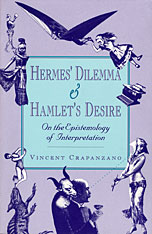 Hermes’ Dilemma and Hamlet’s Desire: On the Epistemology of Interpretation
Vincent Crapanzano
Harvard University Press, 1992 A distinguished anthropologist and a creative force behind postmodern writing in his field, Vincent Crapanzano here focuses his considerable critical powers upon his own culture. In essays that question how the human sciences, particularly anthropology and psychoanalysis, articulate their fields of study, Crapanzano addresses nothing less than the enormous problem of defining the self in both its individual and collective projections.
Treating subjects as diverse as Roman carnivals and Balinese cockfights, circumcision, dreaming, and spirit possession in Morocco, transference in psychoanalysis, self-characterization in teenage girls’ gossip, Alice in Wonderland, and Jane Austen’s Emma, dialogue models in hermeneutics, and semantic vertigo in Hamlet’s Elsinore, these essays look critically at the inner workings of interpretation in human sciences and literary study. In modern Western culture’s attempts to interpret and communicate the nature of other cultures, Crapanzano finds a crippling crisis in representation. He shows how the quest for knowledge of “exotic” and “primitive” people is often confused with an unexamined need for self-definition, and he sets forth the resulting interpretive paradoxes, particularly the suppression of any awareness of the play of power and desire in such an approach. What is missing from contemporary theories of interpretation is, in Crapanzano’s account, a crucial understanding of the role context plays in any act of communication or its representation—in interpretation itself.
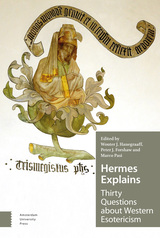 Hermes Explains: Thirty Questions about Western Esotericism
Wouter Hanegraaff
Amsterdam University Press, 2019 Few fields of academic research are surrounded by so many misunderstandings and misconceptions as the study of Western esotericism. For twenty years now, the Centre for History of Hermetic Philosophy and Related Currents (University of Amsterdam) has been at the forefront of international scholarship in this domain. This anniversary volume seeks to make the modern study of Western esotericism known beyond specialist circles, while addressing a range of misconceptions, biases, and prejudices that still tend to surround it. Thirty major scholars in the field respond to questions about a wide range of unfamiliar ideas, traditions, practices, problems, and personalities that are central to this area of research. By challenging many taken-for-granted assumptions about religion, science, philosophy, and the arts, this volume demonstrates why the academic study of esotericism leads us to reconsider much that we thought we knew about the story of Western culture.
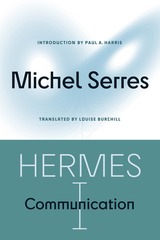 Hermes I: Communication
Michel Serres
University of Minnesota Press, 2023 For the first time in English, the introductory volume in a major French philosopher’s groundbreaking series of poetic transdisciplinary works Michel Serres is recognized as one of the giants of postwar French philosophy of knowledge, along with Gilles Deleuze, Jacques Derrida, Michel Foucault, and Gilbert Simondon. His early five-volume series Hermes, which appeared in the 1960s and 1970s, was an intellectual supernova in its proposition that culture and science shared the same mythic and narrative structures. Hermes I: Communication marks the start of a major publishing endeavor to introduce this foundational series into English. Building on the figure of the Greek god Hermes, who presides over the realms of communication and interpretation, Hermes I embarks on a reflection concerning the history of mathematics via Descartes and Leibniz and culminates by way of a Bachelardian logoanalytic reading of Homer, Dumas, Molière, Verne, and the story of Cinderella. We observe a singular poetic philosopher seeking to bridge the gap between the liberal arts and the sciences through a profound mathematical and poetic fable regarding information theory, history, and art, establishing a new way to think about the production of knowledge during the late twentieth century. In these pages, students and scholars of philosophy will discover an extraordinary project of thought as vital to critical reflection today as it was fifty years ago.
 Hermes II: Interference
Michel Serres
University of Minnesota Press, 2025 Unveiling the hidden connections in the network of knowledge Hermes II: Interference is the second in a series of works by philosopher Michel Serres using Hermes, god of communication, as an archetypal symbolic figure for reflecting on philosophy and the arts and sciences. Serres delves into the concept of interreferentiality, proposing that every node—whether it be knowledge, objects, or people—exists within a network where it both receives and transmits information. He argues against the existence of a dominant center or pole within these networks, emphasizing that each node can temporarily serve as a focal point depending on context. Serres presents unique insights into topics such as the nature of knowledge, the world of objects, intersubjectivity, the origins of geometry, the interplay of music and background noise, and empiricism. By identifying parallel structures across these areas, Serres unifies them into a comprehensive theoretical framework, revealing hidden connections and potential future influences. Additionally, this work includes a critique of Gaston Bachelard’s The Formation of the Scientific Mind and concludes with an analysis of communication in Hergé’s The Castafiore Emerald. Hermes II is a unique blend of ancient and modern perspectives, combining rigorous analysis with an optimistic outlook and highlighting the interconnectedness of knowledge and its implications for fostering peaceful relations within the network of life.
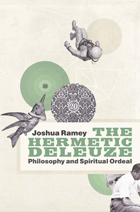 The Hermetic Deleuze: Philosophy and Spiritual Ordeal
Joshua Ramey
Duke University Press, 2012 In his writing, Gilles Deleuze drew on a vast array of source material, from philosophy and psychoanalysis to science and art. Yet scholars have largely neglected one of the intellectual currents underlying his work: Western esotericism, specifically the lineage of hermetic thought that extends from Late Antiquity into the Renaissance through the work of figures such as Iamblichus, Nicholas of Cusa, Pico della Mirandola, and Giordano Bruno. In this book, Joshua Ramey examines the extent to which Deleuze's ethics, metaphysics, and politics were informed by, and can only be fully understood through, this hermetic tradition. Identifying key hermetic moments in Deleuze's thought, including his theories of art, subjectivity, and immanence, Ramey argues that the philosopher's work represents a kind of contemporary hermeticism, a consistent experiment in unifying thought and affect, percept and concept, and mind and nature in order to engender new relations between knowledge, power, and desire. By uncovering and clarifying the hermetic strand in Deleuze's work, Ramey offers both a new interpretation of Deleuze, particularly his insistence that the development of thought demands a spiritual ordeal, and a framework for retrieving the pre-Kantian paradigm of philosophy as spiritual practice.
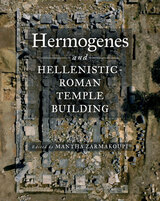 Hermogenes and Hellenistic-Roman Temple Building
Edited by Mantha Zarmakoupi
University of Wisconsin Press, 2026 Recent major excavations at a variety of sites associated with Hermogenes have refreshed, invigorated, and refined our understanding of this important Hellenistic architect. Here, in the first volume dedicated to Hermogenes in more than two decades, new evidence and multivocal analysis allow for fresh contextualization, offering new insights into ancient Greek and Roman architecture and the sociopolitical factors that informed it.
Hermogenes remains one of the most influential and famous designers of the Hellenistic world, although he is known primarily via the first-century BCE Roman architect Vitruvius, who credited his Greek predecessor with major accomplishments. Despite his comparative fame, the paucity of sources has nevertheless obscured Hermogenes’ legacy. This volume updates the evidence, reevaluates this highly significant figure, and reintroduces crucial innovations in the ancient Greek world—innovations that continue to be influential today.
 Hermon Carey Bumpus, Yankee Naturalist
Hermon C. Bumpus, Jr.
University of Minnesota Press, 1947 Hermon Carey Bumpus, Yankee Naturalist was first published in 1947. Minnesota Archive Editions uses digital technology to make long-unavailable books once again accessible, and are published unaltered from the original University of Minnesota Press editions. In this small volume, Dr. Bumpus' son has outlined the personal history and professional career of his distinguished father, who will be known to countless associates through his work with American museums, and his outstanding career as educator and administrator: as director of the Marine Biological Laboratory at Woods Hole, Massachusetts; as professor of biology at Brown University; as the first director of the American Museum of Natural History; as business manager of the University of Wisconsin; as president of Tufts College; and as chairman of the advisory board of the National Park Service. The trailside museums and natural history shrines that have taught thousands of Americans the story behind the scenic and natural wonders of our national parks are an enduring memorial to this man of enthusiasm and unceasing energy. The habitat exhibits in our museums of natural history bear further witness to the imagination and practical originality of this distinguished American naturalist, who was the first president of the American Association of Museums and who contributed so much to the change of attitude and policy at a time when museums of every type were just thawing out of their ice age.
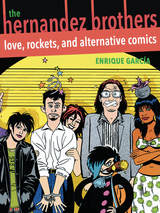 The Hernandez Brothers: Love, Rockets, and Alternative Comics
Enrique Garcia
University of Pittsburgh Press, 2017 This study offers a critical examination of the work of Gilbert and Jaime Hernandez, Mexican-American brothers whose graphic novels are highly influential. The Hernandez brothers started in the alt-comics scene, where their ‘Love and Rockets’ series quickly gained prominence. They have since published in more mainstream venues but have maintained an outsider status based on their own background and the content of their work. Enrique García argues that the Hernandez brothers have worked to create a new American graphic storytelling that, while still in touch with mainstream genres, provides a transgressive alternative from an aesthetic, gender, and ethnic perspective. The brothers were able to experiment with and modify these genres by taking advantage of the editorial freedom of independent publishing. This freedom also allowed them to explore issues of ethnic and gender identity in transgressive ways. Their depictions of latinidad and sexuality push against the edicts of mainstream Anglophone culture, but they also defy many Latino perceptions of life, politics, and self-representation. The book concludes with an in-depth interview with Jaime and Gilbert Hernandez that touches on and goes beyond the themes explored in the book.
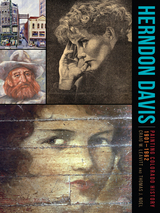 Herndon Davis: Painting Colorado History, 1901–1962
Craig Leavitt
University Press of Colorado, 2016 Herndon Davis, an artist and journalist, dedicated his life to depicting the major landmarks and personalities of Colorado in watercolor, oil, and pen and pencil. Best known for the Face on the Barroom Floor, the portrait of an alluring woman on the floor of the Teller House Hotel barroom in Central City, Colorado, Davis was a prolific artist whose murals, sketches, and portraits can be found all over the state, from the Sage Room of the Oxford Hotel on Seventeenth Street to the Denver Press Club poker room. Despite his numerous contributions, his work was never showcased or exhibited in the traditional manner. In this biography and first-ever collection featuring most of his life’s work, authors Craig Leavitt and Thomas J. Noel provide a detailed look into Davis’s life and career and include a catalog of almost 200 of his paintings and drawings from Colorado and around the country. They also put his work into the broader context of the time through comparison with such contemporary Colorado artists as Muriel Sibell Wolle, Allen Tupper True, Charles Waldo Love, and Juan Menchaca. Published to coincide with the Denver Public Library’s 2016 exhibition—the only public display of Davis’s work to date—and bringing deserved attention to this overlooked figure, Herndon Davis: Painting Colorado History, 1901-1962 is an important contribution to Colorado’s cultural history. This book and the accompanying exhibit are sponsored by the Western History/Genealogy Department at the Denver Public Library.
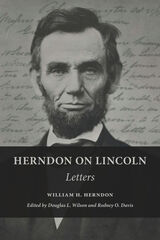 Herndon on Lincoln: Letters
William H. Herndon, edited by Douglas L. Wilson and Rodney O. Davis
University of Illinois Press, 2019 After Abraham Lincoln's assassination in 1865, William H. Herndon began work on a brief, "subjective" biography of his former law partner, but his research turned up such unexpected and often startling information that it became a lifelong obsession. The biography finally published in 1889, Herndon's Lincoln, was a collaboration with Jesse W. Weik in which Herndon provided the materials and Weik did almost all the writing. For this reason, and because so much of what Herndon had to say about Lincoln was not included in the biography, David Donald has observed, "To understand Herndon's own rather peculiar approach to Lincoln biography, one must go back to his letters." An exhaustive collection of what Herndon was told by others about Lincoln was published by Douglas L. Wilson and Rodney O. Davis in Herndon's Informants: Letters, Interviews, and Statements about Abraham Lincoln . In this new volume, Wilson and Davis have produced a comprehensive edition of what Herndon himself wrote about Lincoln in his own letters. Because of Herndon's close association with Lincoln, his intimate acquaintance with his partner's legal and political careers, and because he sought out informants who knew Lincoln and preserved information that might otherwise have been lost, his letters have become an indispensable resource for Lincoln biography. Unfiltered by a collaborator and rendered in Herndon's own distinctive voice, these letters constitute a matchless trove of primary source material. Herndon on Lincoln: Letters is a must for libraries, research institutions, and students of a towering American figure and his times.
 Herndon's Informants: Letters, Interviews, and Statements about Abraham Lincoln
Edited by Douglas L. Wilson and Rodney O. Davis
University of Illinois Press, 2020 Winner of the Abraham Lincoln Institute Book Award More than 600 letters and interviews providing information about Abraham Lincoln's prepolitical and prelegal careers are included in this volume, a priceless collection never before available in one place. Women to whom Lincoln proposed marriage, political allies and adversaries, judges and fellow attorneys, longtime comrades, erstwhile friends--all speak out here in words first gathered by William H. Herndon, Lincoln's law partner, between 1865 and 1890. Historian David Herbert Donald has called Herndon's materials "the basic source for Abraham Lincoln's early years." Some of those Herndon questioned were illiterate; others could read but barely write. Completion of this undertaking took the editors to three major collections for the mammoth task of transcribing documents that often were nearly illegible. Invaluable to Lincoln scholars and intriguing to anyone curious about Lincoln and his times, the book includes an introduction, scholarly annotations, a registry of the informants, and a detailed topical index.
Hero
Root Leeb
Haus Publishing, 2014 A young woman who lives in Bavaria, Nele is quiet, an introvert, preferring to go unnoticed and keep to herself. That reticence carries over to her relationship with her father, Hero—until, that is, she realizes that he is seriously ill, and in fact may even be dying. That realization prompts her to work up the gumption to introduce him to her boyfriend, a Nigerian immigrant. This new-found courage impresses Hero, who comes to respect his daughter and entrusts her with a secret: a cardboard box whose contents are a mystery. Hero tells her to distribute what she finds inside to her mother and siblings, but only after his death.
Inspired in part by King Lear, this enchanting novel of families, secrets, and love is the first of Root Leeb’s works to be translated into English and is sure to win new fans for this successful German writer.
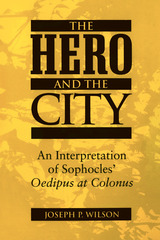 The Hero and the City: An Interpretation of Sophocles' Oedipus at Colonus
Joseph P. Wilson
University of Michigan Press, 2003 This work of seemingly conventional, philologically based criticism challenges many of the traditional views of Sophocles' Oedipus at Colonus. Joseph P. Wilson disputes the received wisdom that Oedipus was a suppliant of the Athenians, arguing rather that the primary relationship that governed Oedipus's dealings with his hosts was xenia (hospitality), not hiketeia (supplication). Likewise, he considers in detail the disputed reading of empolin or empalin in verse 637 and the vexed question of whether Oedipus ever became a citizen of Athens. He concludes by investigating the matter of Oedipus' heroic and oracular capabilities and the role that Oedipus' own will plays in creating his heroic persona. Wilson's study offers a radical rereading of the Oedipus riddle and concludes with a substantial discussion of the play's (and playwright's) role in providing a political and moral education for the troubled Athenian polis in the last decade of the tumultuous fifth century.
Joseph P. Wilson is Professor of Foreign Languages at the University of Scranton.
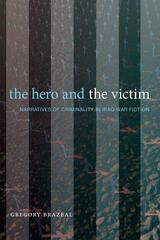 The Hero and the Victim: Narratives of Criminality in Iraq War Fiction
Gregory Brazeal
Lever Press, 2024 Two decades after the US invasion of Iraq in 2003, a canon of American literature about the war has begun to emerge. Gregory Brazeal’s The Hero and the Victim situates Iraq War fiction in war literature’s broader history. In contrast to the emphasis of most pre-modern war literature on the figure of the warrior-as-hero, and the growing modern emphasis on the figure of the soldier-as-victim, Iraq War fiction reflects the troubled emergence of a new narrative: the story of the ordinary soldier as a wrongdoer or even criminal. To a greater extent than earlier literature about American wars, Iraq War fiction is haunted by depictions of moral injury and expressions of unresolved guilt.
The emphasis on soldier criminality in Iraq War fiction can be partly explained by the rise of moral cosmopolitanism and its blurring of the traditional conceptual lines between war and crime. The anti-war literature of the twentieth century often presented fallen soldiers on both sides equally as victims and viewed the distinction between heroes and villains as part of the illusion that battlefield experience strips away. Written in the long shadow of Nuremberg, Iraq War fiction grapples with the possibility that the soldiers on one’s own side may not be the heroes in the story, or even the victims, but participants in a wrong, and perhaps even complicit in crimes. The Hero and the Victim contributes to the ongoing, public reexamination of American traditions by confronting a topic that has, up to now, been largely untouched: the moral celebration of military service.
The Hero and the Victim explores the theme of soldier criminality through close readings of several works by American authors, including Kevin Powers’s The Yellow Birds, Phil Klay’s Redeployment, Helen Benedict’s Sand Queen, Chris Kyle’s American Sniper, and Roy Scranton’s War Porn. This volume will be an essential text for students of American literature, historians of war culture, and any scholar interested in representations of the Iraq War.
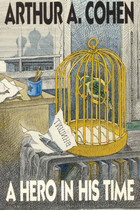 A Hero in His Time
Arthur A. Cohen
University of Chicago Press, 1987 All his life Yuri Maximovich Isakovsky, a minor Russian poet, editor of a journal of folk music, sometime English translator, has assiduously avoided power and politics—in fact, attention of any kind. How can it be, then, that the Soviet government has chosen him to attend a conference in the fabled land of bourgeois temptation itself, New York City? And not only that, but to do a "piece of work" for the KGB, to deliver a code message embedded in the text of a certain poem to be read in public along with his own . . .
"Cohen has achieved here a tour de force, bringing the idea of poetry to life in a messy little man, no hero at all, not even that much of a poet. . . . [The novel] is stately as well as funny, an authentically noble account of a celebrant. . . . It is the true article."—Geoffrey Wolff, New York Times Book Review
"Arthur Cohen catches fire. . . . A Hero in His Time represents for him a great imaginative leap, for we are shown the interior mental landscape of a middle-aged Russian-Jewish minor poet and . . . most astonishing is that we believe, without question, in this poet."—Doris Grumbach, Village Voice
"A tremendous achievement. . . . To have made this tremendous imaginative leap from the heart of American Jewishness to the heart of Russian Jewishness was a daring thing to do, and it has been accomplished with absolute conviction."—The Sunday Times (London)
"A rich compound of high seriousness and robust comedy."—Newsweek
The Hero in Transition
Ray B. Browne
University of Wisconsin Press, 1983 An investigation of society’s heroes during any time period will reveal the personnel deemed worthy of being emulated at that particular time by that particular society. There will be many old and time-tested figures, sometimes with new faces and new profiles; there will also be a mix of new faces. Thus the hero—like history itself—is constantly in transition, and both the hero and the transition are fundamental to the study of a culture. These essays turn the pantheon of heroes around before our eyes and reveal the many complicated aspects of hero worship.
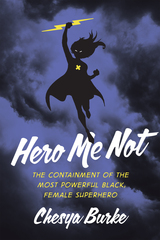 Hero Me Not: The Containment of the Most Powerful Black, Female Superhero
Chesya Burke
Rutgers University Press, 2023 First introduced in the pages of X-Men, Storm is probably the most recognized Black female superhero. She is also one of the most powerful characters in the Marvel Universe, with abilities that allow her to control the weather itself. Yet that power is almost always deployed in the service of White characters, and Storm is rarely treated as an authority figure.
Hero Me Not offers an in-depth look at this fascinating yet often frustrating character through all her manifestations in comics, animation, and films. Chesya Burke examines the coding of Storm as racially “exotic,” an African woman who nonetheless has bright white hair and blue eyes and was portrayed onscreen by biracial actresses Halle Berry and Alexandra Shipp. She shows how Storm, created by White writers and artists, was an amalgam of various Black stereotypes, from the Mammy and the Jezebel to the Magical Negro, resulting in a new stereotype she terms the Negro Spiritual Woman.
With chapters focusing on the history, transmedia representation, and racial politics of Storm, Burke offers a very personal account of what it means to be a Black female comics fan searching popular culture for positive images of powerful women who look like you.
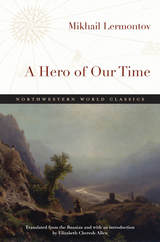 A Hero of Our Time
Mikhail Lermontov, Translated from the Russian and with an Introduction by Elizabeth Cheresh Allen
Northwestern University Press, 2016 Translated from the Russian by Elizabeth Cheresh Allen Mikhail Lermontov’s A Hero of Our Time was the first modern Russian novel. Published in 1840, it set a model of penetrating observation and psychological depth that would come to typify Russian literature. Its "hero," Grigory Pechorin, also established a character type that became known in Russian fiction as "the superfluous man"—widely familiar from Dostoevsky’s Notes from Underground. At once driven by pride and wracked by self-doubt, both shockingly self-revealing and blindly self-deceived, he flounders to affirm himself in a social world he despises yet yearns to dominate. Pechorin is a troubling and unforgettable character. And A Hero of Our Time, which has provoked much controversy, is a novel not only central to Russian literature but fundamental to the Western literary tradition of the antihero.
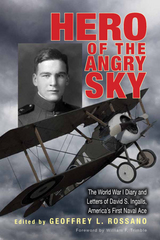 Hero of the Angry Sky: The World War I Diary and Letters of David S. Ingalls, America’s First Naval Ace
David S. Ingalls
Ohio University Press, 2012 Hero of the Angry Sky draws on the unpublished diaries, correspondence, informal memoir, and other personal documents of the U.S. Navy’s only flying “ace” of World War I to tell his unique story. David S. Ingalls was a prolific writer, and virtually all of his World War I aviation career is covered, from the teenager’s early, informal training in Palm Beach, Florida, to his exhilarating and terrifying missions over the Western Front. This edited collection of Ingalls’s writing details the career of the U.S. Navy’s most successful combat flyer from that conflict. While Ingalls’s wartime experiences are compelling at a personal level, they also illuminate the larger, but still relatively unexplored, realm of early U.S. naval aviation. Ingalls’s engaging correspondence offers a rare personal view of the evolution of naval aviation during the war, both at home and abroad. There are no published biographies of navy combat flyers from this period, and just a handful of diaries and letters in print, the last appearing more than twenty years ago. Ingalls’s extensive letters and diaries add significantly to historians’ store of available material.
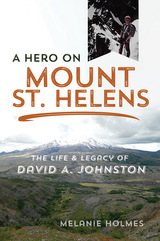 A Hero on Mount St. Helens: The Life and Legacy of David A. Johnston
Melanie Holmes. Foreword by Jeff Renner
University of Illinois Press, 2019 Serendipity placed David Johnston on Mount St. Helens when the volcano rumbled to life in March 1980. Throughout that ominous spring, Johnston was part of a team conducting scientific research that underpinned warnings about the mountain. Those warnings saved thousands of lives when the most devastating volcanic eruption in U.S. history blew apart Mount St. Helens but killed Johnston on the ridge that now bears his name. Melanie Holmes tells the story of Johnston's journey from a nature-loving Boy Scout to a committed geologist. Blending science with personal detail, Holmes follows Johnston through his encounters with Aleutian volcanoes, his work helping the Portuguese government assess the geothermal power of the Azores, and his dream job as a volcanologist with the U.S. Geological Survey. Interviews and personal writings reveal what a friend called “the most unjaded person I ever met,” an imperfect but kind and intelligent young scientist passionately in love with his life and work and determined to make a difference.
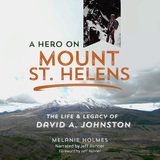 A Hero on Mount St. Helens: The Life and Legacy of David A. Johnston
Melanie Holmes. Narrated by Jeff Renner. Foreword by Jeff Renner
University of Illinois Press, 2024 Serendipity placed David Johnston on Mount St. Helens when the volcano rumbled to life in March 1980. Throughout that ominous spring, Johnston was part of a team conducting scientific research that underpinned warnings about the mountain. Those warnings saved thousands of lives when the most devastating volcanic eruption in U.S. history blew apart Mount St. Helens but killed Johnston on the ridge that now bears his name. Melanie Holmes tells the story of Johnston's journey from a nature-loving Boy Scout to a committed geologist. Blending science with personal detail, Holmes follows Johnston through his encounters with Aleutian volcanoes, his work helping the Portuguese government assess the geothermal power of the Azores, and his dream job as a volcanologist with the U.S. Geological Survey. Interviews and personal writings reveal what a friend called “the most unjaded person I ever met,” an imperfect but kind and intelligent young scientist passionately in love with his life and work and determined to make a difference.
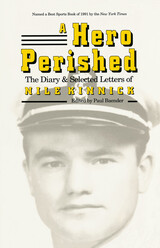 A Hero Perished: The Diary and Selected Letters of Nile Kinnick
Paul Baender
University of Iowa Press, 1992 A Hero Perished tells Nile Kinnick's story. This grandson of an Iowa governor, the son of parents who disciplined him to strive for his measure of greatness, became a Heisman Trophy winner and national celebrity through a combination of talent and circumstance. Following his college successes, Kinnick began legal study to prepare for a political career, but with the approach of war he entered the Navy Air Corps to refashion himself as a fighter pilot. Assigned to the carrier USS Lexington on its premier cruise, he took off in a defective plane—and his death shocked a nation grown almost used to tragic loss. For the first time, Kinnick tells his own tale through his engaging letters—all but one previously unpublished—and his diary, printed in its entirety for the first time. The result is a human, intimate look at the true person behind the myth, revealing both his foibles and his essential principles. A Hero Perished also includes a definitive text of Kinnick's moving Heisman Award acceptance speech and his impassioned commencement supper address, calling on the new Iowa graduates to achieve moral courage in a time of depression and war. An illuminating comment on a time and attitude that have passed, A Hero Perished is of and about a football player, but it is not a football book—it is far more. This volume displays Kinnick—who was, despite his great gifts and achievements, a vulnerable and decent young man—in a time of great change and peril when a phase of our culture was passing away.
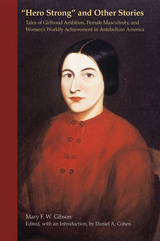 “Hero Strong” and Other Stories: Tales of Girlhood Ambition, Female Masculinity, and Women’s Worldly Achievement in Antebellum America
Mary F.W. Gibson
University of Tennessee Press, 2014 A teenaged orphan from Vermont, Mary Gibson burst onto the literary scene during the
early 1850s as a star writer, under the pseudonym Winnie Woodfern, for more than half a
dozen Boston “story papers,” mass-circulation weekly periodicals that specialized in popular
fiction. Although she would soon join such famous woman authors as Fanny Fern
and E. D. E. N. Southworth as featured contributors to the New York Ledger, America’s
greatest story paper, Gibson’s subsequent output rarely matched the gender-bending creativity
of the tales written in her late teens and early twenties and reprinted in this volume.
But “Hero Strong” and Other Stories does much more than recover the work of a
forgotten literary prodigy. As explained by historian Daniel A. Cohen, Gibson’s tales
also illuminate major interrelated transformations in American girlhood and American
women’s authorship. Challenging traditional gender expectations, thousands of girls of
Gibson’s generation not only aspired to public careers as writers, artists, educators, and
even doctors but also began to experiment with new forms of “female masculinity” in
attitude, bearing, behavior, dress, and sexuality—a pattern only gradually domesticated
by the nonthreatening image of the “tomboy.” Some, such as Gibson, at once realized and
reenacted their dreams on the pages of antebellum story papers.
This first modern scholarly edition of Mary Gibson’s early fiction features ten tales of
teenaged girls (seemingly much like Gibson herself) who fearlessly appropriate masculine
traits, defy contemporary gender norms, and struggle to fulfill high worldly ambitions.
In addition to several heroines who seek “fame and riches” as authors or artists,
Gibson’s unconventional protagonists include three female medical students who resort to
grave robbing and a Boston ingénue who dreams of achieving military glory in battle. By
moving beyond “literary domesticity” and embracing bold new models of women’s
authorship, artistry, and worldly achievement, Gibson and her fictional protagonists stand
as exemplars of “the first generation of American girls who imagined they could do almost
anything.”
 Herodotean Narrative and Discourse
Mabel Lang
Harvard University Press, 1984 Mabel Lang offers a new interpretation of Herodotus. Her reading of the “Father of History” pinpoints the aspects of his style that clearly derive from oral composition. Lang examines oral techniques in storytelling, known from folktales and other oral literature as well as from Homer. She shows how the dramatic use of speeches—so characteristic of folk literature—played an important part in Herodotus' development of history out of the chronologies and geographies that he knew. Story form and speeches attributed to historical persons, she demonstrates, follow traditional formulas. She also studies in detail Herodotus' distinctive use of proverbs and rhetorical questions. Throughout, Lang draws on a variety of materials and offers particularly revealing comparisons of Homeric and Herodotean styles. This analysis of the evidence for oral composition in Herodotus' Histories opens a new perspective for students and scholars of Greek history.
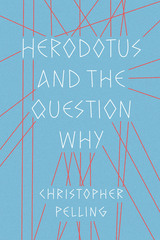 Herodotus and the Question Why
By Christopher Pelling
University of Texas Press, 2019 In the 5th century BCE, Herodotus wrote the first known Western history to build on the tradition of Homeric storytelling, basing his text on empirical observations and arranging them systematically. Herodotus and the Question Why offers a comprehensive examination of the methods behind the Histories and the challenge of documenting human experiences, from the Persian Wars to cultural traditions. In lively, accessible prose, Christopher Pelling explores such elements as reconstructing the mentalities of storyteller and audience alike; distinctions between the human and the divine; and the evolving concepts of freedom, democracy, and individualism. Pelling traces the similarities between Herodotus's approach to physical phenomena (Why does the Nile flood?) and to landmark events (Why did Xerxes invade Greece? And why did the Greeks win?), delivering a fascinating look at the explanatory process itself. The cultural forces that shaped Herodotus's thinking left a lasting legacy for us, making Herodotus and the Question Why especially relevant as we try to record and narrate the stories of our time and to fully understand them.
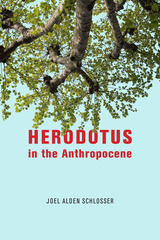 Herodotus in the Anthropocene
Joel Alden Schlosser
University of Chicago Press, 2020 We are living in the age of the Anthropocene, in which human activities are recognized for effecting potentially catastrophic environmental change. In this book, Joel Alden Schlosser argues that our current state of affairs calls for a creative political response, and he finds inspiration in an unexpected source: the ancient writings of the Greek historian Herodotus. Focusing on the Histories, written in the fifth century BCE, Schlosser identifies a cluster of concepts that allow us to better grasp the dynamic complexity of a world in flux.
Schlosser shows that the Histories, which chronicle the interactions among the Greek city-states and their neighbors that culminated in the Persian Wars, illuminate a telling paradox: at those times when humans appear capable of exerting more influence than ever before, they must also assert collective agency to avoid their own downfall. Here, success depends on nomoi, or the culture, customs, and laws that organize human communities and make them adaptable through cooperation. Nomoi arise through sustained contact between humans and their surroundings and function best when practiced willingly and with the support of strong commitments to the equality of all participants. Thus, nomoi are the very substance of political agency and, ultimately, the key to freedom and ecological survival because they guide communities to work together to respond to challenges. An ingenious contribution to political theory, political philosophy, and ecology, Herodotus in the Anthropocene reminds us that the best perspective on the present can often be gained through the lens of the past.
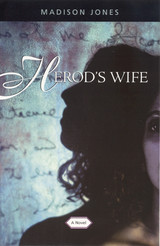 Herod's Wife: A Novel
Madison Jones
University of Alabama Press, 2003 A timely novel evocative of the biblical story of the beheading of John the Baptist by a major American writer Hugh Helton, a prosperous attorney in a progressive town, has married his brother's ex-wife, Nora. As Hugh negotiates his relationships with his new spouse, her daughter, Jean, and parish priest Father John Riley, Nora’s growing hate for the church into which they were all born and from which they have all lapsed drives her to desperate acts of deceit and manipulation. Father Riley himself wrestles with his own sense of purpose and mission. But when Nora attempts to discredit him as an authority figure in the minds of both her husband and their community, she uses her devoted daughter as the springboard for a series of accusations against the priest that has catastrophic results for all involved. Grappling with issues of faith, trust, family loyalty, child molestation, and scandal in the Catholic Church, Herod’s Wife is a timely exploration of subjects from today's headlines. It illuminates the isolation and search for meaning of characters young and old, innocent and experienced, in a rapidly changing and bewildering southern landscape. Madison Smartt Bell, author of All Soul's Rising, writes, “The main plot revolves around a mother pressuring a child to express her will in a more concrete way than she would or could herself—so that the child ultimately commits acts which are both criminal and morally horrifying. . . . [Herod’s Wife] is a morality play set in contemporary conditions, with its eye on eternal verities.” Madison Jones is the author of 10 previous novels, including An Exile and A Cry of Absence. He has won the T. S. Eliot Award from the Ingersoll Foundation, the Michael Shaara Award from the United States Civil War Center, and the Harper Lee Award.
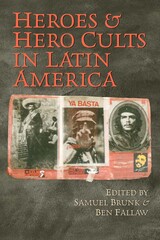 Heroes and Hero Cults in Latin America
Edited by Samuel Brunk and Ben Fallaw
University of Texas Press, 2006 Latin American history traditionally has been defined by larger-than-life heroes such as Símon Bolívar, Emiliano Zapata, and Evita Perón. Recent scholarship, however, tends to emphasize social and cultural factors rather than great leaders. In this new collection, Samuel Brunk and Ben Fallaw bring heroes back to the center of the debate, arguing that heroes not only shape history, they also "tell us a great deal about the places from which they come." The original essays in this collection examine ten modern Latin American heroes whose charisma derived from the quality of their relationships with admirers, rather than their innate personal qualities. The rise of mass media, for instance, helped pave the way for populists such as radio actress-turned-hero Evita Perón. On the other hand, heroes who become president often watch their images crumble, as policies replace personality in the eyes of citizens. In the end, the editors argue, there is no formula for Latin American heroes, who both forge, and are forged by, unique national events. The conclusion points toward Mexico, where the peasant revolutions that elevated Miguel Hidalgo and, later, Emiliano Zapata are so revered that today's would-be heroes, such as the EZLN's Subcomandante Marcos, must link themselves to peasant mythology even when their personal roots are far from native ground. The enduring (or, in some cases, fading) influence of those discussed in this volume validates the central placement of heroes in Latin American history.
Heroes and Humanities: Detective Fiction and Culture
Ray B. Browne
University of Wisconsin Press, 1986 Mystery fiction, although essentially the same in all its national varieties, nevertheless comes in several types and several wrappings.
The present study of American, Australian, and Canadian detective fiction concerns literature which speaks in the ways of heroes and humanities about the human condition. All authors studied here, to one degree or another, demonstrate their concern with human society, some more strongly than others, but all with their eyes on the human situation and human existence. At times these studies lean toward the tragic in their outlook and development. In all instances they center on the humanistic.
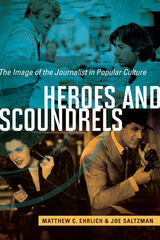 Heroes and Scoundrels: The Image of the Journalist in Popular Culture
Matthew C. Ehrlich and Joe Saltzman
University of Illinois Press, 2015 Whether it's the rule-defying lifer, the sharp-witted female newshound, or the irascible editor in chief, journalists in popular culture have shaped our views of the press and its role in a free society since mass culture arose over a century ago.
Drawing on portrayals of journalists in television, film, radio, novels, comics, plays, and other media, Matthew C. Ehrlich and Joe Saltzman survey how popular media has depicted the profession across time. Their creative use of media artifacts provides thought-provoking forays into such fundamental issues as how pop culture mythologizes and demythologizes key events in journalism history and how it confronts issues of race, gender, and sexual orientation on the job.
From Network to The Wire, from Lois Lane to Mikael Blomkvist, Heroes and Scoundrels reveals how portrayals of journalism's relationship to history, professionalism, power, image, and war influence our thinking and the very practice of democracy.
Heroes and Villains: Creating National History in Contemporary Ukraine
David R. Marples
Central European University Press, 2007 Certain to engender debate in the media, especially in Ukraine itself, as well as the academic community. Using a wide selection of newspapers, journals, monographs, and school textbooks from different regions of the country, the book examines the sensitive issue of the changing perspectives – often shifting 180 degrees – on several events discussed in the new narratives of the Stalin years published in the Ukraine since the late Gorbachev period until 2005. These events were pivotal to Ukrainian history in the 20th century, including the Famine of 1932–33 and Ukrainian insurgency during the war years.
Heroes, Hero Worship, and Brigham Young
Ronald W. Walker
Utah State University Press Volume 20 in the Leonard J. Arrington Lecture Series, sponsored by the Utah State University special collections and archives division.
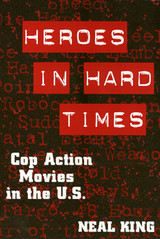 Heroes In Hard Times
Neal King
Temple University Press, 1999 According to Neal King, cop action movies point both an accusatory finger and homoerotically murderous race at powerful white men. A close look at a massive and hugely popular fictional culture, Heroes in Hard Times considers the over 190 cop action movies released between 1980 and 1997; examines the generic moral logic that they offer; and explores the crisis in American masculinity that, King argues, propels the action in their stories.
King studies how, in the cop action genre, working-class police officers weigh in on such topics as racial justice, homosexuality, misogyny, unemployment, worker resistance, affirmative action, drug use, poverty, divorce, and the use of violence to deal with social problems. Facing their enemies with wisecracks and firepower, these men prove themselves at once complicitous in a system of violence and corruption and worthy to "blow away," with neither hesitation nor remorse, their -- society's -- menacing threats. The central male figures in these stories are heroes in their fight against criminals, but, as individuals, they fell undervalued by women, unappreciated by their bosses, and out of place in a society where fat cats and liberals have all the power. Such "hard times," King's study reveals, position them to simultaneously long for, disdain, and heroically -- if violently -- stake their frustrated claim to white male privilege.
Discussing such topics as white male guilt and the rage of the oppressed and examining such films as Lethal Weapon, Die Hard, and Silence of the Lambs, King's book notes the socially-charged roles given to American culture's fictional police heroes. The last artisan in a culture that has become increasingly corporate and bureaucratized, the movie cop is the last 'real man' in a world that has emasculated men and the last non-conforming patriot in a world that pays more attention to rules than what is morally right.
A book that shows how modern mythology makes sense of rampant corruption (and provides entertainment in its punishment), Heroes in Hard Times will educate and provoke those interested in American popular culture, film, and gender studies.
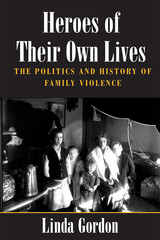 Heroes of Their Own Lives: The Politics and History of Family Violence--Boston, 1880-1960
Linda Gordon
University of Illinois Press, 2002 In this unflinching history of family violence, Linda Gordon traces policies on child abuse and neglect, wife beating, and incest from 1880 to 1960. Gordon begins with the so-called discovery of family violence in the 1870s, when experts first identified it as a social rather than personal problem. From there, Gordon chronicles the changing visibility of family violence as gender, family, and political ideologies shifted and the women’s and civil rights movements gained strength. Throughout, she illustrates how public perceptions of issues like marriage, poverty, alcoholism, mental illness, and responsibility worked for and against the victims of family violence, and looks at the link between family violence and larger social problems. Powerful and moving, Heroes of Their Own Lives offers an honest understanding of a persistent problem and a realistic view of the difficulties in stopping it.
 Heroes, Saints, and Ordinary Morality
Andrew Michael Flescher
Georgetown University Press, 2003 Most of us are content to see ourselves as ordinary people—unique in ways, talented in others, but still among the ranks of ordinary mortals. Andrew Flescher probes our contented state by asking important questions: How should "ordinary" people respond when others need our help, whether the situation is a crisis, or something less? Do we have a responsibility, an obligation, to go that extra mile, to act above and beyond the call of duty? Or should we leave the braver responses to those who are somehow different than we are: better somehow, "heroes," or "saints?" Traditional approaches to ethics have suggested there is a sharp distinction between ordinary people and those called heroes and saints; between duties and acts of supererogation (going beyond the expected). Flescher seeks to undo these standard dichotomies by looking at the lives and actions of certain historical figures—Holocaust rescuers, Martin Luther King, Jr., Dorothy Day, among others—who appear to be extraordinary but were, in fact, ordinary people. Heroes, Saints, and Ordinary Morality shifts the way we regard ourselves in relationship to those we admire from afar—it asks us not only to admire, but to emulate as well—further, it challenges us to actively seek the acquisition of virtue as seen in the lives of heroes and saints, to learn from them, a dynamic aspect of ethical behavior that goes beyond the mere avoidance of wrongdoing. Andrew Flescher sets a stage where we need to think and act, calling us to lead lives of self-examination—even if that should sometimes provoke discomfort. He asks that we strive to emulate those we admire and therefore allow ourselves to grow morally, and spiritually. It is then that the individual develops a deeper altruistic sense of self—a state that allows us to respond as the heroes of our own lives, and therefore in the lives of others, when times and circumstance demand that of us.
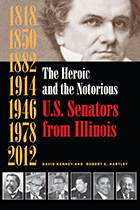 The Heroic and the Notorious: U.S. Senators from Illinois
David Kenney and Robert E. Hartley
Southern Illinois University Press, 2012 This sweeping survey constitutes the first comprehensive treatment of the men and women who have been chosen to represent Illinois in the United States Senate from 1818 to the present day. David Kenney and Robert E. Hartley underscore nearly two centuries of Illinois history with these biographical and political portraits, compiling an incomparably rich resource for students, scholars, teachers, journalists, historians, politicians, and any Illinoisan interested in the state’s senatorial heritage. Originally published as An Uncertain Tradition: U.S. Senators From Illinois 1818–2003, this second edition brings readers up to date with new material on Paul Simon, Richard Durbin, and Peter Fitzgerald, as well as completely new sections on Roland Burris, Barack Obama, and Illinois’s newest senator, Mark Kirk. This fresh and careful study of the shifting set of political issues Illinois’s senators encountered over time is illuminated by the lives of participants in the politics of choice and service in the Senate. Kenney and Hartley offer incisive commentary on the quality of Senate service in each case, as well as timeline graphs relating to the succession of individuals in each of the two sequences of service, the geographical distribution of senators within the state, and the variations in party voting for Senate candidates. Rigorously documented and supremely readable, this convenient reference volume is enhanced by portraits of many of the senators.
Heroic Chancellor: Winston Churchill and the University of Bristol, 1929 to 1965
David Cannadine
University of London Press, 2016 "Not only was Churchill the most illustrious and the most distinguished Chancellor that the University of Bristol has ever had, but he was also in his prime, from the 1940s onwards, probably the most famous and the most distinguished chancellor of any university anywhere in the world." David Cannadine
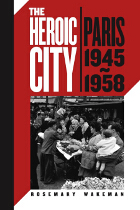 The Heroic City: Paris, 1945-1958
Rosemary Wakeman
University of Chicago Press, 2009 The Heroic City is a sparkling account of the fate of Paris’s public spaces in the years following Nazi occupation and joyful liberation. Countering the traditional narrative that Paris’s public landscape became sterile and dehumanized in the 1940s and ’50s, Rosemary Wakeman instead finds that the city’s streets overflowed with ritual, drama, and spectacle. With frequent strikes and protests, young people and students on parade, North Africans arriving in the capital of the French empire, and radio and television shows broadcast live from the streets, Paris continued to be vital terrain.
Wakeman analyzes the public life of the city from a variety of perspectives. A reemergence of traditional customs led to the return of festivals, street dances, and fun fairs, while violent protests and political marches, the housing crisis, and the struggle over decolonization signaled the political realities of postwar France. The work of urban planners and architects, the output of filmmakers and intellectuals, and the day-to-day experiences of residents from all walks of life come together in this vibrant portrait of a flamboyant and transformative moment in the life of the City of Light.
 Heroic Knowledge: An Interpretation of Paradise Regained and Samson Agonistes
Arnold Stein
University of Minnesota Press, 1957
Heroic Knowledge was first published in 1957. Minnesota Archive Editions uses digital technology to make long-unavailable books once again accessible, and are published unaltered from the original University of Minnesota Press editions.
Professor Stein's critical work on Milton which was launched in his earlier book, Answerable Style: Essays on Paradise Lost, is completed in this volume. He devotes eight essays to Paradise Regained and five to Samson Agonistes. In addition, a preface explains his assumptions and a postscript connects and extends the implications of his work. The author's purpose and method are, perhaps, best described in his own words: "For the most part I have tried to demonstrate rather than to argue, and have (except in some notes) avoided engaging the established critical problems separately; but have instead trusted that a fresh critical interpretation of the poems would come to terms with the major problems while in motion, as part of a developing grasp of the integrated working of the poems."
 Heroic Kṛṣṇa: Friendship in Epic Mahābhārata
Kevin McGrath
Harvard University Press, 2013 Heroic Kṛṣṇa is a portrait of a pre-Hindu and pre-classical figure of a superhuman hero who in time became the divinity Krsna, an incarnation of Visnu. This is a picture, drawn from the epic Mahābhārata, of an archaic warrior who excelled as a charioteer; in fact this is the best depiction that we presently possess in any epic corpus of a charioteer type. Krsna is also described in his role of moral instructor, as poet and ambassador, and in the office of dual kingship with the dharmaraja Yudhisthira. There is no other representation of a complex friendship in the poem apart from what exists between Krsna and Arjuna, and this profound amity is completely founded on the activity of a charioteer and his hero. Cultural and poetic continuities from the Bronze Age Vedic world are shown to exist in this model of duality. Krsna is also an adept of the speech-act, for—apart from his charioteering—he accomplishes little in the epic except via the causality of speech: he is a master of “doing things with words.” This book illustrates a heroic life which pre-exists the divine status of one of the most popular Indian deities of today.
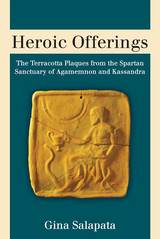 Heroic Offerings: The Terracotta Plaques from the Spartan Sanctuary of Agamemnon and Kassandra
Gina Salapata
University of Michigan Press, 2015 Heroic Offerings sheds light on the study of religion in Sparta, one of Greece’s most powerful city-states and the long-term rival of Athens. Sparta’s history is well known, but its archaeology has been much less satisfactorily explored. Through the comprehensive study of a distinctive class of terracotta votive offerings from a specific sanctuary, Gina Salapata explores both coroplastic art and regional religion. By integrating archaeological, historical, literary, and epigraphic sources, she provides important insights into the heroic cults of Lakonia and contributes to an understanding of the political and social functions of local ritual practice. This volume focuses on a large group of decorated terracotta plaques, from the sixth to fourth centuries BCE. These molded plaques were discovered with other offerings in a sanctuary deposit excavated near Sparta more than fifty years ago, but they have remained unpublished until now. They number over 1,500 complete and fragmentary pieces. In technique, style, and iconography they form a homogeneous group unlike any other from mainland Greece. The large number of plaques and variety of types reveal a stable and vigorous coroplastic tradition in Lakonia during the late Archaic and Classical period. Heroic Offerings will be of interest to students and scholars of Greek history, art, and archaeology, to those interested in ancient religious practice in the Mediterranean, and to all inspired by Athens’ chief political rival, Sparta. This volume received financial support from the Archaeological Institute of America.
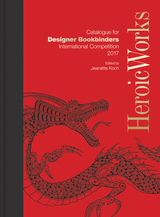 Heroic Works: Catalogue for Designer Bookbinders International Competition 2017
Edited by Jeanette Koch
Bodleian Library Publishing, 2017 Designer Bookbinders is one of the foremost bookbinding societies and its International Bookbinding Competition in association with Mark Getty and the Bodleian Library continues to attract top binders from around the world. For 2017, the theme of the competition was myths, heroes, and legends. Throughout the ages, every culture has created myths and legends that recount the great deeds of its heroes. This year’s entries reflect a remarkable range of styles, materials, and approaches to great classics of world literature, as well as modern texts.
Heroic Works collects the full 184 entries from the 2017 competition, highlighting the twenty-eight winning bindings and offering a veritable showcase for the creativity and craftsmanship of the international bookbinding community. As beautifully designed as many of the bindings it displays, this showcase of the best in modern bookbinding will become a collector’s item among aficionados of bookbinding—as well as a handsome addition to any personal library.
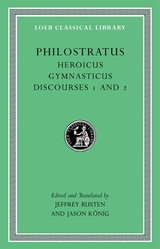 Heroicus. Gymnasticus. Discourses 1 and 2
Philostratus
Harvard University Press, 2014 How to cultivate Greek heroes and athletes.
In the writings of Philostratus (ca. AD 170-ca. 250), the renaissance of Greek literature in the second century AD reached its height. His Life of Apollonius of Tyana, Lives of the Sophists, and Imagines reconceive in different ways Greek religion, philosophy, and art in and for the world of the Roman Empire. In this volume, Heroicus and Gymnasticus, two works of equal creativity and sophistication, together with two brief Discourses (Dialexeis), complete the Loeb edition of his writings.
Heroicus is a conversation in a vineyard amid ruins of the Protesilaus shrine (opposite Troy on the Hellespont), between a wise and devout vinedresser and an initially skeptical Phoenician sailor, about the beauty, continuing powers, and worship of the Homeric heroes. With information from his local hero, the vinedresser reveals unknown stories of the Trojan campaign especially featuring Protesilaus and Palamedes, and describes complex, miraculous, and violent rituals in the cults of Achilles.
Gymnasticus is the sole surviving ancient treatise on sports. It reshapes conventional ideas about the athletic body and expertise of the athletic trainer and also explores the history of the Olympic Games and other major Greek athletic festivals, portraying them as distinctive venues for the display of knowledge.
 Heroides. Amores
Ovid
Harvard University Press, 1977 Two early works by the consummate Latin love poet.
Ovid (Publius Ovidius Naso, 43 BC–AD 17), born at Sulmo, studied rhetoric and law at Rome. Later he did considerable public service there, and otherwise devoted himself to poetry and to society. Famous at first, he offended the emperor Augustus by his Ars amatoria, and was banished because of this work and some other reason unknown to us, and dwelt in the cold and primitive town of Tomis on the Black Sea. He continued writing poetry, a kindly man, leading a temperate life. He died in exile.
Ovid's main surviving works are the Metamorphoses, a source of inspiration to artists and poets including Chaucer and Shakespeare; the Fasti, a poetic treatment of the Roman year of which Ovid finished only half; the Amores, love poems; the Ars amatoria, not moral but clever and in parts beautiful; Heroides, fictitious love letters by legendary women to absent husbands; and the dismal works written in exile: the Tristia, appeals to persons including his wife and also the emperor; and similar Epistulae ex Ponto. Poetry came naturally to Ovid, who at his best is lively, graphic and lucid.
The Loeb Classical Library edition of Ovid is in six volumes.
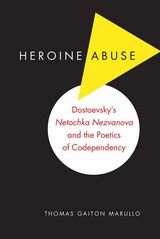 Heroine Abuse: Dostoevsky's "Netochka Nezvanova" and the Poetics of Codependency
Thomas Gaiton Marullo
Northern Illinois University Press, 2015 Fyodor Dostoevsky’s first novel, Netochka Nezvanova, written in 1849, remains the least studied and understood of the writer’s long fiction, but it was a seedbed for many topics and themes that became hallmarks of his major works. Specifically, Netochka Nezvanova was the first in Dostoevsky’s corpus to focus on the psychology of children and the first to feature a woman in a leading and narrative role. It was also the first work in Russian literature to deal with problems of the family.
In Heroine Abuse, Thomas Marullo contends that Netochka Nezvanova also provides a striking example of what psychologists today call codependency: the ways—often deviant and destructive—in which individuals bond with people, places, and things, as well as with images and ideas, to cope with the vicissitudes of life. Marullo shows how, at age twenty-eight, Dostoevsky intuited and illustrated the workings of “relationship addiction” almost a century and a half before it became the scholarly focus of practitioners of mental health.
The moral monsters, “infernal” women, children-adults, and adult-children who populate Netochka Nezvanova seek codependence in people, places, and things, and in images, ideas, and ideals to satiate cravings for love, dominance, and control, as well as to indulge in narcissism, sexual perversion, and other aberrant or alternative behaviors. (Indeed, in no other work would Dostoevsky examine such phenomena as pedophilia and lesbianism with such abandon.) Racing from tie to tie, bond to bond, and caught in a debilitating loop that they claim to detest, but sadomasochistically enjoy, the characters in Netochka Nezvanova wreak havoc on themselves and the world. They do so, moreover, with impunity, their addictions moving them from momentary exultation as self-styled extraordinary men and women, through prolonged darkness and despair, and once again, to old and new addictions for physical and emotional release.
Readers of Heroine Abuse will see Netochka Nezvanova as a timeless model in depicting codependency in the world of the twenty-first century as it did in St. Petersburg in 1849. Marullo’s original work will appeal to scholars and students of Russian and comparative fiction; to doctors, psychologists, and therapists; to laymen and women interested in relationship addiction; and, finally, to codependents and relationship addicts of all types.
Heroines of Popular Culture
Edited by Ray B. Browne
University of Wisconsin Press, 1987 From life and literature come the heroines of this volume. The essays demonstrate that women can fit the role of hero as defined by Joseph Campbell: “A hero ventures forth from the world of common day into a region of supernatural wonder, fabulous forces are there encountered and a decisive victory is won, the hero comes back from this mysterious adventure with the power to bestow boons on his fellow man.” Contributors to this volume cover a wide range of heroic women.
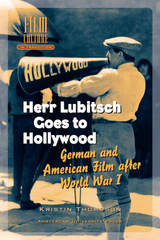 Herr Lubitsch Goes to Hollywood: German and American Film after World War I
Kristin Thompson
Amsterdam University Press, 2005 Ernst Lubitsch, the German filmmaker who left Berlin for Hollywood in the 1920s, is best remembered today for the famous "Lubitsch touch" in such masterpieces as Ninotchka, which featured Greta Garbo's first-ever screen smile, and Heaven Can Wait. Kristin Thompson's study analyzes Lubitsch's earlier silent films of 1918 to 1927 in order to trace the mutual influences between the classical Hollywood film style as it had evolved in the 1910s and the German film industry of the same period, which had emerged from World War I second in strength only to Hollywood.
During World War I, American firms supplied theaters around the world as French and Italian films had become scarce. Ironically, the war strengthened German filmmaking due to a ban on imports that lasted until 1921. During that period of isolation, Lubitsch became the finest proponent of German filmmaking and once Hollywood films appeared in Germany again Lubitsch was quick to absorb their stylistic traits as well. He soon became the unique master of both styles as the golden ages of the American and German cinema were beginning. This innovative study utilizes Lubitsch's silent films as a means to compare two great national cinemas at a vital formative period in cinema history.
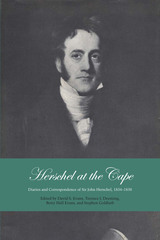 Herschel at the Cape: Diaries and Correspondence of Sir John Herschel, 1834-1838
Edited by David S. Evans, Terence J. Deeming, Betty Hall Evans, and Stephen Goldfarb
University of Texas Press, 1969 Sir John Herschel, one of the founders of Southern Hemisphere astronomy, was a man of extraordinarily wide interests. He made contributions to botany, geology, and ornithology, as well as to astronomy, chemistry, and mathematics. Throughout his scientific career he kept a diary, recording his public and private life. The diaries from 1834 to 1838, years he spent making astronomical observations at the Cape of Good Hope, are reproduced in this book and prove to be much more than an ordinary scientist’s logbook. They present personal and social history, literary commentaries, the results of close observations of nature and numerous scientific experiments, the excitement of travel, political intrigues, gossip, and philosophical reflections—all interpreted through an alert and versatile mind. In the present transcription, the material has been enriched with selected correspondence of Sir John and his wife Lady Herschel (née Margaret Brodie Stewart). Sir John devoted his working time at the Cape primarily to a systematic observation of the southern sky, complementing his earlier “sweeping” of the northern sky at Slough, England. He later became one of the founders of photography, but at the Cape he used a simple optical device, the camera lucida, in the production of numerous landscape drawings. Many of these, along with reproductions of sketches contained in the diaries and botanical drawings made by Sir John and Lady Herschel, are used to illustrate this book. Sir John was also a leading figure in the foundation of the educational system of the Cape and a supporter of exploratory expeditions into the interior. As the son of Sir William Herschel, in his day the most famous British astronomer and the discoverer of the planet Uranus, Sir John was already celebrated when he arrived from England. Every individual of note, resident at the Cape or visiting, went to see him. He was supported in his work by his wife, who ran an enormous establishment and bore a huge family, but who nevertheless found time to travel in the country around the western Cape with him and to assist in his observations. The diaries and letters are supplemented by especially valuable editorial notes that provide much needed and highly interesting information concerning persons and events mentioned and described by Sir John. All the original manuscript material used in this volume is archived at the Harry Ransom Center at the University of Texas at Austin. Sir John’s camera lucida drawings are from the South African Public Library in Cape Town.
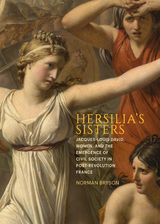 Hersilia's Sisters: Jacques-Louis David, Women, and the Emergence of Civil Society in Post-Revolution France
Norman Bryson
J. Paul Getty Trust, The Political and cultural history and the arts combine in this engaging account of 1790s France.
In 1799, when the French artist Jacques-Louis David (1748–1825) exhibited his Intervention of the Sabines, a history painting featuring the ancient heroine Hersilia, he added portraits of two contemporary women on either side of her—Henriette de Verninac, daughter of Charles-François Delacroix, minister of foreign affairs, and Juliette Récamier, a well-known and admired socialite. Drawing on many disciplines, Norman Bryson explains how such a combination of paintings could reveal the underlying nature of the Directoire, the period between the vicious and near-dictatorial Reign of Terror (1793–94) and the coup in 1799 that brought Napoleon to power.
Hersilia’s Sisters illuminates ways that cultural life and civil society were rebuilt during these years through an extraordinary efflorescence of women pioneers in every cultural domain—literature, the stage, opera, moral philosophy, political theory, painting, popular journalism, and fashion. Through a close examination of David’s work between The Intervention of the Sabines (begun in 1796) and Bonaparte Crossing the Alps (begun in 1800), Bryson explores how the flowering of women’s culture under the Directoire became a decisive influence on David’s art. With more than 150 illustrations, this book provides new and brilliant insight into this period that will captivate readers.
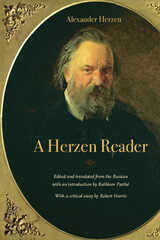 A Herzen Reader
Alexander Herzen, Kathleen Parthe
Northwestern University Press, 2012 A Herzen Reader presents in English for the first time one hundred essays and editorials by the radical Russian thinker Alexander Herzen (1812–1870). Herzen wrote most of these pieces for The Bell, a revolutionary newspaper he launched with the poet Nikolai Ogaryov in London in 1857. Smugglers secretly carried copies of The Bell into Russia, where it influenced debates over the emancipation of the serfs and other reforms. With his characteristic irony, Herzen addressed such issues as freedom of speech, a nonviolent path to socialism, and corruption and paranoia at the highest levels of government. He discussed what he saw as the inability of even a liberator like Czar Alexander II to commit to change. A Herzen Reader stands on its own for its fascinating glimpse into Russian intellectual life of the 1850s and 1860s. It also provides invaluable context for understanding Herzen’s contemporaries, including Fyodor Dostoevsky and Ivan Turgenev.
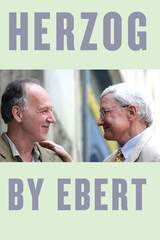 Herzog by Ebert
Roger Ebert
University of Chicago Press, 2017 Roger Ebert was the most influential film critic in the United States, the first to win a Pulitzer Prize. For almost fifty years, he wrote with plainspoken eloquence about the films he loved for the Chicago Sun-Times, his vast cinematic knowledge matched by a sheer love of life that bolstered his appreciation of films. Ebert had particular admiration for the work of director Werner Herzog, whom he first encountered at the New York Film Festival in 1968, the start of a long and productive relationship between the filmmaker and the film critic.
Herzog by Ebert is a comprehensive collection of Ebert’s writings about the legendary director, featuring all of his reviews of individual films, as well as longer essays he wrote for his Great Movies series. The book also brings together other essays, letters, and interviews, including a letter Ebert wrote Herzog upon learning of the dedication to him of “Encounters at the End of the World;” a multifaceted profile written at the 1982 Cannes Film Festival; and an interview with Herzog at Facet’s Multimedia in 1979 that has previously been available only in a difficult-to-obtain pamphlet. Herzog himself contributes a foreword in which he discusses his relationship with Ebert.
Brimming with insights from both filmmaker and film critic, Herzog by Ebert will be essential for fans of either of their prolific bodies of work.
Heshel's Kingdom
Dan Jacobson
Northwestern University Press, 1999 The Orthodox rabbi Heshel Melamed's sudden death by heart attack in 1919 set his widow and children free to leave Lithuania. In this deeply personal memoir, his grandson journeys to the nation after the fall of Communism, and his story is both a philosophical tableau of secularism, religion, and family and a communion with history's darkness-and, where possible, its illumination.
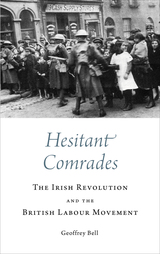 Hesitant Comrades: The Irish Revolution and the British Labour Movement
Geoffrey Bell
Pluto Press, 2016 Geoffrey Bell's Hesitant Comrades is the first published history of the policies, actions and attitudes of the British working class towards the Irish national revolution of 1916-21.
Drawing principally on primary sources, Bell brings to light for the first time important incidents in British/Irish history, including how the leaders of British trade unions were complicit in Belfast loyalist sectarianism; the troubled nature of the Labour Party's relations with its Irish community; and how the Bolsheviks criticised British Marxists over their inaction on Ireland. The author also considers socialist debates on the compatibility of Irish nationalism with socialism, as well as the contentious 'Ulster question'. He examines prominent figures of the era, ranging from Ramsay MacDonald to Sylvia Pankhurst. With sources ranging from newly discovered writings to reports of police spies - Hesitant Comrades is a scholarly, provocative and groundbreaking perspective on the fragile relationship between the British left and the Irish revolution.
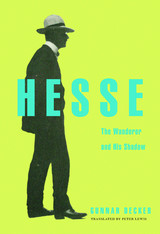 Hesse: The Wanderer and His Shadow
Gunnar Decker
Harvard University Press, 2018 A deftly crafted biography of the author of Siddhartha, whose critique of consumer culture continues to inspire millions of readers.
Against the horrors of Nazi dictatorship and widespread disillusionment with the forces of mass culture and consumerism, Hermann Hesse’s stories inspired nonconformity and a yearning for universal values. Few today would doubt Hesse’s artistry or his importance to millions of devoted readers. But just who was the author of Siddhartha, Steppenwolf, and Demian?
Gunnar Decker weaves together previously unavailable sources to offer a unique interpretation of the life and work of Hermann Hesse. Drawing on recently discovered correspondence between Hesse and his psychoanalyst Josef Lang, Decker shows how Hesse reversed the traditional roles of therapist and client, and rethinks the relationship between Hesse’s novels and Jungian psychoanalysis. He also explores Hesse’s correspondence with Stefan Zweig—recently unearthed—to find the source of Hesse’s profound sense of alienation from his contemporaries.
Decker’s biography brings to life this icon of spiritual searching and disenchantment who galvanized the counterculture in the 1960s and feels newly relevant today.
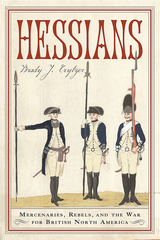 Hessians: Officer, Baroness, Chaplain—Three German Experiences in the American Revolution
Brady J. Crytzer
Westholme Publishing, 2023 Three Stories. Two Worlds. One Revolution. Revealing the German Experience in the American Revolution through the Experiences of an Officer, a Baroness, and a Chaplain
In 1775 the British Empire was in crisis. While it was buried in debt from years of combat against the French, revolution was stirring in its wealthiest North American colonies. To allow the rebellion to fester would cost the British dearly, but to confront it would press their exhausted armed forces to a breaking point. Faced with a nearly impossible decision, the administrators of the world’s largest empire elected to employ the armies of the Holy Roman Empire to suppress the sedition of the American revolutionaries. By 1776 there would be 18,000 German soldiers marching through the wilds of North America, and by war’s end there would be over 30,000.
To the colonists these forces were “mercenaries,” and to the Germans the Americans were “rebels. ”While soldiers of fortune fight for mere profit, the soldiers of the Holy Roman Empire went to war in the name of their country, and were paid little for their services, while their respective kings made fortunes off of their blood and sacrifice among the British ranks. Labeled erroneously as “Hessians,” the armies of the Holy Roman Empire came from six separate German states, each struggling to retain relevance in a newly enlightened and ever-changing world.
In Hessians: Officer, Baroness, Chaplain—Three German Experiences in the American Revolution historian Brady J. Crytzer explores the German experience during the American Revolution through the lives of three individuals from vastly different walks of life, all thrust into the maelstrom of North American combat. Here are the stories of a dedicated career soldier, Johann Ewald, captain of a Field-Jäger Corps, who fought from New York to the final battles along the Potomac; Frederika Charlotte Louise von Massow, Baroness von Riedesel, who raced with her young children through the Canadian wilderness to reunite with her long-distant husband; and middle-aged chaplain Philipp Waldeck, who struggled to make sense of it all while accompanying his unit through the exotic yet brutal conditions of the Caribbean and British Florida. Beautifully written, Hessians offers a glimpse into the American Revolution as seen through the eyes of the German armies commanded to destroy it.
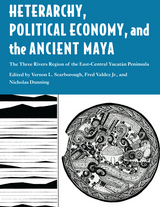 Heterarchy, Political Economy, and the Ancient Maya: The Three Rivers Region of the East-Central Yucatán Peninsula
Edited by Vernon L. Scarborough, Fred Valdez Jr., and Nicholas Dunning
University of Arizona Press, 2003 The ancient Maya of the southern Yucatán peninsula remain a mystery to many scholars attempting to explain early complex societies. Their dispersed settlement patterns and land-use techniques suggest a decentralized and less coordinated use of resources than is seen in other regions. Yet the Maya managed a complex political economy based on structured landscaping, and over several generations they significantly altered their environment. In recent years the Three Rivers region of Belize and Guatemala has been the site of some of the most intensive archaeological research in the Maya lowlands, providing a wealth of regional data. This volume brings together articles reporting on findings and interpretations of the Programme for Belize Archaeological Project that range over a 10- to 12-year period and that shed new light on how ecology, economy, and political order developed in the ancient past. The contributors explore the applicability of heterarchical models to the Three Rivers region, emphasizing the role of economic interdependency and political cooperation in the development of ancient Maya statecraft. As their findings reflect, this region appears to support a model of resource-specialized communities that affected the region's political and economic development and complexity from the Preclassic through the Late Classic periods. The articles explore the levels of interdependency among the large sites in the region and present a variety of data that emphasize both the engineered landscape and the complex agricultural signatures and ecological indicators left by the Maya. This geographic region captures in microcosm both ecological and cultural differences found in the greater Maya Lowlands. The heterarchical model presented here regarding resource-specialized communities and the interpretations of regional diversity in this area represent a breakthrough in research for the region and will prompt new debate in Maya studies.
 Heterology and the Postmodern: Bataille, Baudrillard, and Lyotard
Julian Pefanis
Duke University Press, 1991 In Heterology and the Postmodern, Julian Pefanis presents a new view of the history of poststructuralism (heterology) and the origins of postmodernism by analyzing three important French theorists, Georges Bataille, Jean Baudrillard, and Jean-François Lyotard.
Beginning with the introduction of Hegel in French postmodernist thought—largely but not exclusively through the thought of Georges Bataille—Pefanis argues that the core problematics of postmodern aesthetics—history, exchange, representation, and writing—are related to Bataille’s reconceptualization of the Hegelian framework. Pefanis explores how Bataille was influenced by Hegel, Marcel Mauss, Freud, and Nietzsche, and traces the effects of this influence on the analyses and critiques of later postmodernists, most notably Lyotard and Baudrillard. Finally, employing these postmodernists along with Freud and Jacques Lacan, Pefanis discusses discourse on postmodernism and its relation to Freud’s concept of the death drive.
This intellectual history makes valuable contributions to the debates over what the “postmodern” may mean for intellectual and political activity.
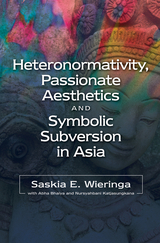 Heteronormativity, Passionate Aesthetics and Symbolic Subversion in Asia
Saskia E. Wieringa
Sussex Academic Press, 2022 This book examines life trajectories among three categories of women living beyond the bounds of heteronormativity in Jakarta and Delhi, two major cities with substantively different religious and social values: women who have lost their husbands, either through divorce or death; sex workers; and young, urban lesbians. Delhi has a large Hindu majority and a sizeable Muslim minority, amongst other religious and cultural pluralities. The Indian state is constitutionally committed to secularism and equal respect to all regions despite right-wing Hindu fundamentalism. Jakarta is the capital of a sprawling archipelago with a large variety of ethnic cultures, Indonesia having the largest Muslim population of the world, as well as sizeable ethnic and religious minorities comprising Christians, Hindus, Buddhists and others. The Indonesian state is constitutionally secular, but religion plays a large role in public life and is embedded in regulations that strongly impact people's private lives. Recently, there have been strong political currents to impose stricter Islamic codes. The public arena of sexual politics, in which the media play an important role, is explored in both cities. Hot sex is a major media selling point, particularly in Indonesia. Heteronormativity entails a system of symbolic violence in the sense that it punishes those that it excludes and polices those that it includes; the ways its powers are subverted are likewise symbolic. Passionate aesthetics refers to the dynamics, motivations, codes of behavior and presentation, subjectivities and identities that together make up the complex workings of erotic attraction, sexual relations and partnerships patterns. By charting the lives of women who live beyond the boundaries of the heteronormative, commonalities are revealed; boundaries and regulatory mechanisms in the context of symbolic violence are delineated; and the issue of the struggle for sexual rights for marginalized groups, and their open rebellion, brought to the fore. At the heart of the book lies elaboration of the ways Asian families are constructed - their social, economic, sexual and religious agency, and how these engage with state-led values. The book is written with the assistance of Abha Bhaiya and Nursyahbani Katjasungkana, and a research team whose names are detailed on the Press website.
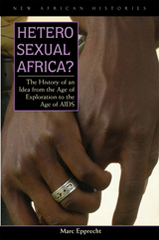 Heterosexual Africa?: The History of an Idea from the Age of Exploration to the Age of AIDS
Marc Epprecht
Ohio University Press, 2008 Heterosexual Africa? The History of an Idea from the Age of Exploration to the Age of AIDS builds from Marc Epprecht’s previous book, Hungochani (which focuses explicitly on same-sex desire in southern Africa), to explore the historical processes by which a singular, heterosexual identity for Africa was constructed—by anthropologists, ethnopsychologists, colonial officials, African elites, and most recently, health care workers seeking to address the HIV/AIDS pandemic. This is an eloquently written, accessible book, based on a rich and diverse range of sources, that will find enthusiastic audiences in classrooms and in the general public. Epprecht argues that Africans, just like people all over the world, have always had a range of sexualities and sexual identities. Over the course of the last two centuries, however, African societies south of the Sahara have come to be viewed as singularly heterosexual. Epprecht carefully traces the many routes by which this singularity, this heteronormativity, became a dominant culture. In telling a fascinating story that will surely generate lively debate, Epprecht makes his project speak to a range of literatures—queer theory, the new imperial history, African social history, queer and women’s studies, and biomedical literature on the HIV/AIDS pandemic. He does this with a light enough hand that his story is not bogged down by endless references to particular debates. Heterosexual Africa? aims to understand an enduring stereotype about Africa and Africans. It asks how Africa came to be defined as a “homosexual-free zone” during the colonial era, and how this idea not only survived the transition to independence but flourished under conditions of globalization and early panicky responses to HIV/AIDS.
Heterosexual Masculinities and the Self-Reflexive Novel
Stefano Rossoni
University College London, 2025 A novel interpretation of the self-reflexive novel as a gendering form.
Rossoni brings the work of four renowned contemporary authors—J.M. Coetzee, Milan Kundera, Philip Roth, and Mario Vargas Llosa—into an unexpected dialogue to address the inscription of heterosexual masculinity into the Western literary legacy and how masculinity is refashioned in contemporary self-reflexive novels. Their oeuvres are considered together for the first time, while also being positioned within the European literary tradition inaugurated by Don Quixote and continued by authors like Gustave Flaubert, Franz Kafka, and Ezra Pound. Heterosexual Masculinities evaluates Coetzee, Kundera, Roth, and Vargas Llosa’s novels in light of critical contributions in literary masculinity studies that highlight men’s emotional illiteracy and struggle to develop a language for self-reflection.
 Heterosyncrasies: Female Sexuality When Normal Wasn’t
Karma Lochrie
University of Minnesota Press, 2005 In the early twentieth century, marriage manuals sought to link marital sex to the progress of civilization, searching for the history of what they considered to be normal sexuality. In Heterosyncrasies, Karma Lochrie looks to the foundation of modern society in the Middle Ages to undertake a profound questioning of the heterosexuality of that history. Lochrie begins this provocative rethinking of sexuality by dismantling the very idea of normal through a study of the development of statistics in the nineteenth century. She then intervenes in contemporary debates about queer versus ostensibly stable heterosexual social and sexual categories by exposing the "heterosyncratic" organization of sexuality in the Middle Ages and by clarifying the dubious contribution that the concept of normality has made to the construction of sexuality. In medieval texts from the letters of Heloise to Lollard heretical attacks on the Church, to Chaucer's Canterbury Tales, medical discourse surrounding the clitoris, and finally the Amazons of medieval myth, Lochrie focuses on female sexuality in the Middle Ages in an effort to discern a less binary, more diversified understanding of it. Lochrie demonstrates how the medieval categories of natural and unnatural were distinctly different from our modern categories of normal and abnormal. In her work we see how abandoning heteronormativity as a medieval organizer of sexualities profoundly changes the way we understand all sexualities - past, present, and possibly even future. Heterosyncrasies is a milestone in the study of sexual identity politics, revealing not only how presumptions of normality obscure our understanding of the past, but also how these beliefs affect our present-day laws, society, and daily life.
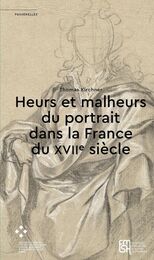 Heurs et malheurs du portrait dans la France du XVIIe siècle
Thomas Kirchner
Diaphanes, 2022 Le portrait est sans conteste le genre artistique le plus fécond du début des Temps modernes. Dans la France du XVIIe siècle, qui se distingue par une mobilité sociale inconnue jusqu’alors, le portrait permet précisément d’appuyer la revendication d’un nouveau statut social ou d’assurer un rang acquis, mais désormais remis en question. Le portrait se fait également l’écho de la discussion capitale concernant le rapport entre le corps et l’âme. Pourtant, les sources écrites parvenues jusqu’à nous, qui s’intéressent au portrait, sont étonnamment parcimonieuses. L’Académie royale de peinture et de sculpture fondée en 1648, en particulier, est presque totalement muette à ce sujet. Et ce, bien que nombre de ses membres gagnent leur vie comme portraitistes et que le genre voie son importance s’accroître au cours du Grand Siècle : les portraits se multiplient, tandis que leur prix augmente constamment. Il semble que l’Académie ait sciemment passé sous silence le portrait et les débats afférents, afin de mieux célébrer comme sa véritable mission la peinture d’histoire, sur laquelle l’institution nous a laissé d’innombrables témoignages.
La présente étude reconstitue les discours autour du portrait dans la France du XVIIe siècle et dévoile une discussion d’une vivacité surprenante, où d’aucuns se sont même demandé si le portrait ne méritait pas – plutôt que la peinture d’histoire – d’occuper la première place dans la hiérarchie des genres.
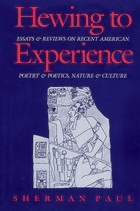 Hewing to Experience: Essays and Reviews on Recent American Poetry and Poetics, Nature and Culture
Sherman Paul
University of Iowa Press, 1989 Hewing to Experience charts Sherman Paul's course of coming to know William Carlos Williams, Hart Crane, Charles Olson, Robert Creeley, and Gary Snyder and the critical scholarship devoted to them as it provides an assessment of recent criticism. The initial section, on criticism and poetry, sets out many of the insistences that give this valuable collection of essays and reviews its coherence. Considered are criticism, poetics, poetry and old age, ethnopoetics, the gift exchange of imagination, and the recent and controversial enterprise of canon formation. The final section of Hewing to Experience provides an important, meditative rereading of the work of Barry Lopez that convincingly places ecological writing within the large revisionist project of avant-garde poetry. Of particular note, too, is the full commentary on the Olson-Creeley correspondence. Throughout, Paul's humane enthusiasm is evident. Hewing to Experience merits the readership of all those who are interested in contemporary poetry and concerned with the ongoing criticism of major poets and with critical practice.
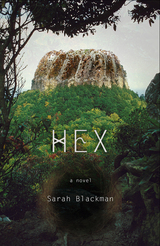 Hex: A Novel
Sarah Blackman
University of Alabama Press, 2016 The debut novel by Sarah Blackman (award-winning author of Mother Box and Other Tales) Hex explores the ways one woman uses language and stories to rebuild her own shattered sense of self.
Alice is a motherless child, born to a motherless child, and raised with neither care nor grace. Her response to this multiple abandonment is a lifelong obsession with her best friend Ingrid, or Thingy, as Alice calls her, and a sort of fantastic narcissism wherein she figures herself as the nexus of a supernatural world she understands through a blend of mountain lore, indigenous Cherokee legend, and the dangerous idiom of the fairy-tale girl who enters the forest despite being warned.
The novel is written in blended parts and is crafted as an address to Thingy’s daughter, Ingrid the Second, who is now in Alice’s care. Alice attempts to tell Ingrid the story of her life: her friendship with Thingy; her troubled relationships with her father, a small-town sexual troubadour; her stepmother, a hard-minded business woman who treats all interactions as commerce; her marriage to her husband Jacob, a silent figure of tremendous will; and her growing suspicion that Ingrid is another girl-child around whom disaster accumulates. Simultaneously, Alice tells the child the kind of bedtime stories she herself has used to make sense of her world. For Alice, and thus in Hex, the line between fantasy and reality is nonexistent, the mountain is older than its geology, and the world a limbo in which everything that has ever happened is coming around again.
Hex is a novel about violence—the violence of the fist, of the womb, of the story. It is also a novel about language and how we use it to build a world when the one we find around us is irretrievably broken.
Hexaflexagons and Other Mathematical Diversions: The First Scientific American Book of Puzzles and Games
Martin Gardner
University of Chicago Press, 1988 These clearly and cleverly presented mathematical recreations of paradoxes and paperfolding, Moebius variations and mnemonics both ancient and modern delight and perplex while demonstating principles of logic, probability, geometry, and other mathematical fields.
"A classic."—Andrew Rothery, Times Education Supplement
"Martin Gardner has turned a trick as neat as any in the book itself. He has selected a group of diversions which are not only entertaining but mathematically meaningful as well. The result is a work which is rewarding on almost every level of mathematical achievement."—Miriam Hecht, Iscripta Mathematica
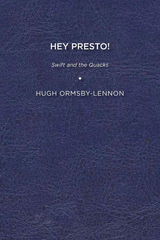 Hey Presto!: Swift and the Quacks
Hugh Ormsby-Lennon
University of Delaware Press, 2011 In this book the author reveals how medicine shows, both ancient and modern, galvanized Jonathan Swift’s imagination and inspired his wittiest satiric voices. Swift dubbed these multifaceted traveling entertainments his Stage-itinerant or “Mountebank’s Stage.” In the course of arguing that the stage-itinerant formed an irresistible model for A Tale of a Tub, Ormsby-Lennon also surmises that the mountebank’s stage will disclose that missing link, long sought, which connects the twin objects of Swift’s ire: gross corruptions in both religion and learning. In the early modern medicine show, the quack doctor delivered a loquacious harangue, infused with magico-mysticism and pseudoscience, high-astounding promises, and boastful narcissism. To help him sell his panaceas and snake-oil, he employed a Merry Andrew and a motley troupe of performers. From their stages, many quacks also peddled their own books, almanacs, and other ephemera, providing Grub Street with many of its best-sellers. Hacks practiced, quite literally, as quacks. Merry Andrew and mountebank traded costumes, whiskers, and voices. Swift apes them all in the Tale.
Published by University of Delaware Press. Distributed worldwide by Rutgers University Press.
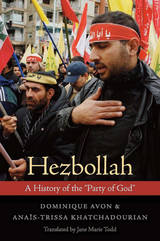 Hezbollah: A History of the "Party of God"
Dominique Avon and Anaїs-Trissa KhatchadourianTranslated by Jane Marie Todd
Harvard University Press, 2012 For thirty years, Hezbollah has played a pivotal role in Lebanese and global politics. That visibility has invited Hezbollah’s lionization and vilification by outside observers, and at the same time has prevented a clear-eyed view of Hezbollah’s place in the history of the Middle East and its future course of action. Dominique Avon and Anaïs-Trissa Khatchadourian provide here a nonpartisan account which offers insights into Hezbollah that Western media have missed or misunderstood.
Now part of the Lebanese government, Hezbollah nevertheless remains in tension with both the transnational Shiite community and a religiously diverse Lebanon. Calling for an Islamic regime would risk losing critical allies at home, but at the same time Hezbollah’s leaders cannot say that a liberal regime is the solution for the future. Consequently, they use the ambiguous expression “civil but believer state.”
What happens when an organization founded as a voice of “revolution” and then “resistance” occupies a position of power, yet witnesses the collapse of its close ally, Syria? How will Hezbollah’s voice evolve as the party struggles to reconcile its regional obligations with its religious beliefs? The authors’ analyses of these key questions—buttressed by their clear English translations of foundational documents, including Hezbollah’s open letter of 1985 and its 2009 charter, and an in-depth glossary of key theological and political terms used by the party’s leaders—make Hezbollah an invaluable resource for all readers interested in the future of this volatile force.
 Hezbollah: The Global Footprint of Lebanon's Party of God
Matthew Levitt
Georgetown University Press "Hezbollah is perhaps the world's most capable group. Terrorism expert Matthew Levitt offers a comprehensive and fascinating assessment of Hezbollah's network outside the Lebanese theater, exposing its operations and fundraising apparatus in Asia, Latin America, Europe, and even the United States." -- Daniel Byman, professor, Center for Security Studies, Georgetown University "Matthew Levitt is a recognized authority on Hezbollah and its activities, both in the Levant and globally.... Hezbollah: The Global Footprint of Lebanon's Party of God fills a vital gap in understanding the international dimensions of Hezbollah, its reach, and its capacities for terrorism worldwide." -- Charles Allen, former assistant director of the central intelligence for collection, CIA "Matthew Levitt has made a significant contribution to public understanding of Hezbollah's worldwide operations. He has shone a bright light into some of the darkest corners of the group's activities overseas." -- Richard Barrett, former head of MI6/SIS/British Intelligence's Counter Terrorism Department and coordinator of the United Nations Al-Qaeda-Taliban Monitoring Team "This book tells the sinister story of a highly sophisticated organization that for more than thirty years has been an archetype of world-wide illicit activities. Hezbollah effectively combines its overt social and political activities with covert criminal and terrorist operations on a global scale. Matthew Levitt's painstaking collection of a rich array of data provides uncomfortable evidence of ' The Global Footprint of Lebanon's Party of God'. This book is essential reading for policy-makers and the international intelligence community." -- Uri Rosenthal, Former Minister of Foreign Affairs, the Netherlands "In Hezbollah: The Global Footprint of Lebanon's Party of God, Matthew Levitt, through adept storytelling and impressive attention to historical detail, manages to teach even long-time students of the Middle East a great deal about Hezbollah. The book leaves little doubt as to the increasing importance, danger, and international reach of Hezbollah. It will be an important resource for serious scholars of the Middle East and a great read for anyone interested in better understanding the region." -- Andy Liepman, Senior Policy Analyst, RAND Corporation; former Principal Deputy Director, National Counterterrorism Center "This book on Lebanese Hezbollah is a unique incisive insight into its global terror tentacles around the globe. Noone has catalogued these terrorist connections and plots in such forensic detail as Matthew Levitt, especially how the terror nexus between Hezbollah and Iran has continually evolved. It systematically lays bare Hezbollah's operational capability and its multiple intersections with Iranian intelligence architecture. This should be required reading for every intelligence analyst and terrorism researcher." -- Magnus Ranstrop, research director, Centre for Asymmetric Threat Studies at the Swedish National Defence College "Matthew Levitt's book touches a key point of the growing debate on Hezbollah: the European approach to the phenomenon. It is a reminder for us Europeans that there are threats that might seem distant geographically, but could nevertheless have a strong impact politically on the continent as well." -- Franco Frattini, Justice and Chamber President of the Italian Conseil d'Etat (Supreme Administrative Court); President of the Italian Society for International Organization (SIOI); former Italian Foreign Minister (2002-2004 and 2008-2011) "Richard Armitage, then Deputy Secretary of State, once described Hezbollah as the 'A team' of international terror. In his extraordinary new book, Matthew Levitt explains why Hezbollah is seen as such a global threat. Levitt paints a compelling picture of Hezbollah's terror activities not just in the Middle East but throughout Europe, Asia, Africa, and North and South America. While Western intelligence and law enforcement agencies have tracked and disrupted Hezbollah's global activities for years, this highly unsettling story has been largely unknown to wider publics. Thanks to Levitt's meticulous and well-written book that should no longer be the case." -- Ambassador Dennis Ross, counselor at the Washington Institute; former special assistant to President Obama and senior director for the Central Region at the National Security Council "Matthew Levitt has laid out a timely and relevant history of Hezbollah, a global terrorist organization often referred to as the 'A Team' of terror. This book comes at the right time as Hezbollah continues its decades-long war against the United States, Israel, and our allies around the globe while it attempts to consolidate political power in Lebanon -- on its behalf and for the Iranian regime." -- Juan Zarate, former Deputy National Security Advisor for Combatting Terrorism and author of the forthcoming book, Treasury's War
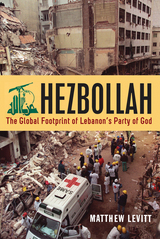 Hezbollah: The Global Footprint of Lebanon's Party of God, 2
Matthew Levitt
Georgetown University Press, 2013 Hezbollah: The Global Footprint of Lebanon's Party of God is the first thorough examination of Hezbollah’s covert activities beyond Lebanon’s borders, including its financial and logistical support networks and its criminal and terrorist operations worldwide. Hezbollah—Lebanon’s "Party of God"—is a multifaceted organization: It is a powerful political party in Lebanon, a Shia Islam religious and social movement, Lebanon’s largest militia, a close ally of Iran, and a terrorist organization. Drawing on a wide range of sources, including recently declassified government documents, court records, and personal interviews with intelligence and law enforcement officials around the world, Matthew Levitt examines Hezbollah’s beginnings, its first violent forays in Lebanon, and then its terrorist activities and criminal enterprises abroad in Europe, the Middle East, South America, Southeast Asia, Africa, and finally in North America. Levitt also describes Hezbollah’s unit dedicated to supporting Palestinian militant groups and Hezbollah’s involvement in training and supporting insurgents who fought US troops in post-Saddam Iraq. The book concludes with a look at Hezbollah’s integral, ongoing role in Iran’s shadow war with Israel and the West, including plots targeting civilians around the world. Levitt shows convincingly that Hezbollah’s willingness to use violence at home and abroad, its global reach, and its proxy-patron relationship with the Iranian regime should be of serious concern. Hezbollah is an important book for scholars, policymakers, students, and the general public interested in international security, terrorism, international criminal organizations, and Middle East studies.
 Hezbollah: The Political Economy of Lebanon's Party of God
Joseph Daher
Pluto Press, 2016 Few political parties have been as misunderstood—or as roundly condemned—as Lebanon’s Hezbollah. With this book, Joseph Daher presents a new way of looking at Hezbollah: through the lens of political economy.
By discarding more common approaches to the party that focus on religious discourse or military questions, Daher is freed up to analyze what the party actually is: an organization that is operating within a specific political and socio-economic context, one that simultaneously offers it a rich ground of support and limits its range of action. Daher clearly and carefully positions Hezbollah within that context, focusing on its historic ties with its main sponsor, Iran, its media and cultural wings, its relationship with Western economic policies, and the impact of the Shi’a population on the sectarian politics of Lebanon. Offering additional attention to the party’s positions on worker’s rights and women’s issues, this fresh take on Hezbollah will be incredibly useful for understanding the world’s most tumultuous region.
HF Filter Design and Computer Simulation
Randall W. Rhea
The Institution of Engineering and Technology, 1994 A book for engineers who design and build filters of all types, including lumped element, coaxial, helical, dielectric resonator, stripline and microstrip types. A thorough review of classic and modern filter design techniques, containing extensive practical design information of passband characteristics, topologies and transformations, component effects and matching. An excellent text for the design and construction of microstrip filters.
HF Radio Systems and Circuits
William E. Sabin
The Institution of Engineering and Technology, 1998 A comprehensive reference for the design of high frequency communications systems and equipment. This revised edition is loaded with practical data, much of which cannot be found in other reference books. Its approach to the subject follows the needs of an engineer from system definition and performance requirements down to the individual circuit elements that make up radio transmitters and receivers.
Hibernate
Elizabeth Eslami
Ohio State University Press, 2014 Hibernate is a big-hearted and brutal story collection. In these globe-spanning stories, Elizabeth Eslami follows ordinary men and women who slowly awaken to hard choices. A fishing trip forces two Montana brothers to grow up in ways they never could have imagined. A Sudanese immigrant begins a new life with his girlfriend in America, only to find himself pulled toward his mother’s past transgressions. A group of tourists visits an Indian pueblo and realizes their tour guide isn’t at all who they expected. A shipwrecked captain and his men cling to the company of narwhals and Eskimos. And in the unforgettable title story, two lovers trade life as they’ve known it for an escape into the extraordinary.
A masterful storyteller as likely to draw blood as to heal, Eslami moves her restless, resilient characters across an uneven landscape toward a hard earned place of peace.
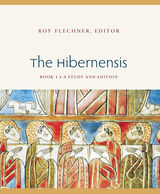 The Hibernensis: Book 1: A Study and Edition
Roy Flechner
Catholic University of America Press, 2019 The Hibernensis is the longest and most comprehensive canon-law text to have circulated in Carolingian Europe. Compiled in Ireland in the late seventh or early eighth century, it exerted a strong and long-lasting influence on the development of European canon law. The present edition offers—for the first time—a complete text of the Hibernensis combining the two main branches of its manuscript transmission. This is accompanied by an English translation and a commentary that is both historical and philological. The Hibernensis is an invaluable source for those interested in church history, the history of canon law, social-economic history, as well as intellectual history, and the history of the book.
Widely recognized as the single most important source for the history of the church in early medieval Ireland, the Hibernensis is also our best index for knowing what books were available in Ireland at the time of its compilation: it consists of excerpted material from the Bible, Church Fathers and doctors, hagiography, church histories, chronicles, wisdom texts, and insular normative material unattested elsewhere. This in addition to the staple sources of canonical collections, comprising the acta of church councils and papal letters. Altogether there are forty-two cited authors and 135 cited texts. But unlike previous canonical collections, the contents of the Hibernensis are not simply derivative: they have been modified and systematically organised, offering an important insight into the manner in which contemporary clerical scholars attempted to define, interpret, and codify law for the use of a growing Christian society.
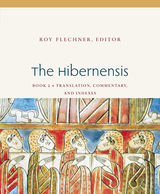 The Hibernensis: Book 2: Translation, Commentary, and Indexes
Roy Flechner
Catholic University of America Press, 2019 The Hibernensis is the longest and most comprehensive canon-law text to have circulated in Carolingian Europe. Compiled in Ireland in the late seventh or early eighth century, it exerted a strong and long-lasting influence on the development of European canon law. The present edition offers—for the first time—a complete text of the Hibernensis combining the two main branches of its manuscript transmission. This is accompanied by an English translation and a commentary that is both historical and philological. The Hibernensis is an invaluable source for those interested in church history, the history of canon law, social-economic history, as well as intellectual history, and the history of the book.
Widely recognized as the single most important source for the history of the church in early medieval Ireland, the Hibernensis is also our best index for knowing what books were available in Ireland at the time of its compilation: it consists of excerpted material from the Bible, Church Fathers and doctors, hagiography, church histories, chronicles, wisdom texts, and insular normative material unattested elsewhere. This in addition to the staple sources of canonical collections, comprising the acta of church councils and papal letters. Altogether there are forty-two cited authors and 135 cited texts. But unlike previous canonical collections, the contents of the Hibernensis are not simply derivative: they have been modified and systematically organised, offering an important insight into the manner in which contemporary clerical scholars attempted to define, interpret, and codify law for the use of a growing Christian society.
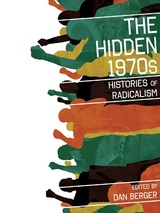 The Hidden 1970s: Histories of Radicalism
Berger, Dan
Rutgers University Press, 2010 The 1970s were a complex, multilayered, and critical part of a long era of profound societal change and an essential component of the decade before-several of the most iconic events of "the sixties" occurred in the ten years that followed. The Hidden 1970s explores the distinctiveness of those years, a time when radicals tried to change the world as the world changed around them.
This powerful collection is a compelling assessment of left-wing social movements in a period many have described as dominated by conservatism or confusion. Scholars examine critical and largely buried legacies of the 1970s. The decade of Nixon's fall and Reagan's rise also saw widespread indigenous militancy, prisoner uprisings, transnational campaigns for self-determination, pacifism, and queer theories of play as political action. Contributors focus on diverse topics, including the internationalization of Black Power and Native sovereignty, organizing for Puerto Rican independence among Latinos and whites, and women's self-defense. Essays and ideas trace the roots of struggles from the 1960s through the 1970s, providing fascinating insight into the myriad ways that radical social movements shaped American political culture in the 1970s and the many ways they continue to do so today.
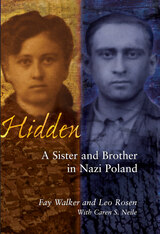 Hidden: A Sister and Brother in Nazi Poland
Fay Walker
University of Wisconsin Press, 2002 Of the Rosenbluth family, only the older children, Faiga and Luzer, had gone into hiding before the SS rounded up the Jews of Kanczuga, Poland. Hidden is Faiga and Luzer’s story, a memoir whose intimate and quiet particularity makes the incomprehensible enormity of the Holocaust immediate, human, and devastatingly real.
In alternating first-person narratives, Faiga (Fay) and Luzer (Leo) take readers into their very different but inextricably linked experiences in Nazi-occupied Poland. Faiga, the once-dignified young lady from a good home with servants and a seat by the eastern wall of the synagogue, spends two years wandering the perilous countryside, hoping to be taken for a peasant. Mere miles away, knowing nothing of his sister’s fate, Luzer, the leather wholesaler’s only son, lies silent all day in the stifling dark corner of a barn, where the smell of the cows’ warm hides are a piquant reminder of his lost world. Hidden deftly summons that world, as the familiar comforts and squabbles of life in a well-to-do, religious Jewish family are slowly overwhelmed by the grim news coming out of Germany. We follow Faiga and Luzer through the early forebodings and deprivations of the war, into hiding among righteous Poles and erstwhile neighbors-turned-betrayers, and finally, at war’s end, back once more into the world—but not necessarily into safety. Told in a confident, clear, and unsentimental prose, this is a story of heroism and tragedy writ large and small, of two young people coming of age in a world in chaos and then trying to return to "normal" after experiences as unimaginable as they are unforgettable.
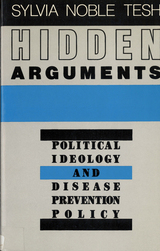 Hidden Arguments: Political Ideology and Disease Prevention Policy
Sylvia Noble Tesh
Rutgers University Press, 1988 In this provocative book, Sylvia Tesh shows how "politics masquerades as science" in the debates over the causes and prevention of disease. Tesh argues that ideas about the causes of disease which dominate policy at any given time or place are rarely determined by scientific criteria alone. The more critical factors are beliefs about how much government can control industry, who should take risks when scientists are uncertain, and whether the individual or society has the ultimate responsibility for health. Tesh argues that instead of lamenting the presence of this extra-scientific reasoning, it should be brought out of hiding and welcomed. She illustrates her position by analyzing five different theories of disease causality that have vied for dominance during the nineteenth and twentieth centuries, and discusses in detail the political implications of each theory. Tesh also devotes specific chapters to the multicausal theory of disease, to health education policy in Cuba, to the 1981 air traffic controller's strike, to the debate over Agent Orange, and to an analysis of science as a belief system.
Along the way she makes these principal points: She criticizes as politically conservative the idea that diseases result from a multifactorial web of causes. Placing responsibility for disease prevention on "society" is ideological, she argues. In connection with the air traffic controllers she questions whether it is in a union's best interests to claim that workers' jobs are stressful. She shows why there are no entirely neutral answers to questions about the toxicity of environmental pollutants. In a final chapter, Tesh urges scientists to incorporate egalitarian values into their search for the truth, rather than pretending science can be divorced from that political ideology.
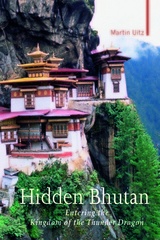 Hidden Bhutan: Entering the Kingdom of the Thunder Dragon
Martin Uitz
Haus Publishing, 2006 In 2006 Time magazine listed the King of Bhutan, Jigme Singye Wangchuk, as one of the 100 "leaders and revolutionaries" who are changing our world today. Yet it was only in the 1960s that the first road linking the Kingdom of the Thunder Dragon with India was opened, and since 1974 only a strictly limited number of tourists have been allowed to visit each year. Martin Uitz, a renowned expert on Bhutan, describes how the Bhutanese, in pursuit of the principle of "Gross National Happiness", are carefully moving towards a more modern future, including a constitution and democracy, whilst preserving their traditional society and attempting to conserve the environment. Uitz made many fascinating discoveries in this enigmatic Kingdom. He was able to explain why the only traffic light was taken out of service, why six men are not allowed to go on a journey together, and what the subtle eroticism of a traditional hot-stone bath is all about. Along the way he also discovered that the Bhutanese hills are more alive with Edelweiss than the hills around his native Salzburg.
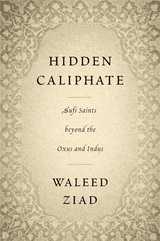 Hidden Caliphate: Sufi Saints beyond the Oxus and Indus
Waleed Ziad
Harvard University Press, 2021 Winner of the Albert Hourani Book Award
Sufis created the most extensive Muslim revivalist network in Asia before the twentieth century, generating a vibrant Persianate literary, intellectual, and spiritual culture while tying together a politically fractured world.
In a pathbreaking work combining social history, religious studies, and anthropology, Waleed Ziad examines the development across Asia of Muslim revivalist networks from the eighteenth to the twentieth centuries. At the center of the story are the Naqshbandi-Mujaddidi Sufis, who inspired major reformist movements and articulated effective social responses to the fracturing of Muslim political power amid European colonialism. In a time of political upheaval, the Mujaddidis fused Persian, Arabic, Turkic, and Indic literary traditions, mystical virtuosity, popular religious practices, and urban scholasticism in a unified yet flexible expression of Islam. The Mujaddidi “Hidden Caliphate,” as it was known, brought cohesion to diverse Muslim communities from Delhi through Peshawar to the steppes of Central Asia. And the legacy of Mujaddidi Sufis continues to shape the Muslim world, as their institutional structures, pedagogies, and critiques have worked their way into leading social movements from Turkey to Indonesia, and among the Muslims of China.
By shifting attention away from court politics, colonial actors, and the standard narrative of the “Great Game,” Ziad offers a new vision of Islamic sovereignty. At the same time, he demonstrates the pivotal place of the Afghan Empire in sustaining this vast inter-Asian web of scholastic and economic exchange. Based on extensive fieldwork across Afghanistan, Uzbekistan, and Pakistan at madrasas, Sufi monasteries, private libraries, and archives, Hidden Caliphate reveals the long-term influence of Mujaddidi reform and revival in the eastern Muslim world, bringing together seemingly disparate social, political, and intellectual currents from the Indian Ocean to Siberia.
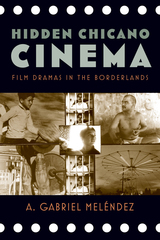 Hidden Chicano Cinema: Film Dramas in the Borderlands
Meléndez, A. Gabriel
Rutgers University Press, 2013 Hidden Chicano Cinema examines how New Mexico, situated within the boundaries of the United States, became a stand-in for the exotic non-western world that tourists, artists, scientists, and others sought to possess at the dawn of early filmmaking, a disposition stretching from the silent era to today as filmmakers screen their fantasies of what they wished the Southwest Borderlands to be.
The book highlights “film moments” in this region’s history including the “filmic turn” ushered in by Chicano/a filmmakers who created new ways to represent their community and region. A. Gabriel Meléndez narrates the drama, intrigue, and politics of these moments and accounts for the specific cinematic practices and the sociocultural detail that explains how the camera itself brought filmmakers and their subjects to unexpected encounters on and off the screen. Such films as Adventures in Kit Carson Land, The Rattlesnake, and Red Sky at Morning, among others, provide examples of movies that have both educated and misinformed us about a place that remains a “distant locale” in the mind of most film audiences.
 The Hidden Costs of Coastal Hazards: Implications For Risk Assessment And Mitigation
The H. John Heinz III Center for Science; Foreword by Gilbert F. White
Island Press, 2000 Society has limited hazard mitigation dollars to invest. Which actions will be most cost effective, considering the true range of impacts and costs incurred? In 1997, the H. John Heinz III Center for Science, Economics and the Environment began a two-year study with a panel of experts to help develop new strategies to identify and reduce the costs of weather-related hazards associated with rapidly increasing coastal development activities.The Hidden Costs of Coastal Hazards presents the panel's findings, offering the first in-depth study that considers the costs of coastal hazards to natural resources, social institutions, business, and the built environment. Using Hurricane Hugo, which struck South Carolina in 1989, as a case study, it provides for the first time information on the full range of economic costs caused by a major coastal hazard event. The book: describes and examines unreported, undocumented, and hidden costs such as losses due to business interruption, reduction in property values, interruption of social services, psychological trauma, damage to natural systems, and others examines the concepts of risk and vulnerability, and discusses conventional approaches to risk assessment and the emerging area of vulnerability assessment recommends a comprehensive framework for developing and implementing mitigation strategies documents the human impact of Hurricane Hugo and provides insight from those who lived through it.The Hidden Costs of Coastal Hazards takes a structured approach to the problem of coastal hazards, offering a new framework for community-based hazard mitigation along with specific recommendations for implementation. Decisionmakers -- both policymakers and planners -- who are interested in coastal hazard issues will find the book a unique source of new information and insight, as will private-sector decisionmakers including lenders, investors, developers, and insurers of coastal property.
Hidden Critique of Solomon in the Hebrew Bible
Pekka Särkiö
SBL Press, 2025 The period of Israel’s united kingdom under King Solomon is portrayed in 1 Kings 3–11 as ideal in order to arouse hope for the restoration of Israelite kingship. Conversely, postexilic writers were faced with traditions that blamed the division of the united kingdom on Solomon’s sins. Pekka Särkiö explores how the writers of the Hebrew Bible used scribal tools and creativity to weave these disparate perspectives together with a subtle, hidden critique that stretches through the Torah, Prophets, and Writings. This in-depth study reveals the expressions, themes, and structures that evoke Solomon’s foreign wives, his excessive wealth, his respect for other gods, his pride, and his elevation to a venerated character. The resulting texts allow the coexistence of hope for the future and the concerns of northern survivors who blamed Solomon for the exile and the divided kingdom.
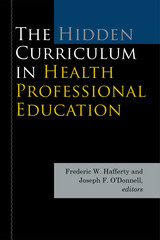 The Hidden Curriculum in Health Professional Education
Edited by Frederic W. Hafferty
Dartmouth College Press, 2015 The hidden curriculum (HC) in health professional education comprises the organizational and institutional contexts and cultural subtexts that shape how and what students learn outside the formal and intended curriculum. HC includes informal social processes such as role modeling, informal conversations and interactions among faculty and students, and more subterranean forces of organizational life such as the structure of power and privilege and the architectural layout of work environments. For better and sometimes for worse, HC functions as a powerful vehicle for learning and requires serious attention from health professions educators. This volume, of interest to medical and health professionals, educators, and students, brings together twenty-two new essays by experts in various aspects of HC. An introduction and conclusion by the editors contextualizes the essays in the broader history and literature of the field.
 Hidden Empire of Finance: How Wall Street Profits from Our Cities and Fuels Global Inequality
Michael Goldman
Duke University Press, 2026 Hidden Empire of Finance follows the rise of new global cities, tracing their roots back to the 1970s global proliferation of neoliberalism and following their fate in the wake of the 2008 financial collapse. As India, China, and other nations sought to develop urban infrastructures that could compete with western hubs like New York, Paris, and London, large-scale flows of capital intruded into national economies to speculate on the growing real estate market. A web of opaque financial products, such as collateralized debt and real estate investment trusts, became alternative vehicles for the speculators’ investments, resulting in vast networks of public goods and services that are now owned and controlled by major financial firms located oceans away. Michael Goldman shows that speculative urbanism relies on dispossession and the racialization of institutional practices to fuel finance's insatiable appetite for capital, determining the ways cities across the global South and North are governed.
 The Hidden Face of Local Power: Appointed Boards and the Limits of Democracy
Mirya R. Holman
Temple University Press, 2025 The Hidden Face of Local Power explicates the purpose, role, and consequences of appointed boards in U.S. cities. Mirya Holman finds that cities create strong boards that generate policy, consolidate power, and defend the interests of businesses and wealthy and white residents. In contrast, weak boards pacify agitation from marginalized groups to give the appearance of inclusivity, democratic deliberation, and redistributional policymaking. Cities preserve this strong board/weak board dichotomy through policymaking power, institutional design, and by controlling who serves on the boards.
The Hidden Face of Local Power examines the role of boards in the development of urban political institutions, the allocation of power in local politics, and the persistence of inequality. Holman enhances our understanding of how political institutions have contributed to racism and their impact on how people use and live in urban spaces. In her shrewd analysis of the creation and use of boards as political institutions, Holman proves that neither weak nor strong boards achieve the goal they are advertised to achieve. In doing so, she provides a new view of the failures of local democracy along with ideas for improvement.
The Hidden Force
L. Couperus
University of Massachusetts Press, 1985 The Hidden Force is a 1900 novel by the Dutch writer, L. Couperus. In the novel, the protagonist, Van Oudijck, a Dutch resident, faces his own demise as a result of his inability to see past his Western rationalism. The East Indian people and countryside have no effect on him, and the ambiance of Java, coupled with the adverse behavior of their Javanese subjects, prove more powerful than the might and power of the colonials.
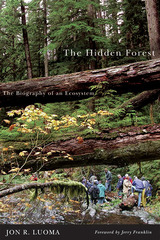 Hidden Forest, The: The Biography of an Ecosystem
Jon R. Luoma
Oregon State University Press, 2006 The tallest species of spruce, hemlock, fir, cedar, and pine trees on earth coexist in the old growth of the H. J. Andrews Experimental Forest in Oregon’s Cascade Range. Set aside as a living laboratory by the U.S. Forest Service in 1948, the 16,000 acres represent a vital scientific endeavor: the long-term study of a single contained ecosystem. Here, for the first time, researchers from an enormous range of disciplines—forest scientists, botanists, entomologists, wildlife ecologists, soil biologists, and others—have assembled to examine the role of every working element in the life of a forest. In The Hidden Forest, veteran science writer Jon Luoma offers an absorbing account of how these scientists came to recognize the importance of natural forest ecosystems and how their research is revolutionizing forest management. Luoma takes readers into the hidden forest where researchers have discovered a host of species previously unknown to science, and interactions in the forest ecosystem that no one previously imagined. He describes projects dealing with the forest canopy, rotting logs, insects, fungi, wildlife, streams, and the effects of flood, fire, clear cutting, and volcanic eruption. And he tells the human story behind the research, capturing the shared excitement and wonder of scientific discovery. Along the way, Luoma provides a short course in such complex issues as forest succession, biodiversity, and the politics of forestry. In a new foreword, Jerry Franklin discusses the importance of dedicated, long-term research sites and comments on new discoveries that have emerged from forest ecosystem research since The Hidden Forest was first published.
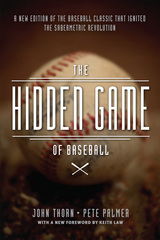 The Hidden Game of Baseball: A Revolutionary Approach to Baseball and Its Statistics
John Thorn, Pete Palmer, with David Reuther
University of Chicago Press, 2015 Long before Moneyball became a sensation or Nate Silver turned the knowledge he’d honed on baseball into electoral gold, John Thorn and Pete Palmer were using statistics to shake the foundations of the game. First published in 1984, The Hidden Game of Baseball ushered in the sabermetric revolution by demonstrating that we were thinking about baseball stats—and thus the game itself—all wrong. Instead of praising sluggers for gaudy RBI totals or pitchers for wins, Thorn and Palmer argued in favor of more subtle measurements that correlated much more closely to the ultimate goal: winning baseball games.
The new gospel promulgated by Thorn and Palmer opened the door for a flood of new questions, such as how a ballpark’s layout helps or hinders offense or whether a strikeout really is worse than another kind of out. Taking questions like these seriously—and backing up the answers with data—launched a new era, showing fans, journalists, scouts, executives, and even players themselves a new, better way to look at the game.
This brand-new edition retains the body of the original, with its rich, accessible analysis rooted in a deep love of baseball, while adding a new introduction by the authors tracing the book’s influence over the years. A foreword by ESPN’s lead baseball analyst, Keith Law, details The Hidden Game’s central role in the transformation of baseball coverage and team management and shows how teams continue to reap the benefits of Thorn and Palmer’s insights today. Thirty years after its original publication, The Hidden Game is still bringing the high heat—a true classic of baseball literature.
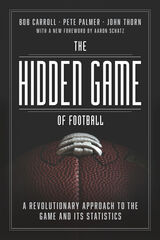 The Hidden Game of Football: A Revolutionary Approach to the Game and Its Statistics
Bob Carroll, Pete Palmer, and John Thorn
University of Chicago Press, 2023 The 1988 cult classic behind football’s data analytics revolution, now back in print with a new foreword and preface.
Data analytics have revolutionized football. With play sheets informed by advanced statistical analysis, today’s coaches pass more, kick less, and go for more two-point or fourth-down conversions than ever before. In 1988, sportswriters Bob Carroll, Pete Palmer, and John Thorn proposed just this style of play in The Hidden Game of Football, but at the time baffled readers scoffed at such a heartless approach to the game. Football was the ultimate team sport and unlike baseball could not be reduced to pure probabilities. Nevertheless, the book developed a cult following among analysts who, inspired by its unorthodox methods, went on to develop the core metrics of football analytics used today: win probability, expected points, QBR, and more. With a new preface by Thorn and Palmer and a new foreword by Football Outsiders’s Aaron Schatz, The Hidden Game of Football remains an essential resource for armchair coaches, fantasy managers, and fans of all stripes.
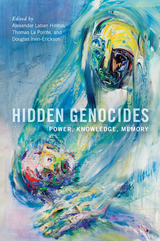 Hidden Genocides: Power, Knowledge, Memory
Alexander Laban Hinton, Thomas La Pointe, and Douglas Irvin-Erickson
Rutgers University Press, 2014 Why are some genocides prominently remembered while others are ignored, hidden, or denied? Consider the Turkish campaign denying the Armenian genocide, followed by the Armenian movement to recognize the violence. Similar movements are building to acknowledge other genocides that have long remained out of sight in the media, such as those against the Circassians, Greeks, Assyrians, the indigenous peoples in the Americas and Australia, and the violence that was the precursor to and the aftermath of the Holocaust.
The contributors to this collection look at these cases and others from a variety of perspectives. These essays cover the extent to which our biases, our ways of knowing, our patterns of definition, our assumptions about truth, and our processes of remembering and forgetting as well as the characteristics of generational transmission, the structures of power and state ideology, and diaspora have played a role in hiding some events and not others. Noteworthy among the collection’s coverage is whether the trade in African slaves was a form of genocide and a discussion not only of Hutus brutalizing Tutsi victims in Rwanda, but of the execution of moderate Hutus as well.
Hidden Genocides is a significant contribution in terms of both descriptive narratives and interpretations to the emerging subfield of critical genocide studies.
Contributors: Daniel Feierstein, Donna-Lee Frieze, Krista Hegburg, Alexander Laban Hinton, Adam Jones, A. Dirk Moses, Chris M. Nunpa, Walter Richmond, Hannibal Travis, and Elisa von Joeden-Forgey
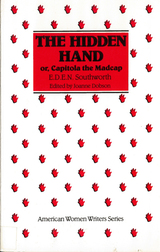 The Hidden Hand: Or, Capitola the Madcap by E. D. E. N. Southworth
Dobson, Joanne
Rutgers University Press, 1988 E.D.E.N. Southworth was one of the most popular and prolific writers of the nineteenth century and her Capitola Black, or Black Cap - a cross-dressing, adventure-seeking girl-woman - was so well-loved that the book was serialized three times between 1859 and 1888 and was dramatized in forty different versions. When we first meet sharp and witty Capitola she is living among beggars and street urchins, and dressed as a boy because a boy can get work and be safe, whereas a girl is left to starve for want of "proper" employment. Unknown to her, Capitola has a very rich elderly guardian who finds her at a providential moment and takes her back to his palatial mansion where she finds herself "decomposing above ground for want of having my blood stirred." But not to fear. There are bandits, true-loves, evil men, long-lost mothers, and sweet women friends in Capitola's future - not to mention thunder storms, kidnap attempts, and duels. The pace is fast, the action wonderfully unbelievable. This is escape literature at its nineteenth-century best, with a woman at its center who makes you feel strong, daring, and reckless.
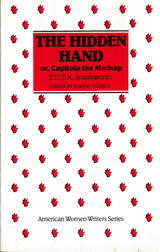 The Hidden Hand: Or, Capitola the Madcap by E. D. E. N. Southworth
Dobson, Joanne
Rutgers University Press, 1988 E.D.E.N. Southworth was one of the most popular and prolific writers of the nineteenth century and her Capitola Black, or Black Cap - a cross-dressing, adventure-seeking girl-woman - was so well-loved that the book was serialized three times between 1859 and 1888 and was dramatized in forty different versions. When we first meet sharp and witty Capitola she is living among beggars and street urchins, and dressed as a boy because a boy can get work and be safe, whereas a girl is left to starve for want of "proper" employment. Unknown to her, Capitola has a very rich elderly guardian who finds her at a providential moment and takes her back to his palatial mansion where she finds herself "decomposing above ground for want of having my blood stirred." But not to fear. There are bandits, true-loves, evil men, long-lost mothers, and sweet women friends in Capitola's future - not to mention thunder storms, kidnap attempts, and duels. The pace is fast, the action wonderfully unbelievable. This is escape literature at its nineteenth-century best, with a woman at its center who makes you feel strong, daring, and reckless.
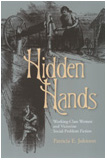 Hidden Hands: Working-Class Women and Victorian Social-Problem Fiction
Patricia E. Johnson
Ohio University Press, 2001 Tracing the Victorian crisis over the representation of working-class women to the 1842 Parliamentary bluebook on mines, with its controversial images of women at work, Hidden Hands argues that the female industrial worker became even more dangerous to represent than the prostitute or the male radical because she exposed crucial contradictions between the class and gender ideologies of the period and its economic realities.
Drawing on the recent work of feminist historians, Patricia Johnson lays the groundwork for a reinterpretation of Victorian social-problem fiction that highlights its treatment of issues that particularly affected working-class women: sexual harassment; the interconnections between domestic ideology and domestic violence; their relationships to male-dominated working-class movements such as Luddism, Chartism, and unionism; and their troubled connection to middle-class feminism.
Uncovering a series of images in Victorian fiction ranging from hot-tempered servants and sexually harassed factory girls to working-class homemakers pictured as beaten dogs, Hidden Hands demonstrates that representations of working-class women, however marginalized or incoherent, reveal the very contradictions they are constructed to hide and that the dynamics of these representations have broad implications both for other groups, such as middle-class women, and for the emergence of working-class women as writers themselves.
Hidden Heroes: America's Military Caregivers
Rajeev Ramchand
RAND Corporation, 2014 Little has been reported about “military caregivers”—the population of those who care for wounded, ill, and injured military personnel and veterans. This report summarizes the results of a study designed to describe the magnitude of military caregiving in the United States today, as well as to identify gaps in the array of programs, policies, and initiatives designed to support military caregivers.
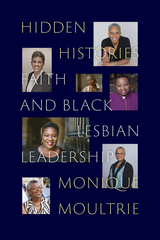 Hidden Histories: Faith and Black Lesbian Leadership
Monique Moultrie
Duke University Press, 2023 In Hidden Histories, Monique Moultrie collects oral histories of Black lesbian religious leaders in the United States to show how their authenticity, social justice awareness, spirituality, and collaborative leadership make them models of womanist ethical leadership. By examining their life histories, Moultrie frames queer storytelling as an ethical act of resistance to the racism, sexism, and heterosexism these women experience. She outlines these women’s collaborative, intergenerational, and leadership styles, and their concerns for the greater good and holistic well-being of humanity and the earth. She also demonstrates how their ethos of social justice activism extends beyond LGBTQ and racialized communities and provides other models of religious and community leadership. Addressing the invisibility of Black lesbian religious leaders in scholarship and public discourse, Moultrie revises modern understandings of how race, gender, and sexual identities interact with religious practice and organization in the twenty-first century.
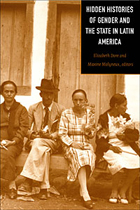 Hidden Histories of Gender and the State in Latin America
Elizabeth Dore and Maxine Molyneux, eds.
Duke University Press, 2000 This collection examines the mutually influential interactions of gender and the state in Latin America from the late colonial period to the end of the twentieth century. Locating watershed moments in the processes of gender construction by the organized power of the ruling classes and in the processes by which gender has conditioned state-making, Hidden Histories of Gender and the State in Latin America remedies the lack of such considerations in previous studies of state formation. Along these lines, the book begins with two theoretical chapters by the editors, Elizabeth Dore and Maxine Molyneux. Dore opens by arguing against the prevailing view that the nineteenth century was marked by a gradual emancipation of women, while Molyneux considers how various Latin American state forms—liberal, corporatist, socialist, neoliberal—have more recently sought to incorporate women into their projects of social reform and modernization. These essays are followed by twelve case studies that examine how states have contributed to the normalization of male and female roles and relations. Covering an impressive breadth not only of historical time but also of geographical scope, this volume moves from Brazil to Costa Rica, from Mexico to Chile, traversing many countries in between. Contributors explore such topics as civic ritual in Bolivia, rape in war-torn Colombia, and the legal construction of patriarchy in Argentina. They examine the public regulation of domestic life, feminist lobby groups, class compromise, female slaves, and women in rural households—distinct, salient aspects of the state-gender relationship in specific countries at specific historical junctures. By providing a richly descriptive and theoretically grounded account of the interaction between state and gender politics in Latin America, this volume contributes to an important conversation between feminists interested in the state and political scientists interested in gender. It will be valuable to such disciplines as history, sociology, international comparative studies, and Latin American studies.
Contributors. María Eugenia Chaves, Elizabeth Dore, Rebecca Earle, Jo Fisher, Laura Gotkowitz, Donna J. Guy, Fiona Macaulay, Maxine Molyneux, Eugenia Rodriguez, Karin Alejandra Rosemblatt, Ann Varley, Mary Kay Vaughan
 Hidden Histories of Unauthorized Migrations from Europe to the United States
Edited by Danielle Battisti and S. Deborah Kang
University of Illinois Press, 2025 Often depicted as the nation’s iconic legal immigrant, unauthorized European migrants are often overlooked by scholars, policymakers, and the media. This volume tells the stories of European migrants who adopted irregular migration strategies to enter and remain in the United States throughout the twentieth century. Contributors explore facets of this history with essays on migration patterns from Russia, Italy, Ireland, the Ottoman Empire, and Poland. They also offer important arguments about the treatment of unauthorized European migrants by states and societies on both sides of the Atlantic and how the reception of undocumented immigrants has been and continues to be impacted by the dynamics of racial, class, and gender constructions in the United States and abroad. As the contributors show, the reception accorded unauthorized European migrants frequently obscured and even normalized their irregular migration strategies, easing their access to American citizenship. Revealing and insightful, Hidden Histories of Unauthorized Migrations from Europe to the United States sheds new light our intertwined notions of race, legality, and immigration. Contributors: Danielle Battisti, Ashley Johnson Bavery, Mary Patrice Erdmans, Polina Ermoshkina, Torsten Feys, Carly Goodman, S. Deborah Kang, E. Kyle Romero, Randa Tawil, and Joanna Wojdon
Hidden Histories: Palestine and the Eastern Mediterranean
Basem L. Ra'ad
Pluto Press, 2010 For thousands of years, the region of Palestine and the East Mediterranean has been denied an indigenous voice for an inclusive history. Three religions ascribe their origins to this part of the world, appropriating and re-appropriating the "Holy Land" time and again.
Hidden Histories offers a powerful corrective to common understandings. It emphasizes Palestine's long history and dispels many old and new myths – covering issues of religious origins and sacred sites, identity and self-colonization, and the retrieval of ancient heritage.
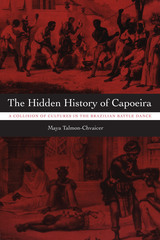 The Hidden History of Capoeira: A Collision of Cultures in the Brazilian Battle Dance
By Maya Talmon-Chvaicer
University of Texas Press, 2007 Capoeira, a Brazilian battle dance and national sport, has become popular all over the world. First brought to Brazil by African slaves and first documented in the late eighteenth century, capoeira has undergone many transformations as it has diffused throughout Brazilian society and beyond, taking on a multiplicity of meanings for those who participate in it and for the societies in which it is practiced. In this book, Maya Talmon-Chvaicer combines cultural history with anthropological research to offer an in-depth study of the development and meaning of capoeira, starting with the African cultures in which it originated and continuing up to the present day. Using a wealth of primary sources, Talmon-Chvaicer analyzes the outlooks on life, symbols, and rituals of the three major cultures that inspired capoeira—the Congolese (the historic area known today as Congo-Angola), the Yoruban, and the Catholic Portuguese cultures. As she traces the evolution of capoeira through successive historical eras, Talmon-Chvaicer maintains a dual perspective, depicting capoeira as it was experienced, observed, and understood by both Europeans and Africans, as well as by their descendants. This dual perspective uncovers many covert aspects of capoeira that have been repressed by the dominant Brazilian culture. This rich study reclaims the African origins and meanings of capoeira, while also acknowledging the many ways in which Catholic-Christian culture has contributed to it. The book will be fascinating reading not only for scholars but also for capoeira participants who may not know the deeper spiritual meanings of the customs, amulets, and rituals of this jogo da vida, "game of life."
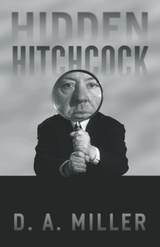 Hidden Hitchcock
D. A. Miller
University of Chicago Press, 2016 No filmmaker has more successfully courted mass-audience understanding than Alfred Hitchcock, and none has been studied more intensively by scholars. In Hidden Hitchcock, D. A. Miller does what seems impossible: he discovers what has remained unseen in Hitchcock’s movies, a secret style that imbues his films with a radical duplicity.
Focusing on three films—Strangers on a Train, Rope, and The Wrong Man—Miller shows how Hitchcock anticipates, even demands a “Too-Close Viewer.” Dwelling within us all and vigilant even when everything appears to be in good order, this Too-Close Viewer attempts to see more than the director points out, to expand the space of the film and the duration of the viewing experience. And, thanks to Hidden Hitchcock, that obsessive attention is rewarded. In Hitchcock’s visual puns, his so-called continuity errors, and his hidden appearances (not to be confused with his cameos), Miller finds wellsprings of enigma.
Hidden Hitchcock is a revelatory work that not only shows how little we know this best known of filmmakers, but also how near such too-close viewing comes to cinephilic madness.
 Hidden Holiness
Michael Plekon
University of Notre Dame Press, 2009
In Hidden Holiness, Michael Plekon challenges us to examine the concept of holiness. He argues that both Orthodox and Catholic churches understand saints to be individuals whose lives and deeds are unusual, extraordinary, or miraculous. Such a requirement for sainthood undermines, in his view, one of the basic messages of Christianity: that all people are called to holiness.
Instead of focusing on the ecclesiastical process of recognizing saints, Plekon explores a more ordinary and less noticeable "hidden" holiness, one founded on the calling of all to be prophets and priests and witnesses to the Gospel. As Rowan Williams has insisted, people of faith need to find God's work in their culture and daily lives. With that in mind, Plekon identifies a fascinatingly diverse group of faithful who exemplify an everyday sanctity, as well as the tools they have used to enact their faith.
Plekon calls upon contemporary writers—among them, Rowan Williams, Kathleen Norris, Sara Miles, Simone Weil, and Darcey Steinke—as well as such remarkable and controversial figures as Mother Teresa, Thomas Merton, and Dorothy Day—to demonstrate ways to imagine a more diverse and everyday holiness. He also introduces four individuals of "hidden holiness": a Yup'ik Alaskan, Olga Arsumquak Michael; the artist Joanna Reitlinger; the lay theologian Elisabeth Behr-Sigel; and human rights activist Paul Anderson. A generous and expansive treatment of the holy life, accessibly written for all readers, Plekon's book is sure to inspire us to recognize and celebrate the holiness hidden in the ordinary lives of those around us.
"There is a widespread idea that holiness, if it exists at all, is something that happened in the long-ago past. This book is evidence to the contrary. It contains stories of holiness, typically hidden, in the midst of modern times. Some will find in these stories confirmation of their faith, all may read the stories as moving accounts of human drama.” —Peter L. Berger, emeritus University Professor, Boston University and Institute of Religion and World Affairs
“Father Michael Plekon pushes a boundary here. Our usual understanding of those who are saints involves something heroic, something extraordinary—and it allows us to put too comfortable a distance between ourselves and those we consider saints. We are able to look away from the Lord's demand that we are to be holy, as God is. By focusing on the manifest holiness of a number of people who did not demonstrate such extraordinary heroism, people whose lives nevertheless give witness to the transforming power of the gospel, he challenges all of us to become what our baptism calls us to be.” —John Garvey, author of Seeds of the Word: Orthodox Thinking on Other Religions
"In Hidden Holiness, Michael Plekon writes about the ways holiness and grace are everywhere, not just located inside church buildings. He writes of people living out their faith. I loved this book and recommend it to anyone who wants a relationship with divinity that is creative and on-going, a religion deeply embodied unconfined by doctrine and rules." —Darcey Steinke, author of Easter Everywhere: A Memoir and Jesus Saves
“Recent years have seen a great resurgence of interest in the saints—not as legendary heroes or heavenly patrons, but as spiritual companions and models of faithfulness. Michael Plekon writes with compassion and insight about a number of those models. But his great contribution is to highlight a new style of holiness, hidden in the ordinary duties and challenges of everyday life. A profound, ecumenically rich, reflection on the meaning of sainthood in our time.” —Robert Ellsberg, author, All Saints
“What impresses me most about Hidden Holiness is its humane Christian vision. Fr. Plekon is a wonderful story-teller, retelling the lives of the saints with exceptional verve and clarity. Vividly, he conveys the diversity and individuality of the saints he considers; far from exhibiting cookie-cutter perfection, Fr. Plekon’s saints seem to embody particular concrete ideas in the mind of God, and to work out their salvation in the most unpromising conditions. This is just what we need to know about holiness, lest the idea come to seem fusty and irrelevant.” —Carol Zaleski, Smith College
 The Hidden Holmes: His Theory of Torts in History
David Rosenberg
Harvard University Press, 1995 This bold book challenges a contemporary consensus on the titanic figure of Oliver Wendell Holmes. Holmes is the acknowledged source of twentieth-century tort law, but David Rosenberg takes sharp issue with the current portrayal of Holmes as a legal formalist in torts who opposed the notion of strict liability and dogmatically advocated a universal rule of negligence, primarily to subsidize industrial development. Marshaling the evidence found in Holmes' classic The Common Law and other writings, the author reveals that the opposite was the case, and, in the process, raises troubling questions about the present state of legal scholarship.
It was Holmes who founded the modern conception and justification of strict liability. He envisioned an expansive role for strict liability to augment the negligence rule in preventing and redressing injury from industrial activity. This recovery of Holmes' theory of torts provides new insights into the nature of the jurisprudence that launched the American legal realist movement, and also overturns standard interpretations of the history of tort law.
Rejecting the prevailing view that either strict liability or negligence reigned exclusively, Holmes and his contemporaries reconciled the existence of both rules, and advocated reforms of tort law to protect society from the unprecedented hazards of industrial life. The parallel drawn by the book between their response and ours in grappling with the novel problem of mass torts confirms Holmes' belief in the adaptive genius of the common law.
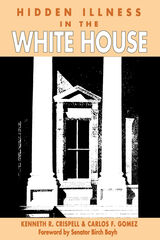 Hidden Illness in the White House
Kenneth R. Crispell and Carlos Gomez
Duke University Press, 1988 The serious illness of three presidents—Woodrow Wilson, Franklin Delano Roosevelt, and John F. Kennedy—as well as the injury Ronald Reagan received in the assassination attempt upon him have revealed our woefully inadequate system for handling presidential incapacity. The authors believe that this flawed system poses a major threat to the nation, and they provide sobering reports on how the government functioned (or failed to function) during times of presidential impairment. The public was kept in the dark regarding the gravity of the presidential condition, often unaware that critical decisions were being made while the president was suffering from a severe illness.
Hidden Illness in the White House contains startling new information on the severity of Roosevelt’s illness during the crucial Yalta negotiations and the fact that Kennedy suffered from Addison’s disease, a life-threatening illness, long before he was elected to the presidency. In each case the authors demonstrate that a largely successful effort was made to conceal the president’s true medical condition from the public.
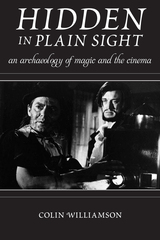 Hidden in Plain Sight: An Archaeology of Magic and the Cinema
Williamson, Colin
Rutgers University Press, 2015 What does it mean to describe cinematic effects as “movie magic,” to compare filmmakers to magicians, or to say that the cinema is all a “trick”? The heyday of stage illusionism was over a century ago, so why do such performances still serve as a key reference point for understanding filmmaking, especially now that so much of the cinema rests on the use of computers?
To answer these questions, Colin Williamson situates film within a long tradition of magical practices that combine art and science, involve deception and discovery, and evoke two forms of wonder—both awe at the illusion displayed and curiosity about how it was performed. He thus considers how, even as they mystify audiences, cinematic illusions also inspire them to learn more about the technologies and techniques behind moving images. Tracing the overlaps between the worlds of magic and filmmaking, Hidden in Plain Sight examines how professional illusionists and their tricks have been represented onscreen, while also considering stage magicians who have stepped behind the camera, from Georges Méliès to Ricky Jay.
Williamson offers an insightful, wide-ranging investigation of how the cinema has functioned as a “device of wonder” for more than a century, while also exploring how several key filmmakers, from Orson Welles to Christopher Nolan and Martin Scorsese, employ the rhetoric of magic. Examining pre-cinematic visual culture, animation, nonfiction film, and the digital trickery of today’s CGI spectacles, Hidden in Plain Sight provides an eye-opening look at the powerful ways that magic has shaped our modes of perception and our experiences of the cinema.
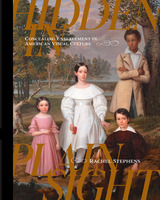 Hidden in Plain Sight: Concealing Enslavement in American Visual Culture
Rachel Stephens
University of Arkansas Press, 2023 In the decades leading up to the Civil War, abolitionists crafted a variety of visual messages about the plight of enslaved people, portraying the violence, familial separation, and dehumanization that they faced. In response, proslavery southerners attempted to counter these messages either through idealization or outright erasure of enslaved life.
In Hidden in Plain Sight: Concealing Enslavement in American Visual Culture, Rachel Stephens addresses an enormous body of material by tracing themes of concealment and silence through paintings, photographs, and ephemera, connecting long overlooked artworks with both the abolitionist materials to which they were responding and archival research across a range of southern historical narratives.
Stephens begins her fascinating study with an examination of the ways that slavery was visually idealized and defended in antebellum art. She then explores the tyranny—especially that depicted in art—enacted by supporters of enslavement, introduces a range of ways that artwork depicting slavery was tangibly concealed, considers photographs of enslaved female caretakers with the white children they reared, and investigates a printmaker’s confidential work in support of the Confederacy. Finally, she delves into an especially pernicious group of proslavery artists in Richmond, Virginia.
Reading visual culture as a key element of the antebellum battle over slavery, Hidden in Plain Sight complicates the existing narratives of American art and history.
Hidden in Plain Sight: Jews and Jewishness in British Film, Television, and Popular Culture
Edited by Nathan Abrams
Northwestern University Press, 2016 Hidden in Plain Sight: Jews and Jewishness in British Film, Television, and Popular Culture is the first collection of its kind on this subject. The volume brings together a range of original essays that address different aspects of the role and presence of Jews and Jewishness in British film and television from the interwar period to the present. It constructs a historical overview of the Jewish contribution to British film and television, which has not always been sufficiently acknowledged. Each chapter presents a case study reflective of the specific Jewish experience as well as its particularly British context, with cultural representations of how Jews responded to events from the 1930s and '40s, including World War II, the Holocaust, and a legacy of antisemitism, through to the new millennium.
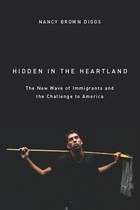 Hidden in the Heartland: The New Wave of Immigrants and the Challenge to America
Nancy Brown Diggs
Michigan State University Press, 2011 As other teens returned home from school, thirteen-year-old José Silva headed for work at a restaurant, where he would remain until 2:00 a.m. Francisca Herrera, a tomato picker, was exposed to pesticides while she was pregnant and gave birth to a baby without arms or legs. Silva and Herrera immigrated illegally to the United States, and their experiences are far from unique. In this comprehensive, balanced overview of the immigration crisis, Nancy Brown Diggs examines the abusive, unethical conditions under which many immigrants work, and explores how what was once a border problem now extends throughout the country. Drawing from a wide spectrum of sources, Hidden in the Heartland demonstrates how the current situation is untenable for both illegal immigrants and American citizens. A vivid portrait of the immigration crisis, the book makes a passionate case for confronting this major human rights issue—a threat to the very unity of the country.
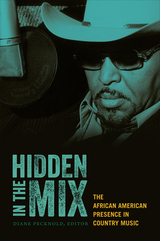 Hidden in the Mix: The African American Presence in Country Music
Diane Pecknold, ed.
Duke University Press, 2013 Country music's debt to African American music has long been recognized. Black musicians have helped to shape the styles of many of the most important performers in the country canon. The partnership between Lesley Riddle and A. P. Carter produced much of the Carter Family's repertoire; the street musician Tee Tot Payne taught a young Hank Williams Sr.; the guitar playing of Arnold Schultz influenced western Kentuckians, including Bill Monroe and Ike Everly. Yet attention to how these and other African Americans enriched the music played by whites has obscured the achievements of black country-music performers and the enjoyment of black listeners. The contributors to Hidden in the Mix examine how country music became "white," how that fictive racialization has been maintained, and how African American artists and fans have used country music to elaborate their own identities. They investigate topics as diverse as the role of race in shaping old-time record catalogues, the transracial West of the hick-hopper Cowboy Troy, and the place of U.S. country music in postcolonial debates about race and resistance. Revealing how music mediates both the ideology and the lived experience of race, Hidden in the Mix challenges the status of country music as "the white man’s blues." Contributors. Michael Awkward, Erika Brady, Barbara Ching, Adam Gussow, Patrick Huber, Charles Hughes, Jeffrey A. Keith, Kip Lornell, Diane Pecknold, David Sanjek, Tony Thomas, Jerry Wever
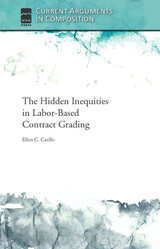 The Hidden Inequities in Labor-Based Contract Grading
Ellen C. Carillo
Utah State University Press, 2021 Current Arguments in Composition Series The Hidden Inequities in Labor-Based Contract Grading intervenes in the increasingly popular practice of labor-based grading by expanding the scope of this assessment practice to include students who are disabled and multiply marginalized. Through the lens of disability studies, the book critiques the assumption that labor is a neutral measure by which to assess students and explores how labor-based grading contracts put certain groups of students at a disadvantage. Ellen C. Carillo offers engagement-based grading contracts as an alternative that would provide a more equitable assessment model for students of color, those with disabilities, and students who are multiply marginalized.
This short book explores the history of labor-based grading contracts, reviews the scholarship on this assessment tool, highlights the ways in which it normalizes labor as an unbiased tool, and demonstrates how to extend the conversation in new and generative ways both in research and in classrooms. Carillo encourages instructors to reflect on their assessment practices by demonstrating how even assessment methods that are designed through a social-justice lens may unintentionally privilege some students over others.
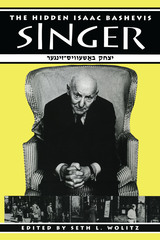 The Hidden Isaac Bashevis Singer
Edited by Seth L. Wolitz
University of Texas Press, 2002 Nobel Prize-winning author Isaac Bashevis Singer stands virtually alone among prominent writers for being more widely known through translations of his work than through the original texts. Yet readers and critics of the Yiddish originals have long pointed out that the English versions are generally shortened, often shorn of much description and religious matter, and their perspectives and denouements are significantly altered. In short, they turn the Yiddish author into a Jewish-American English writer, detached from of his Eastern European Jewish literary and cultural roots. By contrast, this collection of essays by leading Yiddish scholars seeks to recover the authentic voice and vision of the writer known to his Yiddish readers as Yitskhok Bashevis. The essays are grouped around four themes: - The Yiddish language and the Yiddish cultural experience in Bashevis's writings
- Thematic approaches to the study of Bashevis's literature
- Bashevis's interface with other times and cultures
- Interpretations of Bashevis's autobiographical writings
A special feature of this volume is the inclusion of Joseph Sherman's new, faithful translation of a chapter from Bashevis's Yiddish "underworld" novel Yarme and Keyle.
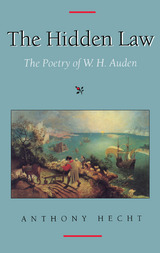 The Hidden Law: The Poetry of W. H. Auden
Anthony Hecht
Harvard University Press, 1993 Reviews of this book: "This is a book about poetry, about a poet who was dedicated to the art like few others of our time, whose poetic technique only another poet as gifted as Hecht could gloss...The richness of reference in this book to history, prosody, theology, poetry, punctuation, makes for a long swim in the heady liquor of poetry--not only Auden's poetry but that of the hundreds of authors whom Auden read...It is a pleasure to read." --Peter Davison, Atlantic "I know of no other instance of a poet of comparable mastery of his art and his experience taking up in such loving detail the work of a predecessor (and near contemporary)." --Richard Howard, Washington Post Book World "The Hidden Law's dispassionate critical voice unfolds a powerful meditation on the vicissitudes of the poetic life...It is at its most significant level a narrative of Anthony Hecht's emergence as a poet, and for all that the book tells us by implication, it takes its place alongside MacNeice's Yeats and Berryman's Crane." --Nicholas Jenkins, Times Literary Supplement "A work of the most keen-sighted love for the most keen-sighted poet of our century." --Joseph Brodsky
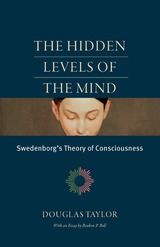 The Hidden Levels of the Mind: Swedenborg's Theory of Consciousness
DOUGLAS TAYLOR
Swedenborg Foundation Publishers, 2011 At the core of Swedenborg’s thought is the understanding that our purpose in this life is to progress spiritually—to learn, to grow, to do good works, and, ultimately, to allow as much of God’s love as possible to enter into us and manifest through us. Scattered throughout his works are descriptions of our mind and how it relates to both the physical and spiritual worlds. In this book, Taylor pulls these loose threads together and weaves them into a simple, coherent whole, presenting Swedenborg’s teachings as a system that anyone can follow. Taylor describes the external or natural mind as primarily concerned with material things, and the inner mind, in its essence, as love. As we elevate our thoughts toward higher and higher types of love and wisdom, we draw closer to God and begin the process of regeneration, or rebirth as spiritual beings. This is the first time in many decades that a book has been published on Swedenborg’s philosophy of the mind. Taylor’s straightforward commentary gives readers a rare insight into this crucial aspect of Swedenborg’s theology.
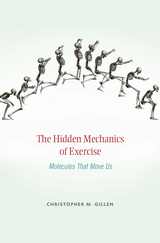 The Hidden Mechanics of Exercise: Molecules That Move Us
Christopher M. Gillen
Harvard University Press, 2014 As anyone who takes up a new sport quickly discovers, even basic athletic moves require high levels of coordination and control. Whether dribbling a basketball or hitting a backhand, limbs must be synchronized and bodies balanced, all with precise timing. But no matter how diligently we watch the pros or practice ourselves, the body’s inner workings remain invisible.
The Hidden Mechanics of Exercise reveals the microworld of the human body in motion, from the motor proteins that produce force, to the signaling molecules that activate muscles, to the enzymes that extract energy from nutrients. Christopher Gillen describes how biomolecules such as myosin, collagen, hemoglobin, and creatine kinase power our athletic movements. During exercise, these molecules dynamically morph into different shapes, causing muscles, tendons, blood, and other tissues to perform their vital functions. Gillen explores a wide array of topics, from how genetic testing may soon help athletes train more effectively, to how physiological differences between women and men influence nutrition. The Hidden Mechanics of Exercise tackles questions athletes routinely ask. What should we ingest before and during a race? How does a hard workout trigger changes in our muscles? Why does exercise make us feel good?
Athletes need not become biologists to race in a triathlon or carve turns on a snowboard. But Gillen, who has run ten ultramarathons, points out that athletes wishing to improve their performance will profit from a deeper understanding of the body’s molecular mechanisms.
The Hidden Model
David Yezzi
Northwestern University Press, 2003 From the huddling men in a Rembrandt print to an image in a bathroom mirror that might be Christ or a mere smudge, David Yezzi, with his precisely carved and subtly cutting language, questions and considers the surfaces of our perceptions and the life they conceal-that which suggests, asks, demands to be seen. In this deeply philosophical book, Yezzi deploys a mobile intelligence that reaches from the world of art to the landscape of the mind's cravings and demonstrates a capacious gift for using the formal techniques of poetry in unobtrusive and captivating ways, rendering verse that is both poetically rich and emotionally charged
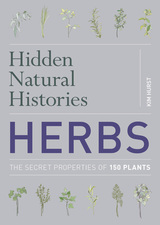 Hidden Natural Histories: Herbs
Kim Hurst
University of Chicago Press, 2015 Behind the pungent aroma of garlic and the cool, palate-cleansing taste of mint in our toothpaste are untold stories of human interactions with the natural world. Celebrating the human heritage of these and other natural phenomena, the new Hidden Natural Histories series offers fascinating insight into the cultivation and use of the bits of nature we take for granted in our daily lives. In Herbs, Kim Hurst concocts a delightful tale of the leafs, seeds, and flowers that for millennia have grown in our gardens, provided savor to our stews, and been used to treat our ailments. Many of herbs’ uses will surprise: rosemary, renowned for its piney flavor, has also been used to protect homes from thieves, aid memory, preserve youth, cure depression, and attract helpful garden elves. Packed with informative and beautiful illustrations—both new and from historical archives—Herbs will charm and enlighten anyone interested in our relationship with the natural world and will be a special delight for every chef, gourmand, gardener . . . or purveyor of garden elves.
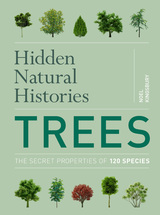 Hidden Natural Histories: Trees
Noel Kingsbury
University of Chicago Press, 2015 Behind the cedar scent of fresh pencil shavings and the slightly bitter tang of orange in our marmalade are untold stories of human interactions with the natural world. Celebrating the human heritage of these and other natural phenomena, the new Hidden Natural Histories series offers fascinating insight into the cultivation and use of the bits of nature we take for granted in our daily lives. In Trees, noted garden writer Noel Kingsbury turns his pen—or pencil—to the leafy life-forms that have warmed our hearths, framed our boats for ocean voyaging, and provided us shade on summer afternoons. From the fortitude of the ancient ginkgo tree to artistic depictions of quince fruit in the ruins of Pompeii, Kingsbury explores the culinary, medicinal, cultural, and practical uses of a forest of tree species. Packed with informative and beautiful illustrations—both new and from historical archives—Trees will charm and enlighten anyone interested in our relationship with the natural world and will be a special delight for every gardener, chef, and climber of trees.
 Hidden Nature: Wild Southern Caves
Michael Ray Taylor
Vanderbilt University Press, 2020 Reed Environmental Writing Award Finalist, Southern Environmental Law Center, 2021
More than ten thousand known caves lie beneath the state of Tennessee according to the Tennessee Cave Survey, a nonprofit organization that catalogs and maps them. Thousands more riddle surrounding states. In Hidden Nature, Michael Ray Taylor tells the story of this vast underground wilderness. In addition to describing the sheer physical majesty of the region’s wild caverns and the concurrent joys and dangers of exploring them, he examines their rich natural history and scientific import, their relationship to clean water and a healthy surface environment, and their uncertain future.
As a longtime caver and the author of three popular books related to caving—Cave Passages, Dark Life, and Caves—Taylor enjoys (for a journalist) unusual access to this secretive world. He is personally acquainted with many of the region’s most accomplished cave explorers and scientists, and they in turn are familiar with his popular writing on caves in books; in magazines such as Audubon, Outside, and Sports Illustrated; and on websites such as those of the Discovery Channel and the PBS science series Nova.
Hidden Nature is structured as a comprehensive work of well-researched fact that reads like a personal narrative of the author’s long attraction to these caves and the people who dare enter their hidden chambers.
 Hidden Nature: Wild Southern Caves
Michael Ray Taylor
Vanderbilt University Press, 2020 Reed Environmental Writing Award Finalist, Southern Environmental Law Center, 2021
More than ten thousand known caves lie beneath the state of Tennessee according to the Tennessee Cave Survey, a nonprofit organization that catalogs and maps them. Thousands more riddle surrounding states. In Hidden Nature, Michael Ray Taylor tells the story of this vast underground wilderness. In addition to describing the sheer physical majesty of the region’s wild caverns and the concurrent joys and dangers of exploring them, he examines their rich natural history and scientific import, their relationship to clean water and a healthy surface environment, and their uncertain future.
As a longtime caver and the author of three popular books related to caving—Cave Passages, Dark Life, and Caves—Taylor enjoys (for a journalist) unusual access to this secretive world. He is personally acquainted with many of the region’s most accomplished cave explorers and scientists, and they in turn are familiar with his popular writing on caves in books; in magazines such as Audubon, Outside, and Sports Illustrated; and on websites such as those of the Discovery Channel and the PBS science series Nova.
Hidden Nature is structured as a comprehensive work of well-researched fact that reads like a personal narrative of the author’s long attraction to these caves and the people who dare enter their hidden chambers.
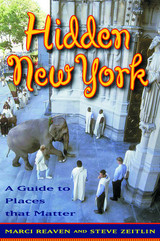 Hidden New York: A Guide to Places That Matter
Reaven, Marci
Rutgers University Press, 2006 Despite its innumerable tourist attractions, New York City still has many secrets, hidden in the most unlikely places. There is the Edison Hotel in Times Square, where magicians gather 'round the Magic Table to socialize and compete. There is Hua Mei Garden in the Lower East Side, where elderly Chinese men meet to display exotic birds. And there is Sahadi's in Brooklyn, where the culinary arts thrive, and New Yorkers go for just the right ingredients for a Middle Eastern meal. This book details thirty-two unusual locations such as these and enhances them by including a cluster of additional, related spots. Hidden New York shows you why these places matter and guides you through the historical and cultural significance of each one.
Many of them matter because of the opportunities they provide for socializing, such as the Empire Roller Disco in Brooklyn that attracts a community of skaters and the Cube sculpture on Astor Place, which is a meeting spot for homeless youth. Others matter because they are focal points for communities and the spaces are intertwined with how people share in each others' lives. Still others have been lost, like the house under the roller coaster in Coney Island, made famous by Woody Allen in Annie Hall.
This book is not just about Manhattan, but covers all five boroughs in New York City. It is an invitation to visit, revisit, learn, and enjoy all that you didn't know the city has to offer. It will show you what's there, what used to be there, and why it will be there for years to come. The chapters, illustrated with appealing black-and-white photos, include first-person remembrances and commentaries from New Yorkers themselves. Each entry functions as a small travel essay, evoking how certain destinations are experienced. As a guide to the New York City that is less traveled, this unique book shows that some of the best places to visit are ones that you never even thought existed.
The 32 Places That Matter
Hua Mei Bird Garden
Russian and Turkish Tenth Street Baths
Bohemian Hall and Beer Garden
The Magic Table at the Edison Hotel
The General Society of Mechanics and Tradesman
Webster Hall
The Cube
Stickball Boulevard and the Stadiums of the Street
Thomas Jefferson Park Pool
Empire Roller Skating Center
Chess Havens
Coney Island
The Lemon Ice King of Corona
Coney Island Bialys and Bagels
Sahadi's Specialty and Middle Eastern Foods
Arthur Avenue Market
Union Square Greenmarket
The Village Vanguard
Casa Amadeo Record Shop
Richmond Barthé's Frieze at Kingsborough Houses
Quirky Features of the Landscape
Art in the Subways
Governors Island
Casita Rincón Criollo, Magnolia Tree Earth Center, Liz Christy Bowery-Houston Community Garden
The Flower District
Fishing around New York
Kehila Kedosha Janina Synagogue and Museum
Masjid Al-Taqwa
Ganesha Hindu Temple
Our Lady of Mount Carmel Grotto
The Memorials of the Battery
Strawberry Fields
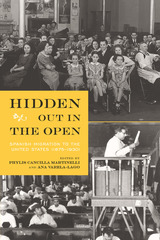 Hidden Out in the Open: Spanish Migration to the United States (1875-1930)
Phylis Cancilla Martinelli
University Press of Colorado, 2018 Hidden Out in the Open is the first English-language volume on Spanish migration to the United States in the late nineteenth and early twentieth centuries. This panoramic study covers a period defined by the crucial transformations of the Progressive Era in the United States, and by similarly momentous changes in Spain following the Restoration of the Bourbon monarchy under Alfonso XII.
The chapters in this volume are geographically wide-ranging, reflecting the transnational nature of the Spanish diaspora in the Americas, encompassing networks that connected Spain, Cuba, Latin American countries, the United States, and American-controlled territories in Hawai’i and Panama. The geographic diversity reveals the different jobs immigrants engaged in, from construction gangs in the Panama Canal to mining crews in Arizona and West Virginia. Contributors analyze the Spanish experience in the United States from a variety of perspectives, discussing rural and urban enclaves, the role of the state, and the political mobilization of migrants, using a range of methodological approaches that examine ethnicity, race, gender, and cultural practices through the lenses of sociology, history, and cultural studies.
The mention of the Spanish influence in the United States often conjures up images of conquistadores and padres of old. Forgotten in this account are the Spanish immigrants who reached American shores in the late nineteenth and early twentieth centuries. Hidden Out in the Open reveals the role of the modern migration of Spaniards in this "land of immigrants" and rectifies the erasure of Spain in the American narrative. The book will be of interest to scholars and students of US history and the history of modern Spain and Europe, as well as those interested ethnic and migration/diaspora studies, Hispanic/Latino studies, and the study of working class and radicalism.
Contributors: Brian D. Bunk, Christopher J. Castañeda, Thomas Hidalgo, Beverly Lozano, Phylis Cancilla Martinelli, Gary R. Mormino, George E. Pozzetta†, Ana Varela-Lago.
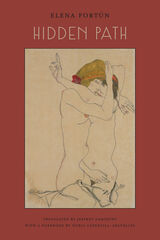 Hidden Path
Elena Fortún
Swan Isle Press, 2020 Set in early twentieth-century Spain, Hidden Path is a lyrical coming-of-age novel told from the perspective of a woman painter who struggles to find her way with art and with the women she loved. The novel is narrated in the first-person, following María Luisa as she reflects on her life from the turn of the twentieth century through the outset of the Second Spanish Republic (1931-1939). She recalls growing from an imaginative tomboy into a docile wife and mother before claiming her independence as a portrait painter in Madrid’s bohemian and queer circles. Along the way, she introduces us to a lively cast of characters who both hinder and encourage her efforts to blaze her own path. The poetic and sensuous language of María Luisa’s private reveries comingles with agile dialogue as the protagonist leads us through her life.
Best known in Spain as a writer of children’s literature, Elena Fortún left this manuscript unpublished at the time of her death in 1952, as its semi-autobiographical content risked provoking homophobic backlash under the dictatorship of Francisco Franco. The first Spanish edition appeared in 2016 and was hailed as Fortún’s adult masterpiece, a previously unknown complement to her children’s saga Celia and Her World. This edition, with Jeffrey Zamostny’s sensitive and nuanced translation, marks the novel’s first time appearing in any language aside from Spanish; it is also the first of Fortún’s works to appear in English. With an insightful foreword by scholar Nuria Capdevila-Argüelles, this volume will be an influential contribution to women’s studies, LGBT histories, and Spanish literature and culture.
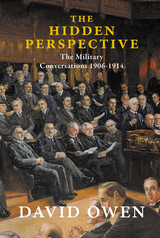 The Hidden Perspective: The Military Conversations 1906-1914
David Owen
Haus Publishing, 2014 In 1905, British Foreign Secretary Edward Grey agreed to speak secretly with his French counterparts about sending a British expeditionary force to France in the event of a German attack. Neither Parliament nor the rest of the Cabinet was informed. The Hidden Perspective takes readers back to these tense years leading up to World War I and re-creates the stormy Cabinet meetings in the fall of 1911 when the details of the military conversations were finally revealed.
Using contemporary historical documents, David Owen, himself a former foreign secretary, shows how the foreign office’s underlying belief in Britain’s moral obligation to send troops to the Continent influenced political decision-making and helped create the impression that war was inevitable. Had Britain’s diplomatic and naval strategy been handled more skillfully during these years, Owen contends, the carnage of World War I might have been prevented altogether.
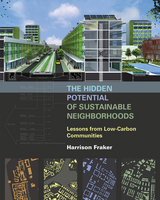 The Hidden Potential of Sustainable Neighborhoods: Lessons from Low-Carbon Communities
Harrison Fraker
Island Press, 2013 How do you achieve effective low-carbon design beyond the building level? How do you create a community that is both livable and sustainable? More importantly, how do you know if you have succeeded? Harrison Fraker goes beyond abstract principles to provide a clear, in-depth evaluation of four first generation low-carbon neighborhoods in Europe, and shows how those lessons can be applied to the U.S. Using concrete performance data to gauge successes and failures, he presents a holistic model based on best practices.
The four case studies are: Bo01 and Hammarby in Sweden, and Kronsberg and Vauban in Germany. Each was built deliberately to conserve resources: all are mixed-used, contain at least 1,000 units, and have aggressive goals for energy and water efficiency, recycling, and waste treatment.
For each case study, Fraker explores the community's development process and goals and objectives as they relate to urban form, transportation, green space, energy, water and waste systems, and a social agenda. For each model, he looks at overall performance and lessons learned.
Later chapters compare the different strategies employed by the case-study communities and develop a comprehensive model of sustainability, looking specifically at how these lessons can be employed in the United States, with a focus on retrofitting existing communities. This whole-systems approach promises not only a smaller carbon footprint, but an enriched form of urban living.
The Hidden Potential of Sustainable Neighborhoods will be especially useful for urban designers, architects, landscape architects, land use planners, local policymakers and NGOs, citizen activists, students of urban design, planning, architecture, and landscape architecture.
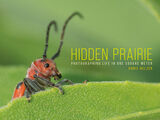 Hidden Prairie: Photographing Life in One Square Meter
Chris Helzer
University of Iowa Press, 2020 Chris Helzer illustrates the beauty and diversity of prairie through an impressive series of photographs, all taken within the same square meter of prairie. During his year-long project, he photographed 113 plant and animal species within a tiny plot, and captured numerous other images that document the splendor of diverse grasslands. Even readers familiar with prairies will be fascinated by the varied subject matter Helzer captured with his camera. In addition, his captivating and accessible natural history writing tells the story of his personal journey during the project and the stories of the characters he found within his chosen square meter of prairie.
This book is packed with gorgeous full-page close-up photos of prairie plants and animals, interspersed with a dozen short essays that include both ecology and natural history tidbits and enthralling and gently humorous anecdotes about Helzer’s experience staring into a tiny bit of prairie for one year. Helzer writes eloquently about the conservation value of prairies and uses his photos and stories to reinforce a conservation ethic among his readers.
 The Hidden Reader: Stendhal, Balzac, Hugo, Baudelaire, Flaubert
Victor Brombert
Harvard University Press, 1988 Victor Brombert is an unrivaled interpreter of French literature; and the writers he considers in this latest book are ones with whom he has a long acqualntance. These essays--eleven of them appearing in English for the first time and some totally new--give us an acute analysis of the major figures of the nineteenth century and a splendid lesson in criticism.
Brombert shows how a text works--its structure and narrative devices, and the symbolic function of characters, episodes, words--and he highlights the distinctive postures and styles of each writer. He gives us a sense of the hidden inner text as well as the techniques writers have devised to lead their readers to the discovery of what is hidden. With wonderful subtlety he unravels the reader's participatory response, whether it be Hugo reading Shakespeare, Sartre reading Hugo, Stendhal reading Rousseau, T. S. Eliot misreading Baudelaire, or Baudelaire, Balzac, and Flaubert reading their own sensibilities. This book is a sterling example of the finest kind of literary criticism--wise, intelligent, responsive, sympathetic--that reveals central aspects of the creative process and returns the reader joyfully to the texts themselves.
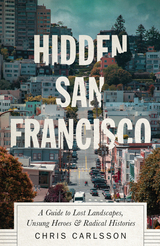 Hidden San Francisco: A Guide to Lost Landscapes, Unsung Heroes and Radical Histories
Chris Carlsson
Pluto Press, 2020 "Carlsson brings his unique combination of erudition, curiosity and passionate progressivism to a remarkably wide range of subjects—from the city’s profaned natural glories, to little-known episodes in its labor history, to a Homeric list of people, organizations and movements" —Gary Kamiya, Columnist, San Francisco Chronicle
Hidden San Francisco is a guidebook like no other. It’s a radical, alternative guidebook and history of San Francisco, complete with maps detailing walking and bike routes around the city.
San Francisco is an iconic and symbolic city. But only when you look beyond the picture-postcards of the Golden Gate Bridge and the quaint cable cars do you realize that the city's most interesting stories are not the Summer of Love, the Beats or even the latest gold rush in Silicon Valley.
Carlsson delves into the Bay Area's long prehistory, examining the region's geography and the lives of its inhabitants before the 1849 Gold Rush changed everything, setting in motion the clash between capital and labor that shaped the modern city. Structured around the four major themes of ecology, labor, transit and dissent, Chris Carlsson’s book peels back the layers of San Francisco's history to reveal a storied past: behind old walls and gleaming glass facades lurk former industries, secret music and poetry venues, forgotten terrorist bombings, and much more.
From the perspective of the students and secretaries, hippies and beatniks, longshoremen and waitresses, Hidden San Francisco uncovers dozens of overlooked, forgotten and buried histories that pulse through the streets and hills even today, inviting the reader to see themselves in the middle of the ongoing, everyday process of making history together.
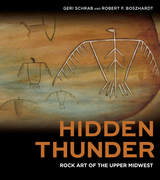 Hidden Thunder: Rock Art of the Upper Midwest
Geri Schrab
Wisconsin Historical Society Press, 2016 In Hidden Thunder, renowned watercolor artist Geri Schrab and archaeologist Robert "Ernie" Boszhardt give readers an up-close-and-personal look at rock art. With an eye toward preservation, Schrab and Boszhardt take you with them as they research, document, and interpret at the ancient petroglyphs and pictographs made my Native Americans in past millennia. In addition to publicly accessible sites such as Wisconsin’s Roche-a-Cri State Park and Minnesota’s Jeffers Petroglyphs, Hidden Thunder covers the artistic treasures found at several remote and inaccessible rock art sites—revealing the ancient stories through words, full-color photographs, and artistic renditions. Offering the duo perspectives of scientist and artist, Boszhardt shares the facts that archaeologists have been able to establish about these important artifacts of our early history, while Schrab offers the artist's experience, describing her emotional and creative response upon encountering and painting these sites. Viewpoints by members of the Menominee, Ho-Chunk, Ojibwe, and other Native nations offer additional insight on the historic and cultural significance of these sites. Together these myriad voices reveal layers of meaning and cultural context that emphasize why these fragile resources—often marred by human graffiti and mishandling or damage from the elements—need to be preserved.
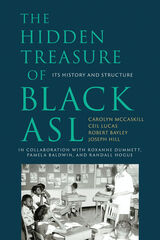 The Hidden Treasure of Black ASL: Its History and Structure
Carolyn McCaskill
Gallaudet University Press, 2020 Black ASL has long been recognized as a distinct variety of American Sign Language based on abundant anecdotal evidence. The Hidden Treasure of Black ASL, originally published in 2011, presents the first sociohistorical and linguistic study of this language variety. Based on the findings of the Black ASL Project, which undertook this unprecedented research, Hidden Treasure documents the stories and language of the African American Deaf community. With links to online supplemental video content that includes interviews with Black ASL users (formerly on DVD), this volume is a groundbreaking scholarly contribution and a powerful affirmation for Black Deaf people.
This paperback edition includes an updated foreword by Glenn B. Anderson, a new preface that reflects on the impact of this research, and an expanded list of references and resources on Black ASL.
The supplemental video content is available online at the Gallaudet University Press YouTube Channel. Under Playlists, click “The Hidden Treasure of Black ASL: Companion Video to the Book.” The original Black ASL Project research videos are also available.
Featured in the film Signing Black in America: The Story of Black ASL, produced by The Language and Life Project at North Carolina State University (Dr. Walt Wolfram, Executive Producer). Look for it on PBS.
Hidden Truths from Eden: Esoteric Readings of Genesis 1-3
Caroline Vander Stichele
SBL Press, 2014 Examine a rich history of spiritual interpretations from antiquity to the present
Since the sixteenth century CE, the field of biblical studies has focused on the literal meaning of texts. This collection seeks to rectify this oversight by integrating the study of esoteric readings into academic discourse. Case studies focusing on the first three chapters of Genesis cover different periods and methods from early Christian discourse through zoharic, kabbalistic and alchemical literature to modern and post-postmodern approaches.
Features:
- Discussions, comparisons, and analyses of esoteric appropriations of Genesis 1–3
- Essays on creation myths, gender, fate and free will, the concepts of knowledge, wisdom, and gnosis
- Repsonses to papers that provide a range of view points
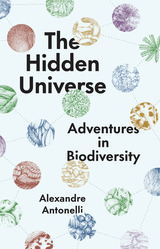 The Hidden Universe: Adventures in Biodiversity
Alexandre Antonelli
University of Chicago Press, 2022 An unforgettable exploration of the natural world and the concept of biodiversity—what it is, why it matters, and how we as individuals can work to preserve it.
We are now living in an environmental emergency. As climate change, habitat loss, and other threats have placed almost one-fifth of all species on Earth at risk of extinction in the coming decades, a deeper understanding of biodiversity has never been more important. Biodiversity encompasses the rich variety of all life on Earth—the building blocks of life that provide invaluable sources of food, medicine, clothing, building materials, and more.
Marking the arrival of a bold new voice in popular science, The Hidden Universe shows readers what’s at stake in the fight to protect and restore biodiversity, but also what can and should be done now to protect our planet and ourselves for the future. As director of science at one of the world’s largest research organizations in plant and fungal sciences, Brazilian-born scientist Alexandre Antonelli is ideally suited to reveal the wonders of biodiversity at a genetic, species, and ecosystem level—what biodiversity is, how it works, and why it is the most important tool in our battle against climate change. Antonelli offers recommendations for large-scale political changes, as well as smaller, practical steps that readers can implement in their own lives and homes. With Antonelli as our guide, The Hidden Universe helps us imagine a future where biodiversity is not just preserved but cherished.
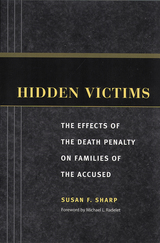 Hidden Victims: The Effects of the Death Penalty on Families of the Accused
Sharp, Susan F
Rutgers University Press, 2005 "Sharp’s book reemphasizes the tremendous costs of maintaining the death penalty—costs to real people and real families that ripple throughout generations to come."—Saundra D. Westervelt, author of Shifting the Blame: How Victimization Became a Criminal Defense "Everyone concerned with the effects of capital punishment must have this book."—Margaret Vandiver, professor, department of criminology and criminal justice, University of Memphis Murderers, particularly those sentenced to death, are considered by most to be unusually heinous, often sub-human, and entirely different from the rest of us. In Hidden Victims, sociologist Susan F. Sharp challenges this culturally ingrained perspective by reminding us that those individuals facing a death sentence, in addition to being murderers, are brothers or sisters, mothers or fathers, daughters or sons, relatives or friends. Through a series of vivid and in-depth interviews with families of the accused, she demonstrates how the exceptionally severe way in which we view those on death row trickles down to those with whom they are closely connected. Sharp shows how family members and friends—in effect, the indirect victims of the initial crime—experience a profoundly complicated and socially isolating grief process. Departing from a humanist perspective from which most accounts of victims are told, Sharp makes her case from a sociological standpoint that draws out the parallel experiences and coping mechanisms of these individuals. Chapters focus on responses to sentencing, the particular structure of grieving faced by this population, execution, aftermath, wrongful conviction, family formation after conviction, and the complex situation of individuals related to both the killer and the victim. Powerful, poignant, and intelligently written, Hidden Victims challenges all of us—regardless of which side of the death penalty you are on—to understand the economic, social, and psychological repercussions that shape the lives of the often forgotten families of death row inmates.
 The Hidden War: Crime and the Tragedy of Public Housing in Chicago
Popkin, Susan J
Rutgers University Press, 2000 Since the late 1970s, the high-rise developments of the Chicago Housing Authority (CHA) have been dominated by gang violence and drugs, creating a sense of hopelessness among residents. Despite a lengthy war on crime, costing hundreds of millions of dollars, the CHA has been unable to reduce the violence that makes life intolerable. Focusing on three developments—Rockwell Gardens, Henry Horner Homes, and Harold Ickes Homes—Sue Popkin and her co-authors interview residents, community leaders, and CHA staff. The Hidden War chronicles the many failed efforts of the CHA to combat crime and improve its developments, offering a vivid portrait of what life is like when lived among bullets, graffiti, and broken plumbing.
Most families living in these developments are headed by African American single mothers. The authors reveal the dilemmas facing women and children who are often victims or witnesses of violent crime, and yet are dependent on the perpetrators and their drug-dominant economy. The CHA—plagued by financial scandals, managerial incompetence, and inconsistent funding—is no match for thegang-dominated social order. Even well-intentioned initiatives such as the recent effort to demolish and “revitalize” the worst developments seem to be ineffective at combating crime, while the drastic changes leave many vulnerable families facing an uncertain future. The Hidden War sends a humbling message to policy makers and prognosticators who claim to know the right way to “solve poverty.”
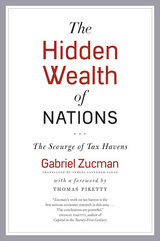 The Hidden Wealth of Nations: The Scourge of Tax Havens
Gabriel Zucman
University of Chicago Press, 2015 We are well aware of the rise of the 1% as the rapid growth of economic inequality has put the majority of the world’s wealth in the pockets of fewer and fewer. One much-discussed solution to this imbalance is to significantly increase the rate at which we tax the wealthy. But with an enormous amount of the world’s wealth hidden in tax havens—in countries like Switzerland, Luxembourg, and the Cayman Islands—this wealth cannot be fully accounted for and taxed fairly. No one, from economists to bankers to politicians, has been able to quantify exactly how much of the world’s assets are currently hidden—until now. Gabriel Zucman is the first economist to offer reliable insight into the actual extent of the world’s money held in tax havens. And it’s staggering.
In The Hidden Wealth of Nations, Zucman offers an inventive and sophisticated approach to quantifying how big the problem is, how tax havens work and are organized, and how we can begin to approach a solution. His research reveals that tax havens are a quickly growing danger to the world economy. In the past five years, the amount of wealth in tax havens has increased over 25%—there has never been as much money held offshore as there is today. This hidden wealth accounts for at least $7.6 trillion, equivalent to 8% of the global financial assets of households. Fighting the notion that any attempts to vanquish tax havens are futile, since some countries will always offer more advantageous tax rates than others, as well the counter-argument that since the financial crisis tax havens have disappeared, Zucman shows how both sides are actually very wrong. In The Hidden Wealth of Nations he offers an ambitious agenda for reform, focused on ways in which countries can change the incentives of tax havens. Only by first understanding the enormity of the secret wealth can we begin to estimate the kind of actions that would force tax havens to give up their practices.
Zucman’s work has quickly become the gold standard for quantifying the amount of the world’s assets held in havens. In this concise book, he lays out in approachable language how the international banking system works and the dangerous extent to which the large-scale evasion of taxes is undermining the global market as a whole. If we are to find a way to solve the problem of increasing inequality, The Hidden Wealth of Nations is essential reading.
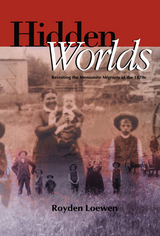 Hidden Worlds: Revisiting the Mennonite Migrants of the 1870s
Royden Loewen
University of Manitoba Press, 2001 In the 1870s, approximately 18,000 Mennonites migrated from the southern steppes of Imperial Russia (present-day Ukraine) to the North American grasslands. They brought with them an array of cultural and institutional features that indicated they were a "transplanted" people. What is less frequently noted, however, is that they created in their everyday lives a world that ensured their cultural longevity and social cohesiveness in a new land.Their adaptation to the New World required new concepts of social boundary and community, new strategies of land ownership and legacy, new associations, and new ways of interacting with markets. In Hidden Worlds, historian Royden Loewen illuminates some of these adaptations, which have been largely overshadowed by an emphasis on institutional history, or whose sources have only recently been revealed. Through an analysis of diaries, wills, newspaper articles, census and tax records, and other literature, an examination of inheritance practices, household dynamics, and gender relations, and a comparison of several Mennonite communities in the United States and Canada, Loewen uncovers the multi-dimensional and highly resourceful character of the 1870s migrants.
 Hide and Seek: The Child between Psychoanalysis and Fiction
Virginia L. Blum
University of Illinois Press, 1995 In response to widespread cultural fantasies about the child--including childhood innocence, the child as origin of the adult, the fetal emergence of subjectivity, and the "inner child" movement--Hide and Seek examines representations of the child in fiction, psychoanalysis, and popular culture.
Concentrating on the "go-between" function of the child in nineteenth- and twentieth-century American and British fiction, Virginia Blum shows how selected children in the works of L. P. Hartley, Charles Dickens, Henry James, and Vladimir Nabokov were actually fictional messengers who ultimately were unsuccessful at reconciling impasses in the adult world.
Throughout her book Blum draws on pop images of real and fictional children, ranging from the Baby Jessica case, in which the idea of "real" paternity and family bonds comes to the mythic fore, to the film Home Alone, in which the abandoned child becomes protector of his family's hearth and home. Hide and Seek raises provocative questions about the ways in which our culture fetishizes the idea of the child at the same time that we treat with comparative indifference the conditions under which many real children actually live.
"A work of striking originality and consistent intellectual honesty, forcing us into genuinely profound and darkly uncomfortable areas of speculation." -- James R. Kincaid, author of Child-Loving: The Erotic Child and Victorian
Culture
|
|
